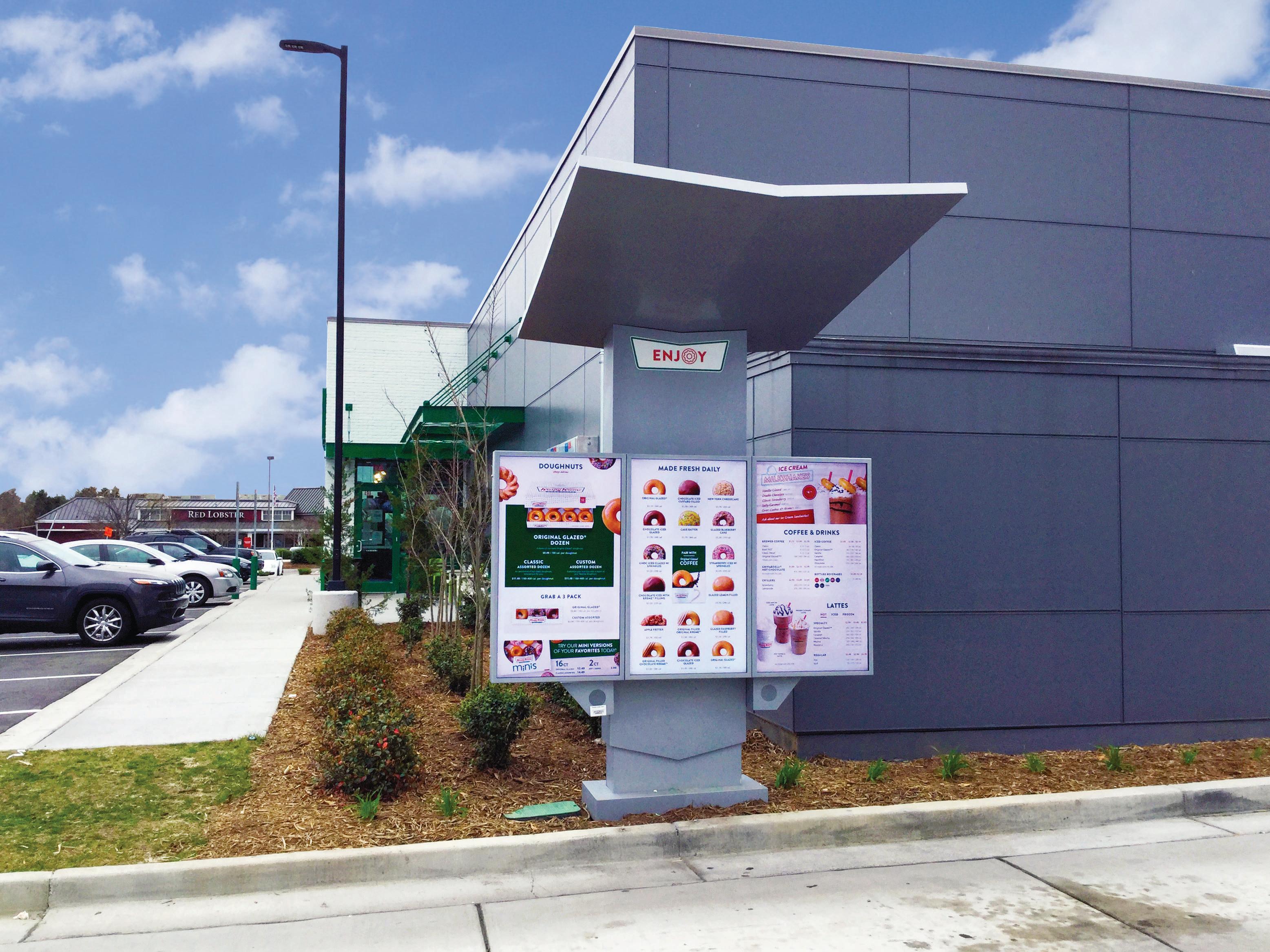TACO BELL DEFIES GRAVITY




One of the most ambitious designs in fast-food history is hardly a blip on the radar.






One of the most ambitious designs in fast-food history is hardly a blip on the radar.

An era of innovation has created a more demanding consumer than ever— and that’s a great sign for quick-service restaurants.





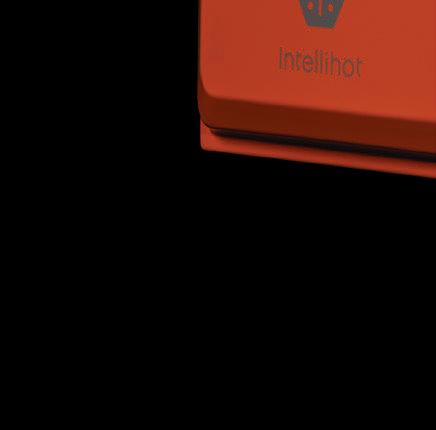





12


To Retain the Best Employees, Exceed Their Expectations
Better benefits, including faster pay, show employees they’re respected and understood.


60 Percent of Your Customers
A new solution helps engage every patron—without any extra work.
SPONSORED BY LEDGERPAY


24

20


From Timer to Headset: Integrated Alerts Maximize E ciency and Profitability





Deliver actionable performance insights to key sta when it matters most. SPONSORED BY HME HOSPITALITY AND SPECIALTY COMMUNICATIONS
How This Franchise Group Measurably Improved Operations in Real Time Video surveillance can improve operational e ciency—and provide brand protection. SPONSORED BY ENVYSION
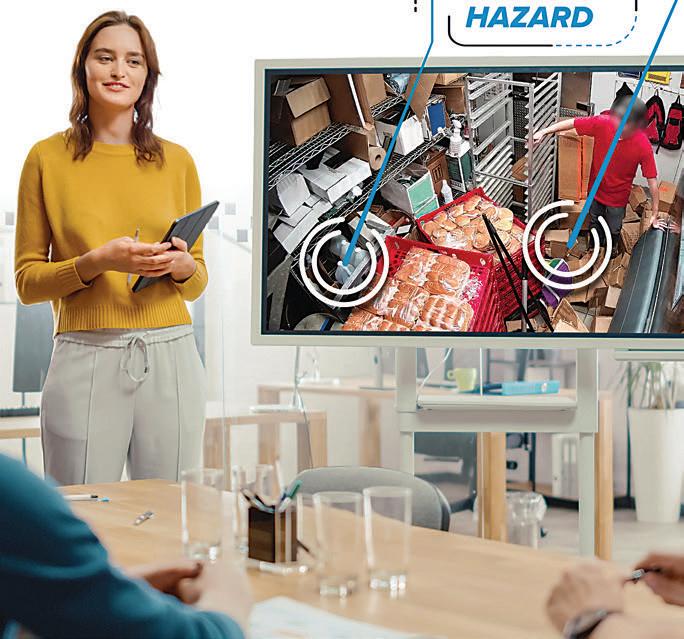





36 DoorDash Revamps Its Merchant Suite to Help Restaurants Grow



The platform empowers operators to boost business. SPONSORED BY DOORDASH
EDITORIAL
EDITORIAL DIRECTOR
Danny Klein dklein@wtwhmedia.com
MANAGING EDITOR
Nicole Duncan nduncan@wtwhmedia.com
SENIOR EDITOR

Ben Coley bcoley@wtwhmedia.com
CUSTOM MEDIA STUDIO DIRECTOR OF CUSTOM CONTENT

Peggy Carouthers pcarouthers@wtwhmedia.com
ASSOCIATE EDITOR, CUSTOM CONTENT Charlie Pogacar cpogacar@wtwhmedia.com
ASSOCIATE EDITOR, CUSTOM CONTENT Kara Phelps kphelps@wtwhmedia.com

ART & PRODUCTION ART DIRECTOR Tory Bartelt tbartelt@wtwhmedia.com
GRAPHIC DESIGNER Erica Naftolowitz enaftolowitz@wtwhmedia.com
PRODUCTION MANAGER Mitch Avery mavery@wtwhmedia.com
SALES & BUSINESS DEVELOPMENT GROUP PUBLISHER Greg Sanders gsanders@wtwhmedia.com
NATIONAL SALES DIRECTOR Eugene Drezner edrezner@wtwhmedia.com
919-945-0705
NATIONAL SALES MANAGER Edward Richards erichards@wtwhmedia.com

919-945-0714
NATIONAL SALES MANAGER Amber Dobsovic adobsovic@wtwhmedia.com 919-945-0712
NATIONAL SALES MANAGER John Krueger jkrueger@wtwhmedia.com
919-945-0728
SALES SUPPORT AND DIRECTORY SALES Tracy Doubts tdoubts@wtwhmedia.com 919-945-0704
FOUNDER Webb C. Howell
ADMINISTRATION
919-945-0700 / www.qsrmagazine.com/subscribe
QSR is provided without charge upon request to individuals residing in the U.S. who meet subscription criteria as set forth by the publisher.

REPRINTS
The YGS Group 800-290-5460
FAX: 717-825-2150 qsrmagazine@theygsgroup.com www.qsrmagazine.com/reprints
Sponsored content in this magazine is provided to the represented company for a fee. Such content is written to be informational and non-promotional. Comments welcomed at sponsoredcontent@qsrmagazine.com.
WTWH MEDIA LLC RETAIL, HOSPITALITY, AND FOOD GROUP


Iwas sitting at my desk one June morning when a Twitter notification popped in with the all-seeing blue check mark. Their expert take?
“QSR ’s breathless coverage of a Taco Bell is pretty over the top. ‘Arguably the most ambitious prototype’ in restaurant history, it says.”
Firstly, let me say this: If there is somebody out there who is going to provide “breathless coverage” of a Taco Bell, it’s going to be us. I wear that as a badge of honor. But I think it’s worth talking about the broader concept here. One of the most worn lines I’ve heard over my time covering restaurants is that it’s historically behind the tech train. Really, food and food delivery in particular, entered the pandemic playing catch-up in terms of digital integration. Change has come so fast since, though, we might not realize what the present view feels like. The idea you can read about a two-story drive-thru where tacos drop down from the sky (this analogy will make sense after you read the article on page 26 ) and roll through an entire process in under 2 minutes without ever speaking to somebody is nothing shy of remarkable. Was it on the radar a couple of years ago? I think so. There was simply no rush to bring that contactless ideal to market on a streamlined scale such as what Taco Bell is doing. So this Twitter interaction, to me, felt a lot like what much of social media has become, not to jump on a soap box. You either celebrate or become a contrarian—there’s not a ton of reaction in the middle. However, the way I’ll choose to embrace this point is by grasping what it represents on a large scale; that opening such a restaurant (which, by the way, is the








most ambitious prototype in Taco Bell’s history, I’ll stand by that ) has become a part of the quick-service story. There is still a lot of innovation left on the plate, as we’ll get into in this year’s Drive-Thru Report; order confirmation boards; reconfigured kitchen flow; double lanes; and AI—there isn’t a large-scale quickserve in America that hasn’t at least had discussions on one, if not all, of these topics of late. Something I would suggest for anybody who remains a skeptic is to drive through a Chick-fil-A setup, but look at the experience through a different lens. What the brand has done perhaps better than any chain is take its in-store hospitality and extrapolate that to a line of cars. Yet the misconception is that they’ve done so as some anti-technology mindset rooted in the “old ways.” That is nowhere near accurate. Chick-fil-A is fine-tuning what the industry as a whole is barreling toward—the notion innovation can now enhance a brand’s core traits rather than replace them. And you’re seeing that unfold everywhere you look. We’ve gone past the stage of digital adoption for the sake of survival and into a world where guests are dictating the terms. No place is that more vivid than the drive-thru. And yes, expect no shortage of “over-the-top” coverage as we keep learning more.







Our exceptional line of stand-up bags make it more convenient to prepare desserts and beverages with premium Ghirardelli Chocolate.

CONVENIENT Smaller bags are easy to pour and store.
ACCESSIBLE Flexible offerings let you mix and match different chocolate varieties.
VERSATILE Couverture chocolate formats are perfect for flavoring, coating, melting, and glazing. Non-couverture chips hold up well when baked.
Explore the new line and request your samples today.*





Auntie Anne’s new collaboration made guests feel like they were biting into a warm pretzel with every sip.



















Not just a beer that tastes like pretzels, but one that’s actually brewed with them, too.



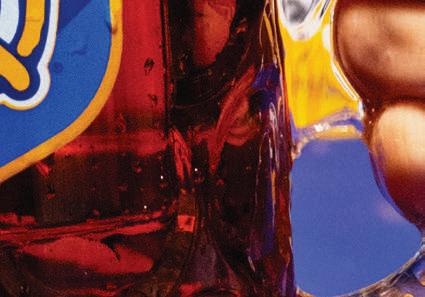










Auntie Anne’s and Philadelphia-based Evil Genius Beer Company put the answer in the hands of customers with an Oktoberfest-style lager released in time for the beer-centric celebration.






The new brew was an innovative riff on the Oktoberfest beer style; brewed not only with imported German hops and malts, but also with fresh-baked Auntie Anne’s soft pretzels. The release marked the first time Auntie Anne’s pretzels were used as an ingredient to develop and




create a unique beer available for purchase.




The flavor profile featured all the makings of a classic Oktoberfest, such as a rich malt backbone balanced by delicate hop character, and a prominent toasty flavor profile rounded out with pleasant salinity. "It was important to us to not only create a beer made with our iconic pretzels, but also a beer that could be enjoyed alongside our pretzels,” says Danika Brown, director of brand marketing at Auntie Anne’s.

The industry was one the pandemic’s early rocket ships. Guests raced to comfort food and categories they were familiar ordering o -premises from. Tack on technology and systems these brands nurtured for years and you had a tailwind few segments could compete with. But the pizza world has undergone its share of disruption of late. The hunt for delivery drivers and a suddenly bursting field of delivery and pickup options has forced industry power players and upstarts alike to shift tack. Direct mail marketing company Mail Shark launched a “Cracking the Code” report for the pizzeria industry. Here were some of the findings:
HOW LONG ARE MOST CUSTOMERS ACTUALLY WILLING TO WAIT FOR FOOD WHEN ORDERING DELIVERY?




WHAT IS YOUR PREFERRED METHOD OF PLACING ORDERS FROM RESTAURANTS FOR DELIVERY PICKUP?
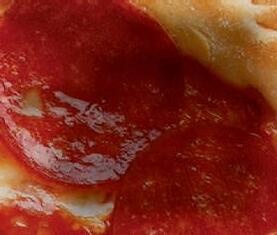














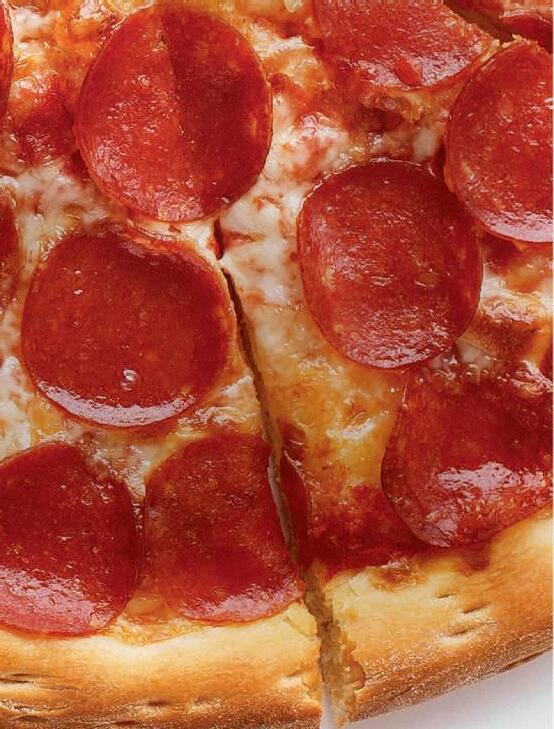

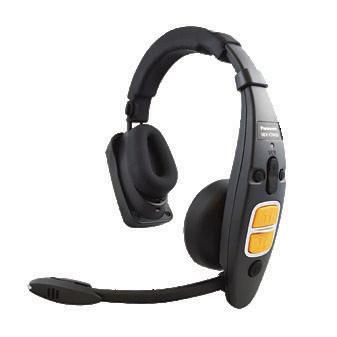
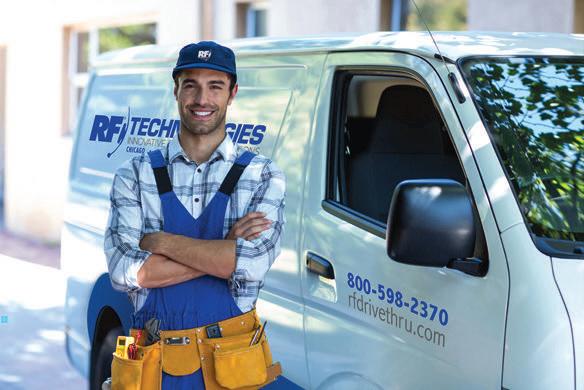


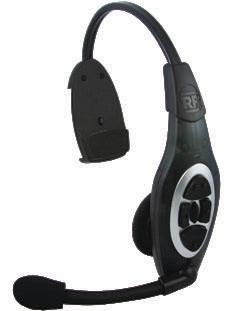








The backbone of the restaurant industry is its workers. That’s a reality the COVID-19 pandemic and the subsequent labor shortage drove home to any operators who may have been reluctant to acknowledge it beforehand.
“It’s time for employers to catch up with the times and start treating front-line associates like kings and queens,” says Stewart Stockdale, co-founder, chairman, and CEO of Rellevate, a digital banking services platform. “I’ve run Fortune 500 companies, and we’ve always said hourly employees need to be at the top of the pyramid.”
Restaurants depend on their employees bringing their best every day. To do so, people need to feel safe, empowered, and valued. What’s more—if they aren’t getting those needs met, they’ll take their work to the next company or industry. As the gig economy grows stronger, the flexibility of working on an as-needed basis is drawing many people away from shift-based work—and replacements aren’t so easy to come by anymore. The U.S. Bureau of Labor Statistics recently found there are 1 million fewer workers in the hospitality industry today than in 2019.
“The world is changing, and the quickservice industry has to rethink its employment practices,” Stockdale says. “To say that ‘people don’t want to work’ is shortsighted. People have
real reasons they stopped working or switched industries—from not wanting to get sick from face-to-face interactions and covering childcare needs to needing more flexible hours, benefits, and on-demand pay.”
Replacing former employees is a costly line item. A recent case study from Rellevate found each new hourly quick-service hire is a $2,000 expense. With turnover rates in the quickservice industry exceeding 100 percent, that compounds quickly.

So restaurants are raising pay, improving benefits, and getting creative with other perks. For many lower- and middle-income workers, higher wages make a big difference—and so does faster pay. According to CareerBuilder, 78 percent of Americans live paycheck to paycheck, and 44 percent have not been able to save $400 in case of an emergency. If these workers have a single unforeseen expense, like a car breaking down or a child getting sick, they may have
nowhere to turn. Predatory payday loans can charge 250 percent interest.
“If you want to retain your best employees, you have to offer better benefits, including faster pay,” Stockdale says. “A sense of urgency in terms of pay is extremely important. If I’m an employee, I want to get paid right away—I don’t want to wait two weeks. It’s not just the amount of pay that counts, but also when and how I get paid.”

Rellevate’s Pay Any-Day and the Rellevate Digital Account allow employees to receive pay on their terms without taking out a loan. It is an advance. For employers, it is zero-cost to execute, and provides employees security within uncertainty by o ering a financial wellness benefit with minimal fees.
“If you really want to attract and retain the best and brightest, you need to go above and beyond,” Stockdale says. “Rellevate can help quick-service brands get there.” ◗
To learn more, visit rellevate.com.
Better benefits, including faster pay, show that your brand understands and respects its hourly associates.
/BY KARA PHELPS
























In today's environment, foodservice operators are facing ongoing challenges like inflation, labor shortages, and supply chain issues - just to name a few. According to Cleveland Research Company in their recent “State of the Foodservice Industry" webinar, research shows that despite inflation, consumer demand for restaurants looks to remain strong and the outlook for dining out is optimistic. However, with growing competition to win consumer loyalty, how do you ensure you're standing out?
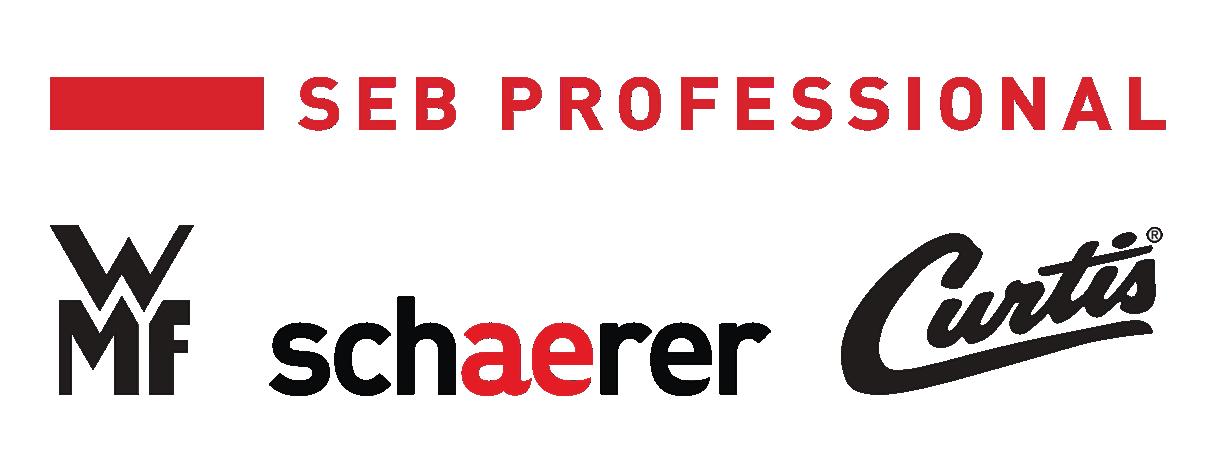
By providing a full-scale, top-quality coffee and tea program, you are laying the foundation to greatly enhance your food offerings! By upgrading your coffee and tea programs, your establishment can become a destination for hot and iced coffee and tea all day long!




As any quick-service restaurant operator—and customer— knows, drive-thru menuboards come in all sizes, shapes, colors, and capabilities.

Increasingly, the emphasis is on the last of those attributes, as devices become more technologically adept and, as a result, progressively efficient and effective.


Menuboards are better and smarter than ever, whether it is through visual upgrades, with eye-popping animation and colorful digital displays; auditory advances, thanks to speaker and microphone upgrades; or artificial intelligence developments.
“Any innovations in menuboards that I’ve been aware of have to do with technology,” says Tom Cook, principal at King-Casey, a restaurant and foodservice business improvement firm based in
Westport, Connecticut. “[The future] is not in static boards,” he says.
A simple way to think about it is in terms of smartphone evolution. “First you had flip phones where all you could do was make calls” he explains. “Now, just think about what smartphones can do [as refinements and new options are added every year].”
“It’s pretty clear for innovative brands, like ours, that digital boards are the future,” says Nate Nybl, chief executive of burgeoning Atlanta-area fast casual gusto! The chain will be switching to those boards, featuring “amazing and crisp motion graphics” over the next few years.
Technological advances can make a drive-thru experience more natural, but “you have to be careful,” notes Sean Thompson, information technology director at Wichita,

As drive-thrus evolve for a digital age, everything
at the ordering point.
Capture the “Other”

60 Percent of Your Customers
A new solution helps engage every patron—without any extra work.



 /BY PEGGY CAROUTHERS
/BY PEGGY CAROUTHERS
Between high labor, real estate, and supply costs, margins in the foodservice industry are incredibly thin. It comes as no surprise that most restaurants have adopted loyalty programs to increase customer retention. Though restaurants have seen loyalty help drive sales and tra c by o ering returning customers incentives to visit more frequently or add items onto their usual orders, loyalty programs aren’t without their challenges.
For starters, LedgerPay, Quisitive’s Global Payment Solutions company, reports that while nearly 60 percent of all restaurants o er loyalty programs, only 41.6 percent of all quick-service customers actually belong to one, and they are often a restaurant’s best and highest-frequency customers. That means that quick-service brands have been unable to track the behaviors and purchasing preferences of nearly 60 percent of their customer base, and restaurants are leaving the vast
majority of consumer data—and the valuable insights they provide on how to engage them more e ectively—on the table.
“Quick-service restaurants provide their customers with good service and great food,” says Jana Schmidt, president of LedgerPay. “But without access to consumer data, these brands are hamstrung and are unable to elevate that good experience into a great one.”
Compare the traditional restaurant experience with what most customers have become used to when shopping online. When a customer uses a retailer’s website, that company knows exactly which items are in that person’s digital basket whether they buy the item or not through a combination of digital tracking tools that seamlessly build online profiles. Additionally, the e-tailer can use previous purchase history to determine what a customer might be interested in buying in the future. This allows them to tailor recommendations and o ers to keep the customer engaged, drive sales, and to ensure a personalized shopping experience that’s more satisfying and more profitable.
While restaurants have been able to do the same with their loyalty members, they have missed out on the valuable trove of first-party data from patrons who do not use these programs, as well as consumers who simply fail to log in.
“Loyalty programs certainly have a place and are an important part of the restaurant ecosystem,” Schmidt says. “But they present hurdles for customers, who have to download the app, create a profile, attach a credit card, and then remember to log in and scan the app every time they visit a restaurant. Sometimes they forget, but if they are buying a low-ticket item like a soft drink, they may not bother.”
This is a critical blind spot for quick-service restaurants because consumers overwhelmingly want their experiences to be personalized. LedgerPay data reports 80 percent of customers are more likely to buy from a company that provides a personalized experience, while 72 percent of consumers claim they respond to marketing messages exclusively crafted to their choices.

This is where LedgerPay’s Payments Intelligence® solution comes in. Rather than


72 PERCENT OF CONSUMERS CLAIM THEY RESPOND TO MARKETING MESSAGES EXCLUSIVELY CRAFTED TO THEIR CHOICES.
requiring customers to create their own profiles and remember to use the app, LedgerPay allows restaurants to collect 100 percent of a patron’s first-party data about preferences and purchasing behaviors all while requiring zero additional work from restaurant staff or the customer.
“With LedgerPay, we’re able to capture true first-party data—not data that’s been purchased or modeled—directly from customers simply by securely and anonymously tracking their credit or debit purchases and creating individual profiles without any extra effort from the customer.” Schmidt says. “Then, that data can be segmented by the restaurant so personalized offers can be pushed to the customer at the POS in real-time.”
For example, she says, if a customer previously visited and bought a kid’s meal, LedgerPay would recognize that patron’s credit card information and enable the operator to generate a prompt at the POS—whether it appears on the kiosk, the receipt, the terminal, or on the register so the cashier can read it—for a treat that would appeal to a child.

“Without knowing these transaction details, brick-and-mortar businesses such as restaurants, can’t provide the same elevated experience an online retailer can,” Schmidt adds. “These offers aren’t just about getting someone to add another item onto their purchase; they are also about getting that person to come back a second, third, or tenth time through personalized offers that resonate with a customer’s unique preferences rather than just a generic, one-size-fits-all free cookie. Best of all, chains have access to the same data across all locations, meaning patrons get the same personalized experience whether they visit a store in Atlanta, Georgia, or Denver, Colorado.”
Consumer preferences are determined solely by their buying habits within that specific restaurant brand, and each profile evolves over time,

becoming richer and more detailed with every order that patron places. LedgerPay also provides conversion and tracking analytics so restaurants can see how those offers perform in real time.
Schmidt notes that LedgerPay can
work in conjunction with existing loyalty programs, which can enrich a customer’s profile by fusing individual purchase patterns with their prior history. When combined with details such as a patron’s email address or phone number, chains can bring an entirely new level of targeting and effectiveness to their marketing offers. Even if a customer fails to opt in during a visit, Payments Intelligence still captures and adds that purchase in that patron’s profile based solely on matching payment card information.
“We’re also able to work with any loyalty system, payment processor, or marketing platform,” Schmidt says. “This means restaurants can increase the value of any software or hardware they’ve already installed.”
Another benefit, Schmidt says, is LedgerPay’s ability to relieve the burden on employees when restaurants are facing labor shortages and high turnover. With LedgerPay, crew members no longer have to think of the right add-on for an order, convince consumers to download and register for apps, or remind consumers to log into those apps, which can slow down lines when the restaurant is busy.
“We’re really about removing friction from the process for customers and employees,” Schmidt says. “LedgerPay opens access to a vast trove of valuable first-party data to quick-service restaurants by transforming everyday transactions into actionable first-party data without requiring customers or employees to do anything so restaurants can focus on what they do best: Providing service and food, while creating a better guest experience.”
To learn how LedgerPay can help your restaurant capture 100 percent of its first-party data, visit ledgerpay.com.
LedgerPay data reports 80 percent of customers are more likely to buy from a company that provides a personalized experienceLEDGERPAY ISTOCK LEDGERPAY ISTOCK



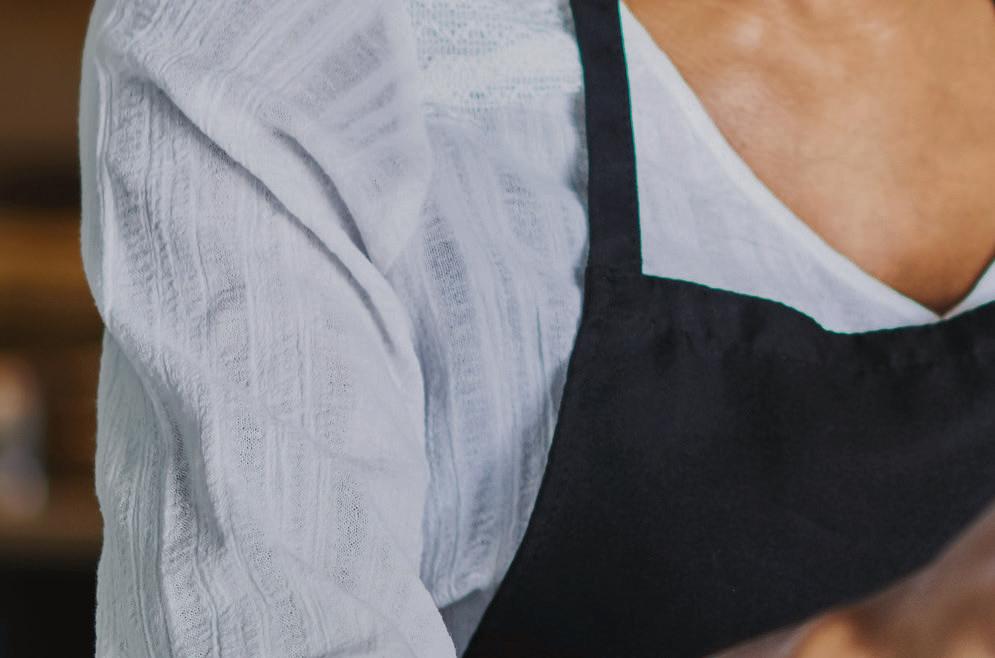


LedgerPay’s new Payments Intelligence® solution transforms everyday payment transactions into first-party data on every customer that pays with a card. You can now track all previously unknown customers and engage them with personalized o ers and messages to drive loyalty at scale without requiring enrollment.
• Operates seamlessly in background
• Enables segmentation and promotional campaigns to drive revenue
• Allows you to capture buying behaviors and menu preferences
• Delivers personalized o ers while still in the restaurant
• Builds detailed customer profiles over time
• Tracks and measures every campaign
Kansas-based Freddy’s Frozen Custards & Steakburgers. The goal is for a board to be “cool versus creepy.”
Animation alone in the past few years has moved beyond menuboards showing, for instance, steam rising from a cup of coffee to a video display of how coffee or any other menu item is created. Zoom-like video can show an eatery employee speaking to a guest in the drive-thru.
Meanwhile, upgraded speaker systems linked to menuboards are not only seeing improved voice recognition, like Siri or Alexa, but they can rely on artificial intelligence to learn how to differentiate a customer’s voice from background noise or to adapt to different accents.
“Microphones in the past recorded everything, and it would have been hard for a system to adapt to that,” says Minh Le, chief information officer at Checkers and Rally’s. “Now you can tell a human voice versus cars or street noise or birds.”
Artificial intelligence (ai), or machine learning, is key to future quick-service menuboards. It will allow operators to change their boards—even automatically— “depending on factors like weather or product availability,” Cook says. And by learning what customers are ordering, “the menuboard can customize itself to that. It’s all about capturing data and using analytics.”
The use of AI can provide operators a deep dive into what makes their customers tick and goes beyond the individualization that already occurs through tying the guest ordering experience— including menuboards interaction—to mobile apps and loyalty programs.
Examples of these advances can be found across the quick-service restaurant firmament.
Starbucks rolled out the digital barista camera in 2015 to bring the employee-customer personal connection to the drive-thru lane.
The screens can show the barista taking a guest’s order, the menu item, and the cost. Customers can also view AI-driven beverage and food recommendations, based on weather, relevant beverages and food for the daypart, product availability, or popular items other customers at the store have ordered, says a spokesperson for the Seattle-based giant.
Not only does the barista camera bring a more personal touch to the drive-thru, but there have been instances where hearing impaired guests in their cars have been able to order a menu item through sign language or other means.
Early this year, the chain began rolling out a redesigned digital order screen layout at U.S. drive-thrus. The appearance is similar to Starbucks’ mobile app, builds on existing features like the barista camera, and has a visual order confirmation that mirrors the appordering experience.
Gathering data and putting it to work is key to expanding digital drive-through menuboards beyond pretty pictures and nifty graphics, Freddy’s Thompson says. The idea is to reduce order and fulfillment times and make menu choices easier through a datadriven design strategy.
“Most people who come up to a menuboard make their decision in a few seconds,” he says. “So, you have to be quick, but tell the
entire story.” Static menuboards change slowly, and even manual entry on digital boards—from pricing to popular items—may lag.
Freddy’s new system was built using more than 3 million lines of data to see what guest behavior was saying. Testing added a million more lines.
For gusto!, moving to a new system means the chain’s unique menu requires order confirmation needs to be strongly woven into the drive-through lane’s digital technology. “Managing that will help
us to be more nimble on changes and allow the messaging to be more dynamic,” Nybl says.
“It’s where art meets engineering from a communications standpoint,” he notes. At the same time, the chain intends to complement its upgraded menuboard with a human connection by continuing to have an employee in the drive-thru lane during busy times to help guests.

Checkers and Rally’s new voice assistant has proven to be highly precise—clocking in at 98 percent accuracy rate overall and nearly 100 percent at some locations.
The system is triggered when a guest drives up to the menuboard, and the customer is greeted in real time by a female human-sounding voice connected to the cloud. The voice will respond to the visitor by not only taking the order but by suggesting a combo or other menu item, answering consumer queries, making any corrections, and then providing the payment amount.
Most of the time, an employee in the restaurant “is not involved,” Le says. Instead, the less-pressured worker at the pick-up window is filling drinks, making fries, and accepting payment. In the more than 170 restaurants where the system is installed, “the employees love it.”
The assistant continues to learn. “The longer it works at a store, the more the machine learns and builds up its dictionary,” the CIO notes.
At most Checkers and Rally’s units, the new voice assistant involves minimal cost for franchises that had updated their overall timer and headset systems over the past five years.
Certainly, cost is a factor as technology continues to move forward. “As we roll out all these things out, we have to be sensitive to the needs of our franchise community,” Thompson says. These devices are not free, “so let’s do it where it makes sense, for us and for franchisees.” q










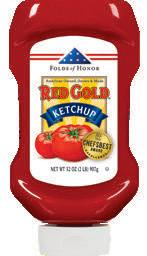

had at least one vegan option.
“The interest and willingness is there,” Mendelsohn says. “I think we’re experiencing a shift in our system from what we grow and how it travels and what we eat, and people are becoming a lot more educated about it. From that stance, I see it as very popular and moving quite quickly.”
“… One of the things that we’re also doing with our brand is really democratizing plant-based foods because that’s where the importance is for the diets, wherever people need to eat less meat and salt and suffer from obesity or things like that,” he continues.
Global retail sales of plant-based foods are predicted to reach as high as $162 billion by 2030, an increase from $29.4 billion in 2020, according to the Bloomberg Group. At that level, the segment would take up 7.7 percent of the global food market.
FOUNDERS: Spike Mendelsohn, Seth Goldman

HEADQUARTERS: Bethesda, MD
YEAR STARTED: 2019
ANNUAL SALES: N/A
TOTAL UNITS: 12
FRANCHISED UNITS: 0
THE RISE OF PLANTBASED MENUS CAN BE described as nothing short of “incredibly quick,” says Seth Goldman, cofounder of fast casual PLNT Burger and chair of Beyond Meat.
From what he recalls, three years ago, the segment nearly didn’t exist. It was on the cusp of being something people were

aware of. Since, trial has been massive, especially from some of the biggest brands in fast food—Burger King ( Impossible Whopper), McDonald’s ( McPlant), KFC ( plant-based nuggets), and more. The demand is clearly present, Goldman says, which is why PLNT Burger has grown from one to 12 restaurants after starting in 2019.
Spike Mendelsohn, cofounder and chef, shares his partner’s sentiment, saying culinary leaders have spent years transforming vegetables into center-of-the-plate products. The movement has been backed by a number of celebrities; Beyond Meat’s roster of ambassadors includes Kim Kardashian, Kevin Hart, and Snoop Dogg. And the impact is worldwide. Mendelsohn remembers traveling to Greece this past summer and being amazed at how many restaurants
PLNT Burger aims to be a part of that significant runway. The concept owes its beginnings to a conference panel discussion in 2017 where Goldman and Mendelsohn were speakers. Goldman placed a cooler of Beyond Meat under Mendelsohn’s chair, which he took home and cooked for his vegan wife.

“I saw how excited that burger made my wife, and to me, I was like, ‘This is just good as anything that’s out there,’” Mendelsohn says. “my wife was the one that was like, ‘No, this is legendary.’ So I followed up with an email to Seth the next day.”
PLNT Burger’s menu is simple, with the PLNT Cheeseburger, PLNT Burger, Mushroom BBQ Bacon Burger, DBL PLNT Burger, Baja Burger, Crispy CHIK’N Sandwich, and Spicy CHIK’N Sandwich. Mendelsohn says there are plenty of opportunities for innovation within the space, as well. PLNT Burger previously had a chicken sandwich made from parts of a mushroom that were originally labeled as food waste. The restaurant sourced

Maintaining efficiency can be an uphill battle, creating a snowball e ect. With the industry experiencing extreme loads on its operational systems, lack of sta leads to working with smaller teams and shorter hours, which can result in lags in drivethru services and extending crews across multiple locations. The key is to work smarter with the right technologies to prevent team burnout and alleviate labor and operational pressures.
The path to relief begins with the HME NEXEO | HDX Crew Communication platform, which integrates with HME ZOOM Nitro Timer with video detection to enhance operational efficiency. Integration of these powerful platforms empowers key staff with critical alerts delivered to the employee through the headset in real time, like when a car arrives in a curbside pickup parking space, enabling the team to take immediate action and improve customer service on the spot. This integration gives employees the freedom to move about the restaurant and multitask while always being aware of critical service events.
“Crews and managers move about the restaurant all day,” says Scott Mullica, director of product management at HME Hospitality and Specialty Communications. “Whether they’re in the kitchen, coaching a new employee, helping a mobile guest, or just busy in the hustle and bustle of the restaurant, ZOOM Nitro timer alerts to your NEXEO | HDX headset enable your team to prevent issues or correct something before it becomes a major problem.”
With crews serving more customers than ever before at multiple touchpoints—the drivethru, mobile orders, curbside, and dine-in—and operators navigating a labor shortage unlike anything the industry has experienced in a long time, restaurants need technologies that
help them improve workflows and increase productivity.
“Drive thrus have evolved into operations with multiple order and pickup points,” Mullica says. “Restaurants need a communication solution that seamlessly connects drive-thru and crew communication, enabling customer service that exceeds expectations at every area of your operation.”
NEXEO | HDX is the total communication platform that connects crews to drive-thru customers and other order pickup locations, ensuring complete coverage inside and outside the restaurant. Because of its multiple channels, the platform also enables dedicated communication for outside order takers and mobile
order groups without interrupting drive-thru communication. HME CLOUD connectivity keeps the NEXEO platform up-to-date and prepared for the future of the industry. Plus, the platform is ready to integrate with voice AI providers for automated order taking.
“Even with a smaller team, you can reach your operational and service goals if you have the right technologies,” Mullica says. “The NEXEO | HDX platform provides industryleading patented HD wideband audio with more flexibility than other systems. Plus, with actionable insights delivered to key sta in real time, your crew is empowered to make a positive impact on customer service and restaurant performance when it matters most.” ◗



“A
is waiting.”
“I think it’s just that the public wants something different,” Wyland adds. “I think we just need more unique items out there that are readily available, and with franchising, the whole key is being able to replicate your brand or menu throughout the country in different markets.”
New York City restaurateur Stratis Morfogen similarly has seen ample interest from franchisees in Brooklyn Dumpling Shop, which he founded in January 2020.
It’s a fast-growing quick-serve that opened six new franchise stores in August alone, and is on track to open 10 more in 2022, and potentially at least one shop per week by 2023, Morfogen says.
“We’re the only one in our lane,” he says. “And what we’ve done, we’re basically redefining or re-imagining two lanes into one. We’re re-imagining the sandwich and we’re re-imagining the dumpling.”
Brooklyn Dumpling Shop boasts all sorts of flavors wrapped up in an appealing, easy-toeat package with classic sandwich flavors, like buffalo chicken, reuben, and a bacon, egg and cheese “cro’sumpling” (like a breakfast croissant).
From taquitos to dumplings to vegan versions of American fast-food classics, a growing number of fast-casual and quickservice concepts are turning to atypical menu items to entice customers and franchisees alike.
California-based Roll-Em-Up Taquitos is one example. The brand has five stores, all based in Southern California, but since opening up for franchising roughly a year ago, has added 480 new franchise units to its development schedule.

Chris Wyland, chief development officer, says the sky’s the limit for Roll-Em-Up, partially due to the unique niche the concept occupies.
“We have this saying, that everyone else in the country is fighting over chicken sandwiches, cheeseburgers and pizza, and we’re in this category by ourselves,” Wyland says. “As of today, we’re still the only taquito-focused multi-unit brand in the world so we’re in this little market niche by ourselves.”
While Roll-Em-Up is currently focused on franchising stores in the western part of the U.S., Wyland says there’s been a ton of interest from franchisees across the country.
“I believe the dumpling market could get as big as the sandwich market,” Morfogen says. “Who the hell doesn’t like a 2-ounce sandwich? And that’s what a dumpling is.”
Morfogen says the success of the concept shows consumers need to be “mentally and culinarily” stimulated with fresh new ideas, and notes customers—and franchisees—are especially interested in concepts that can do that with fusion-style cuisine.
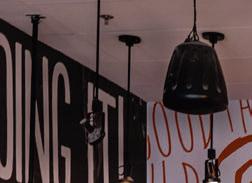
But having a great, unique product is only part of the battle. Morfogen says franchisees are really looking for fully formed concepts that aren’t too expensive to open up, and have easy-to-prepare products, and dumplings fit that role perfectly. Low payroll costs help, too, especially in a time where restaurants are having trouble finding workers; Brooklyn Dumpling boasts an automat style of service that reduces the number of staff needed per location.
“You can open up a dumpling shop for $300,000 to $400,000, although it can be as low as $150,000 on the low end and you’re in business with a product with no assembly, no product waste, and no ingredients that come in non-frozen,” Morfogen says. Wyland agrees; for franchisors in this space to be suc-

a concept to focus on and targeted 80 restaurants for review. “Out of a quarter where we had 80 restaurants being audited, we would have anywhere from a 25 –35 percent hit rate on identifying behaviors that we wanted to address,” Magana says. “We were able to use Envysion’s software as a teaching tool, not to punish anyone but to provide actionable insights to management. We were able to proactively identify behaviors and trends, even down to the level of a particular daypart. Maybe your morning crew did great, but maybe you had a weaker staff at night, and that’s where you started to see those opportunities for improvement. We were able to help the general manager and the district manager better facilitate and run their restaurants.”
Risks to a brand’s reputation are everywhere, especially in the wake of the pandemic. Customers are more aware of security and hygiene issues than ever before, even as the restaurant industry’s labor shortage has made it harder for many brands to train new employees fast enough.

When Chris Magana, director of risk management at WKS Restaurant Group, decided to integrate security cameras with Envysion’s managed video solution across his group’s restaurants, he wanted his teams to understand that it was more than a theft deterrent. “It was a big goal to get my teams on board with the idea that the Envysion platform is about more than catching people stealing or doing the wrong thing,” he says. “We wanted to use it to better control how we take care of our guests and better instill a safety culture in our restaurants.”
WKS has more than 300 restaurants across five di erent concepts, and Magana implemented audits of their operational practices using Envysion’s managed video solution. Each quarter, the group chose
Behavioral audits reviewed specific behaviors like adherence to dress code as well as state and county COVID-19 protocols. “We were able to correct behaviors in real time during the height of the mask mandates and coach throughout our restaurants,” Magana says. “We were also able to improve our drive-thru times by ensuring the prep work was done ahead of time, and that we had enough people deployed to certain stations to ensure our guests were being served quickly and e ectively.”
Safety audits looked for situations that could lead to workers’ compensation claims, such as lingering spills on the floor or blocked emergency exits. “We were really able to hone in on behaviors and oversights that were leading to opportunities within our restaurants,” Magana says. “We used these audits as training for the entire enterprise.”
In the end, it’s about brand protection. “We have five di erent brand images we want to protect, but ultimately, they all fall under the one franchise logo of WKS, which stands for ‘We Know Success,’” Magana says. “We want to be better than what we were yesterday. Envysion helps us see how we as leaders can do better to truly understand the needs of our employees and the business.” ◗


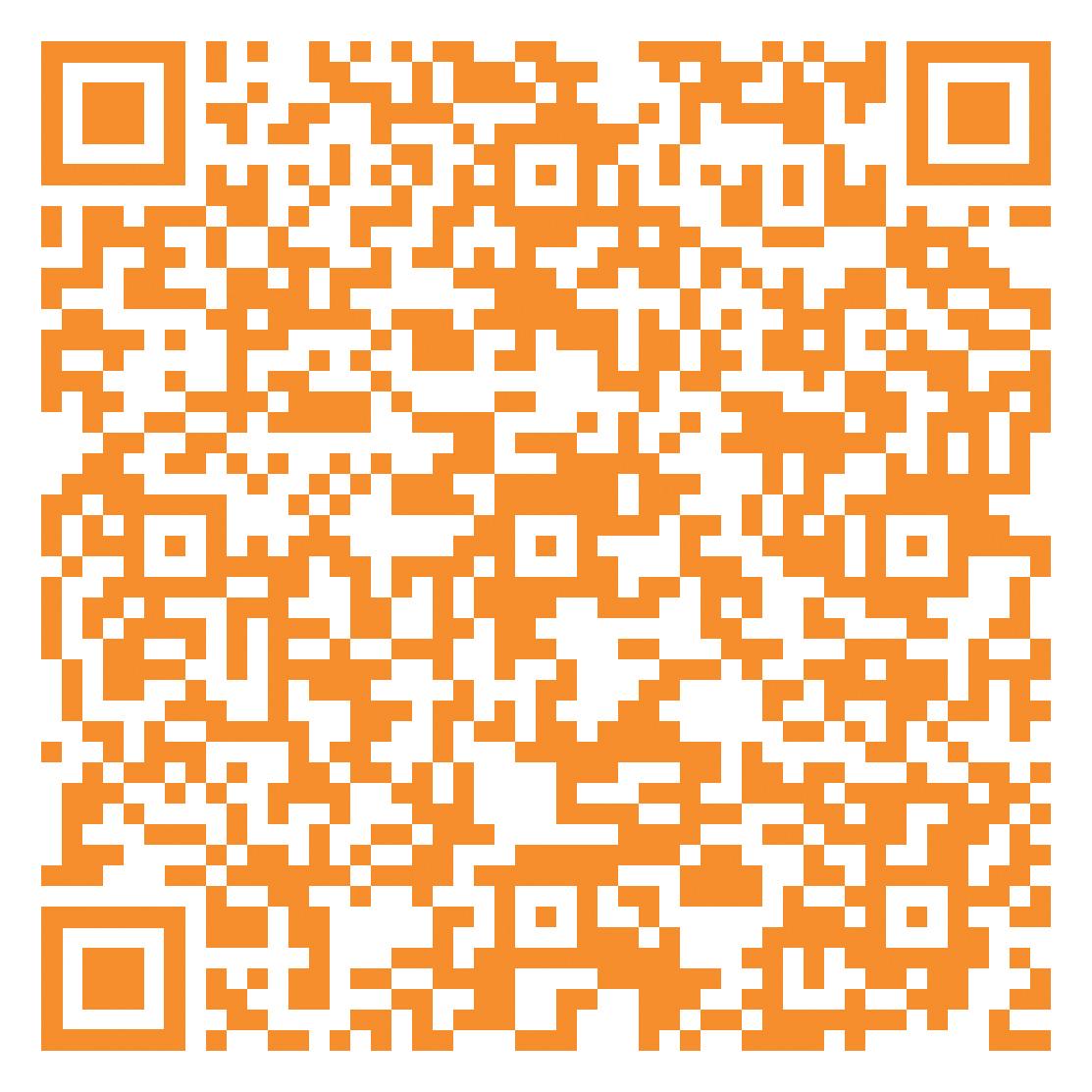
 BY
BY








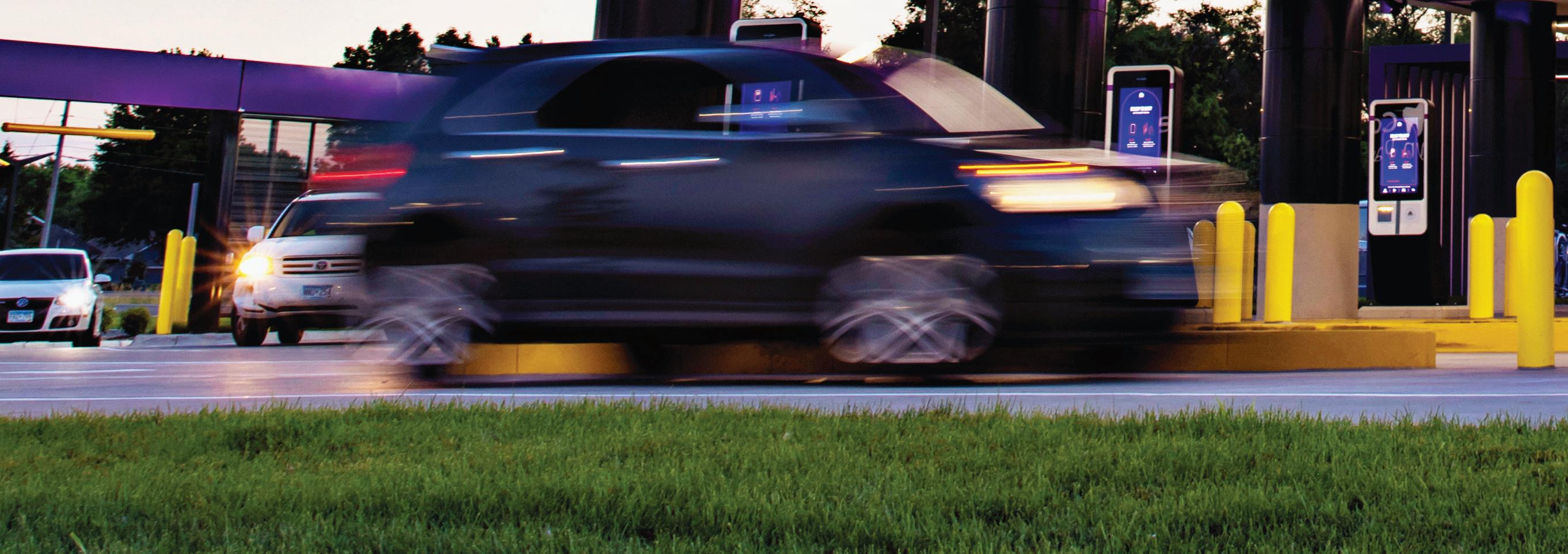
Defying Gravity / Taco Bell’s most ambitious prototype in brand history isn’t just a sign of things to come; it’s a signal the industry has evolved into something far more dynamic.
/
DANNY KLEIN
On a spring morning in 2020, Lee Engler sat down for breakfast. The sting of the pandemic’s early rush had turned operators into survival gurus. But now, the future was back on the drawing board.
Across the table from Engler, co-founder and CEO of Border Foods, a family-owned franchisee of Taco Bell with north of 230 locations, was Mike Strommen, a friend of Engler’s brother and co-founder, Jeff, who ran a company specializing in consumer retail engagement. Strommen had no history in fast food or sense of its conventional boxes. Yet the problem Engler presented wasn’t a foreign one: the channels of access, in terms of ordering, had become plentiful. However, it boiled down to an age-old friction point—pickup.


About a month later, Engler had in front of him a rendering of an elevated building with drive-thru lanes underneath it. It was initially called “High Top” and resembled a cross between a bank, toll booth, and, according to some, Taco Bell from the 1993 Sci-Fi Movie, “Demolition Man,” where the chain became the “only restaurant to survive the franchise wars,” complete with parking valets and a live pianist.
Regardless of how it’s labeled, though, the restaurant, which would eventually be dubbed “Defy” by Taco Bell corporate, represented the “holy grail of technology in a drive-thru,” brand president and global COO Mike Grams says. And it was, without much dispute, the most vivid manifestation of the restaurant of the future since COVID-19 reset the status quo.
“You have to admit, it’s a wow moment,” Engler says. “It really puts you back on your heels and makes you say, these guys have rethought the industry in terms of how people not only access the brand, but experience the brand.”
Strommen is the co-founder of Vertical Works and CEO of PD Instore, a design, production, and installation company that’s worked with retail giants like Apple, Indian Motorcycle, Samsung, and Sony on everything from custom fit displays to brand revivals. The fact the company hadn’t approached a quick-service project before allowed it to take a whitepaper dive into Taco Bell’s Defy, Engler says. “It was interesting,” he says, “because it really took someone outside thinking rather than inside thinking to come up with this idea.”
The 3,000-square-foot, two-story building circulated social media like wildfire when it opened in June in Brooklyn Park, Minnesota. The modernist, neon-lit (in purple, naturally) restaurant claims it can reduce drive-thru service time to two minutes or less. And it would already be there, Engler says, if customers didn’t stop so often to take pictures.
It’s a four-lane building with three dedicated specifically for mobile orders and third-party delivery pickup. The fourth boasts a speaker box and menuboard.
During the process, two-way audio and video technology enables customers to interact with employees, who are housed on the second story. For each of the three mobile order drivethru lanes, there’s a digital check-in kiosk where guests/delivery drivers scan a QR code so Taco Bell can identify the order and prepare it for pickup. Once made, an employee places the meal in a proprietary vertical lift system that transports it down to diners.
Additionally, customers can park, walk inside, and grab mobile orders off a pickup shelf, if they choose, or order at the counter. There are digital kiosks inside, bringing the options to grab orders to nearly a half-dozen ways.
Going back, Engler says the pandemic served more to uncover a growing reality than invent it. Pressure on the drive-thru arrived like an anvil. Consumers suddenly had more ways to access Taco Bell than ever, whether through third-party, traditional channels, web ordering, etc. “What it came to was there was always this single pain point of getting the food,” he says. “Ordering was relatively easy and there are many differ-
ent channels to do that. But it funnels down to the one point of contact, and that’s really the drive-thru window.”
The Defy concept was developed in partnership with Minneapolis-based Vertical Works Inc, a design company powered by WORKSHOP and the aforementioned PD Instore.
The project came together quickly. It went from a clean sheet of paper and design concept in July 2020 to opening as a fully operational business two years later in June.
Of course, myriad events unfurled between those points. Engler first asked Strommen if he was sure they could build the proprietary lift. “He said, ‘don’t worry about,’” Engler recalls.
And then, Engler brought the idea to Taco Bell.
Engler and Border Foods have been Taco Bell franchisees for 36 years. They dabbled in other brands but always returned to Yum!’s taco giant. Since 2013, the company hasn’t strayed. It will close out the year with about 240 locations, going along at a pace of roughly 10 new incremental builds a year and 20–25 remodels per calendar. Border Foods has no outside money or equity.
Engler, who is 65, told Grams and Taco Bell CEO Mark King Border Foods would build Defy on its own nickel. Taco Bell was tasked with making the tech work and Strommen struck a deal with the chain on the lifts.
Speaking of, the lifts were A1 on the task chart. They ran outside in the winter. Through rain. Everything a surly Midwestern season could throw at it. Engler estimates the lifts spun 500,000 revolutions before getting green-lighted. Parallel, the parties met with Taco Bell for almost a year and a half, monthly, if not bi-weekly at times, for conference calls to work through the tech platforms and stack. “It was a perfect storm with the entrepreneurial spirit of the franchisee, the entrepreneurial spirit of a large corporation like Taco Bell, and, clearly, the outside thinking of what Mike and Josh [ Hanson, co-founder of Vertical Works and CEO of WORKSHOP ], brought to this whole idea,” Engler says. “And it came across through a friendship.”
Engler says he’s been asked why Defy wasn’t conceptualized before by other brands. His answer: It was hiding in plain sight. “But part of the problem is that you only know what you know,” Engler says. “And these guys, they didn’t know what rules they could or could not break.”
Grams says COVID forced all brands to ask themselves where the consumer was going. Everyone started to experience the emergence of digital and delivery. The notion digital could mix a large percentage of transactions was no longer a white whale for restaurants.
At Taco Bell, however, drive-thru was the furthest thing from a pandemic pivot. Before Glen Bell created the brand, he started Bell’s Drive-In and Taco Tia in the San Bernardino, California, area. “We believe we excel at drive-thru and do a really good job,” Grams says. “The challenge for us is how are you going to disrupt yourself, take digital business, and convert it into a drive-thru when the drive-thru is already a pretty good experience that’s painless to the consumer.”




As you might imagine, Grams, who has been with the brand for three decades, sees a lot of prototypes show up on his desk.
Taco Bell’s “Go Mobile” was unveiled in August 2020 as a smaller (1,325 square feet versus the typical 2,500) model with a dual drive-thru, smart kitchen technology, “bellhop” in-line order takers, curbside, and, overall, a synchronized digital experience centered around streamlining points. Defy fits into that envisioned universe, but amplified.



Yet this was a different arena. With fast food and drive-thru, brands are searching for outlets to incorporate digital into the business. And to do so beyond just ordering; it’s as much a battleground of integration as one to provide convenience.
Defy is, at its core, contactless drive-thru at its apex. The Washington Post described it as the “MP3 that out-convenienced the CD, which had out-convenienced the cassette.”
With the three digital lanes, guests pull up to an arrival monitor (think of a kiosk in a stanchion), with a contemporary look. The monitor scans the QR code generated after a customer’s order and the screen confirms before asking you to drive forward. There’s live, graphic motions that show a car progressing. The guest goes about 10 feet and the lift levels down. It was designed to drop to different heights based on car size. This way, consumers aren’t reaching up or down, or having to open the door or get out and grab their food.
When it stops, the door opens and there’s a light curtain for safety protocols in case somebody has multiple items. It’s activated by a guest reaching in.
What the whole process creates is an experience people watch, but choose how
What’s also unique about Defy, especially in a COVID era where “restaurant of the future” prototypes raced across the table like ants, is that the finished product actually looks like the rendering. Even better, Grams says. “When you go there and see the lanes full of cars, everybody with their cameras out taking pictures of the experience, you really get that you might be on to something here,” he says. “There’s a lot to learn for us to carry forward.”
Barring a pandemic, Grams says, he would have greeted the idea with trepidation. “I would have said, ‘I’ve seen these pictures before. Somewhere in the world, in Australia, they’re going to try to do one,” he says.
















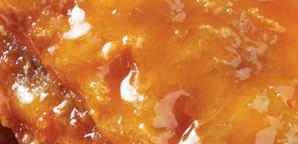










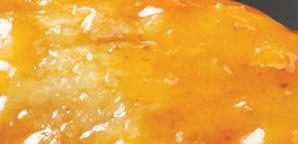



























they engage with. If they want assistance—to ask for more sauce, for instance—they can hit a call button. Patrons communicate with employees by voice or video. But, as is far more often the case, they simply roll through the restaurant without speaking to or seeing anybody.
When the bag is in the car, the customer’s name is on it, along with the order, to provide double confirmation.
“It’s one of those experiences you go through and the first words that roll out of your mouth is, ‘this is really cool, and very easy,’” Engler says.
On the backend, Grams adds, the learnings and adaption in the kitchen involve the same technology extrapolated upstairs. The production capacity of Defy is triple what a standard Taco Bell would be. The unit has a quarterback role where an employee navigates and updates communication systems to help staff work through the processes.
“It really allows team members to focus on the quality of the food, accuracy of the order, and delivering it,” Grams says. “The
tubes do the hard work of actually getting it to the customer.”

The unicorn nature of the design allowed Taco Bell to create a unique employee experience as well. And amid labor challenges, the store defied standards there, too, Grams says.



“When I showed up at the store, they had over 60 team members hired,” he says. “Smiles, people were excited. They’re in a one-of-a-kind experience and they’re the first. It was a really good balance of culture, technology, and the Taco Bell way coming together.”
Despite what some project on social media, Defy does not, in fact, offer any labor savings, Engler adds. There are four production lines versus the two Taco Bell typically boasts. “It’s giant sized in all aspects,” he says, “including the amount of our crew members it needs to run.”
“It’s actually leveraged for higher sales and the AUV is higher,” Grams says. “I think that’s the growing trend—technology is the enabler, not necessarily there to replace [people].”
In a similar vein to the consumer response, Engler says, Defy provided a powerful jolt from a consumer awareness standpoint. Across Border Foods’ fleet, yearto-date, the company’s speed of service is 3 minutes and 20 seconds. “So we’re already fast,” Engler says. “And you couple that with the amount of remodeling we’re doing and rebuilds and then Defy, from an overall brand perspective, it raised the business and the whole market because of that total experience.”
With custom programming, one-touch operation and precision performance, Vitamix® machines empower employees to achieve perfectly consistent results every time – even the first time.

It’s just one reason we’re the industry’s most trusted blending partner.
See what else sets us apart at VITAMIX.COM/OURDIFFERENCE




Again, Engler says, Defy is getting guests through the journey in under two minutes when they follow the path. When Steve Hoffman, writing for The Washington Post, dropped by, it took a minute and 46 seconds from QR scanner to drive off.
Customers keep shooting fodder for social media, though, Engler laughs. “Every millennial in the car is taking a video, and, of course, they’ve got to have their friends in it,” he says.
Engler visited Defy in July and realized it’s become more than just another build, to put it lightly. The most photographed store in the chain’s 7,021-unit domestic portfolio is in Pacifica, California, a unit that feels like a beach bungalow. Next is the Cantina in Las Vegas where people can get married with sauce packet bouquets.
But the social inquires and postings of Defy, Grams says, has exceeded both. “It’s become a destination,” he says. “When we were out there … there were some stories of people parking their drones, taking pictures of it.”
“It’s like when you see the Empire State Building for the very first time,” Grams adds. “The pictures [online] are great and everybody is excited, but they don’t do it justice.”
While he couldn’t divulge exacts, Grams says the uptick in the sales sustainability has been “pretty incredible.”
“We’re only going to get better at operating it,” he says. “That’s what’s exciting.”
Engler adds the excitement level remains high. As does trial. People want to sample the “tacos from the sky,” as Hoffman put it in his article.
The customer feedback to Defy, from the same third-party metrics Taco Bell generally deploys, has been three times higher than the Minnesota market, “which is already really high results,” Grams says. It’s been seven times higher than the brand overall.
“So when you look at how they perceive cleanliness, hospitality, product, speed, and accuracy, it is seven times higher than the average Taco Bell,” Grams reiterates.
And on the same ratings, which cover “probably about 17” brands benchmarked in Minneapolis, Border Foods is No. 1 in overall execution across all of the bars Grams noted.
The location opened up far stronger than any other Border Foods’ restaurant incrementally built, Engler says. So much so, the company is now in the process of measuring what it thinks it can do with a scrape and rebuild. Only this time, with a hybrid of a small dining room.
That will allow the company, Engler says, to capture the lunch trade in markets where there’s a solid rate of foot traffic inside restaurants. “We don’t want to alienate those customers and force them to do something that’s out of their character,” he says. “So were adapting the asset to have a dining room that will seat the appropriate amount of people for that daypart, as well as doing three lanes.”
With a dining room factored in, Taco Bell can shed a lane from “Defy 1.”
Engler believes this will be the true measure of the through-
put boost Border Foods feels it can achieve through the genesis of Defy’s main characteristics. And the experiment will be aided by the fact the Englers own more than 50 percent of their portfolio and real estate, which opens flexibility.
This next iteration of Defy will look just like the first, in terms of the purple light and elevated design. The exterior will mirror the original, but there will be a dining room on one side with windows.
“What I think you’ll see as a brand as we work with Lee and other franchisees to actually branch out and hybrid some different models of Defy,” Grams adds, “while keeping the base principles alive on it.”
Throughout Taco Bell’s franchise system, there’s been an excitement and eagerness to learn from Defy and, of course, be a part of it. It’s a model that’s learnings are going to shape the future of the drive-thru experience for Taco Bell, Grams says.
Still, the brand will continue to build Go Mobile and other formats. “But the Defy, certainly, will be part of the future,” Grams says. “And elements will start to show up in some of the remodels and retrofits across the system as we sale it out and continue to grow at the pace that we’ve been growing at.”
Defy, as much as anything, signals a shift in foodservice tides. If you go back decades, much of the sector, especially quick service, was unchanged since inception. No place was this truer than the drive-thru. It’s why technology was never as prevalent in restaurants as other fields. In the 90s, the point of sale was the revolutionary disruption from the cash register. Then came kitchen display systems. Yet overall, retail has long felt ahead of restaurants.
What’s happened, however, Engler says, is technologies amid COVID triggered broader access to brands. So operators are rethinking the traditional model and how it works. Can you make getting food as frictionless, fast, and intuitive as ordering from Amazon?
“That’s why I believe it took outside thinking to really look at our industry and say hey, this industry needs to evolve in terms of how it does what it does,” Engler says. “So what does that look like? And quite honestly, I think our competitors, including ourselves … it wasn’t in their realm of thinking.”
Defy cracked open an opportunity to elevate the experience and promote and provide what the quick-service consumer really wants, Engler says. Dressed down, it gives them choice.
“I think we’re going to provide full flexibility in that experience for our guests,” Engler says.
Grams adds none of this would have come to light without communication between Taco Bell and franchisees. “You can’t as a brand be the only one who comes up with these ideas to make the brand better,” he says. “It takes healthy franchisees who are progressive, who think about the future, and are beyond the nuts and bolts of the business and into where the consumer is going. They need to push the brand to say, hey, we’ve got to go.” q
to spacious station.
seamat price— addicharges service service incentives, the Stations upfront revewith sit Customers order pain for with careevent use operaIf malfunctions proapp for can items opera-
BY 2035 California will stop selling new internal combustion passenger vehicles to help curb climate change— a sure sign electric vehicles are going mainstream.
Quick-serve restaurants have looked for ways to reduce carbon, including launching menus featuring plant-based meals. Now, a California Taco Bell is about to offer patrons electric vehicle (ev) charging stations powered by ChargeNet Stations. It’s a move that clearly makes sense for the environment, but, surprisingly, it also helps reduce the restauranters’ energy costs.
The first ChargeNet Stations’ units that incorporate solar energy storage and EV fast charging, along with a smart optimization platform called ChargeOpt, are about to be unveiled at a San Francisco Taco Bell with nearly 80 more already slated to open later this year. ChargeNet Stations offer EV drivers a near 100-mile charge in 15 minutes or less for about $10.

The software innovation converts a restaurant’s parking lot into a profit center by creating and storing reusable energy. It’s a ‘win-win’ for consumers, restaurant owners, and the planet. Consumers are attracted by convenient locations and affordable fast charging. Restaurant owners generate new business and save 20-40 percent on their electric bill by using energy generated by the ChargeNet Stations.

“This helps solve a huge demand problem we know is coming,” says ChargeNet Stations CEO Tosh Dutt. “Right now, EV charging is a ‘planned’ chore. It can take longer than filling up at a gas
station, a good location can be hard to find, and not everyone has a spacious garage to use as a charging station. What we’re doing is creating a seamless opportunity for a quick charge at a convenient place for a good price— and it’s good for the planet.”
Installation requires only one additional meter to support the charges but doesn’t require utility service upgrades. With the special service model and government incentives, Diversified Restaurant Group, the first to debut the ChargeNet Stations in California, will pay nothing upfront while pocketing a portion of the revenue generated from the chargers.
Each parking lot is equipped with six fast-charging stations, which sit under a solar array rooftop. Customers pull into the space, plug in, and order their meal.
Dwell times, which can be a pain point for EV owners and concern for operators, are smartly managed with rapid recharging capabilities and carefully targeted incentives. In the event of a power failure, restaurants can use the stored power to continue operations. No maintenance is required. If a charger or solar panel malfunctions or needs to be replaced, a service provider is dispatched the same day.
The software also consolidates data from a brand’s native app and point of sale to build an anonymized consumer profile for each EV driver. This means based on past orders operators can target promotions and obtain metrics about which menu items EV drivers prefer, further adding benefits for restaurant operators. RET
To learn more, visit chargenetstations.com.
“ What we’re doing is creating a seamless opportunity for a quick charge at a convenient place for a good price—and it’s good for the planet.”

With the DoorDash platform reaching 94 percent of the population as of December 2021, its reimagined Merchant Suite optimizes both in-house and o -premises operations. Whether a restaurant wants to increase its online presence, attract new customers, or expand order volume and size, DoorDash can help partners succeed with its unique set of optimal performance tools.
“I like to think of our Merchant Suite as a ‘choose your own adventure on DoorDash’ guided experience shaped directly by partners’ feedback,” says DoorDash c hief r evenue o cer Tom Pickett. “Our goal is to give restaurants more opportunities to grow, be more profitable, and operate e ciently in today’s online convenience economy.”
Modern Bread and Bagel, an all-gluten-free, all-Kosher, artisanal Upper West Side restaurant and bakery, leverages the DoorDash Merchant Suite to grow its online marketplace, attract and retain cus-
tomers, and increase order volume through targeted promotions.


Pre-pandemic, the venue had no deliverybased segment but rather focused on dine-in and takeout brunch fare and also served dinner at its sister restaurant, Thyme and Tonic Kitchen & Bar. When indoor dining shuttered early in the pandemic, owner Orly Gottesman—patisserie-trained chef by way of Le Cordon Bleu Culinary Arts Institute in Sydney, Australia—knew she had to pivot quickly to both a delivery-friendly menu and a delivery-friendly platform.
Disappointed with other platforms’ limited delivery reach, Gottesman switched to DoorDash. “DoorDash Marketplace is a well-known app everyone has. People rely on DashPass as well,” says Gottesman, citing its greater accessibility, reach, response time, and customer service. She also uses On-Demand Delivery, which leverages DoorDash’s network of Dashers to deliver orders placed on the Modern Bread and Bagel website, “to expand our customer reach, from Washington Heights down to the Village.”
Customer retention has been so successful, Gottesman’s team opened a second New York City location on 14th street in Chelsea, as well as imminently opening a third location in the Woodland Hills area of Los Angeles, “which is a new demographic for us, so we want to take advantage of as many marketing tools as possible,” Gottesman says.
Growing the online platform begets attracting new customers, with DoorDash Sponsored Listings and Promotions encouraging customers to place orders. And that growth and increase in customer base begets an increase in order volume and size, and thus profits.
“According to a 2022 internal survey, 87 percent of surveyed merchants partner with DoorDash mainly to attract more customers, and our in-app marketing tools help restaurants get noticed by new customers,” Pickett says. “Sponsored Listings are pay-per-order—not per click—ads featured in highly visible places on the DoorDash app. And the DashPass membership program provides merchants access to more than 10 million (as of year-end 2021) users who on average spend more and order more frequently on DoorDash. For restaurants looking for white-label options, Storefront allows them to easily add online ordering to their own website and start receiving direct, commission-free delivery and pickup orders.”
With its newly reimagined Merchant Suite, DoorDash now o ers restaurants more tools than ever to attract and retain guests, as well as to take control of their businesses.


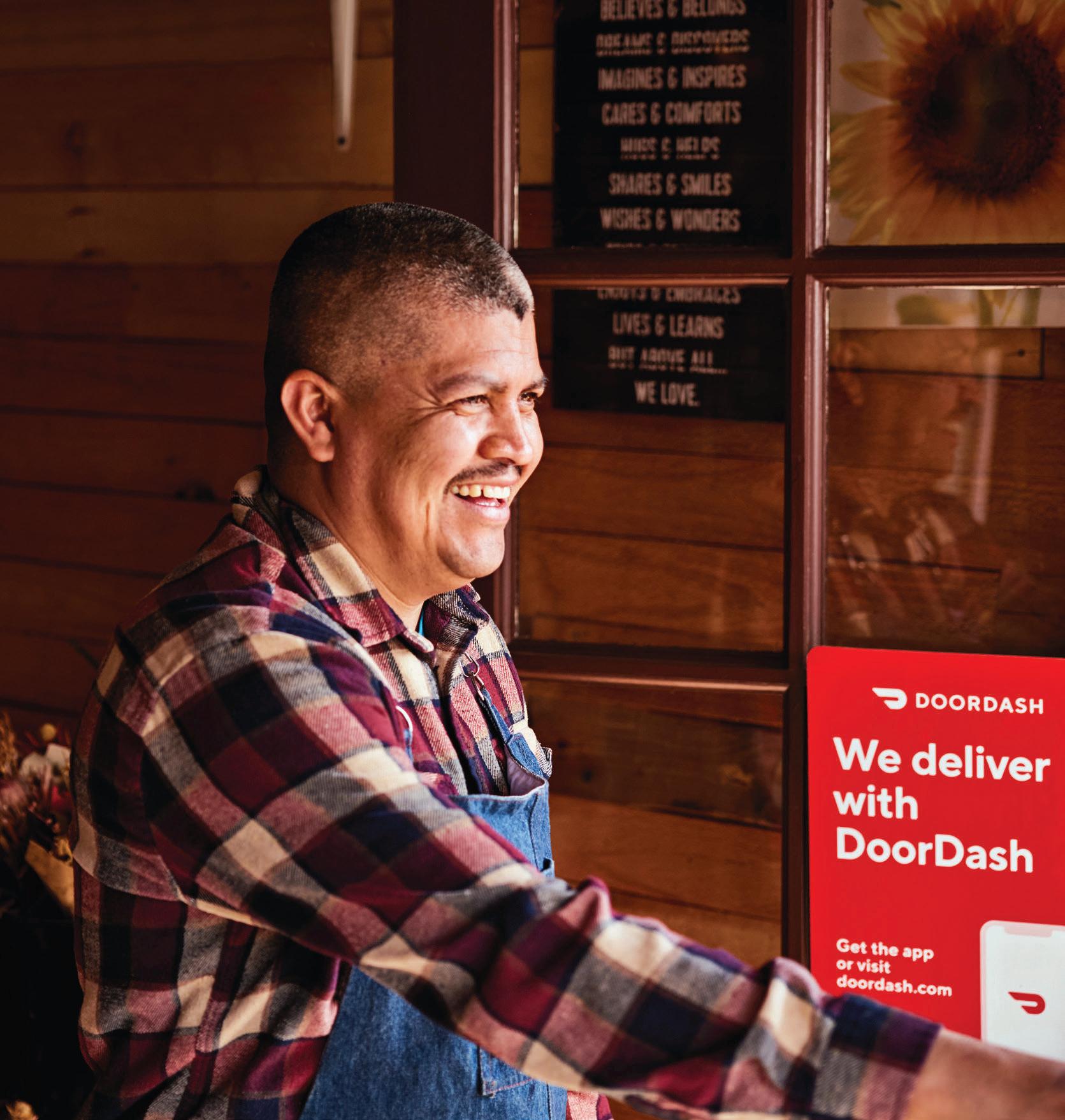



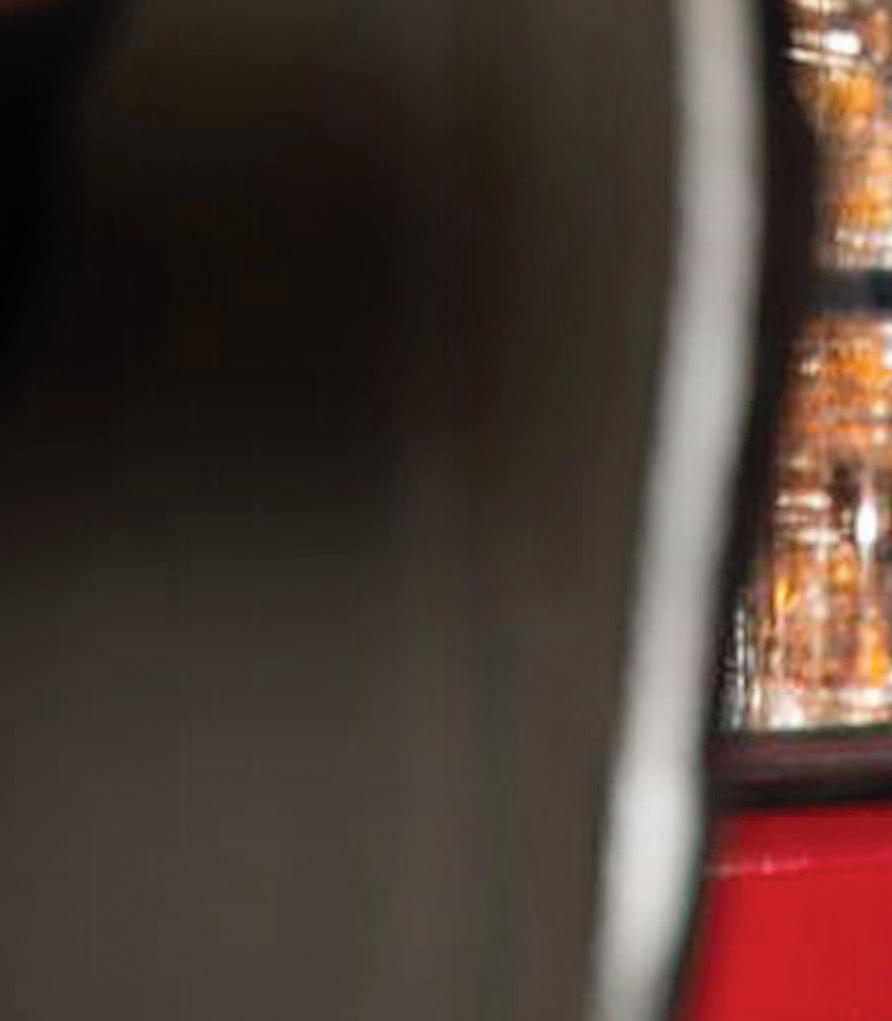




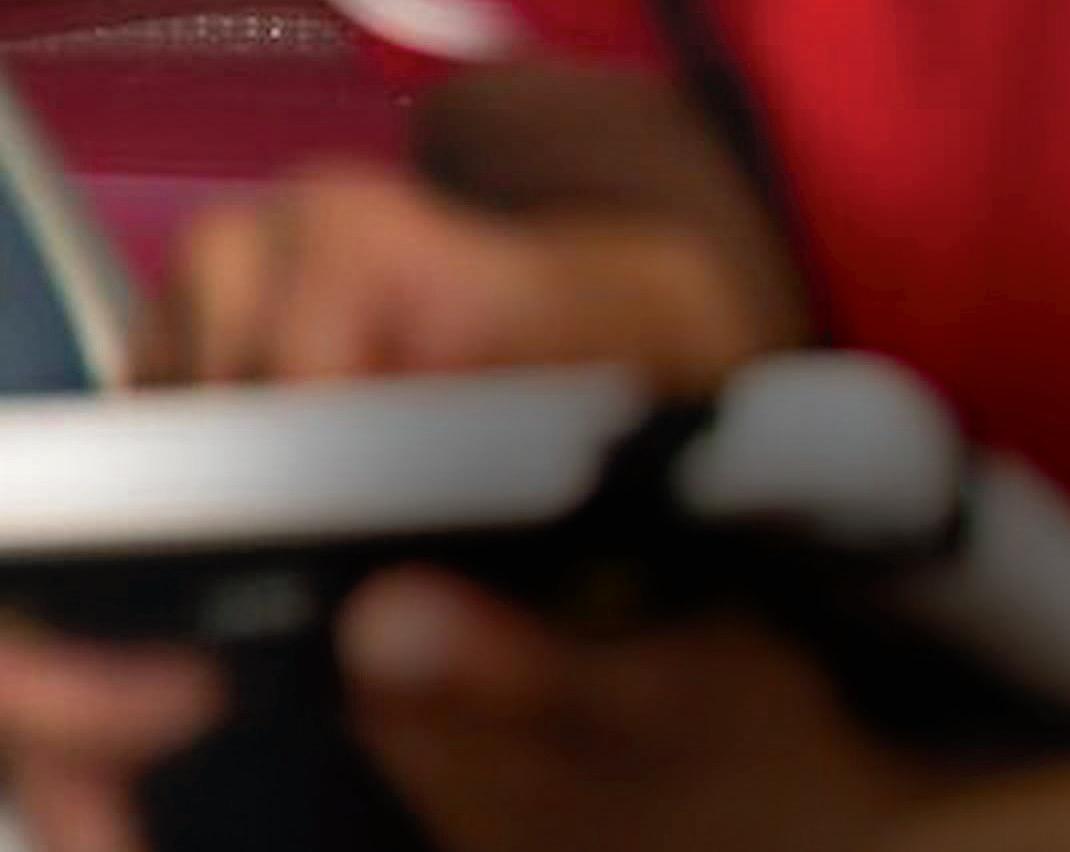
 / BY DANNY KLEIN
/ BY DANNY KLEIN

Technology and innovation inspired by COVID-19 have turned quick service’s biggest category into something hardly recognizable. And that’s a great spin all around.


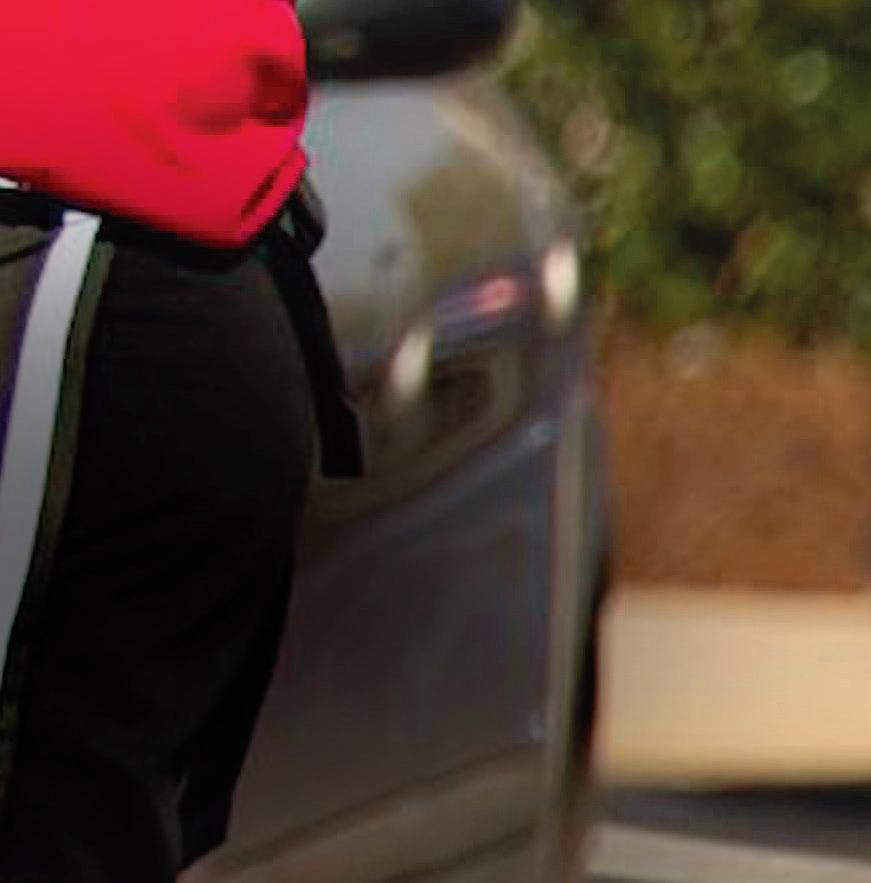



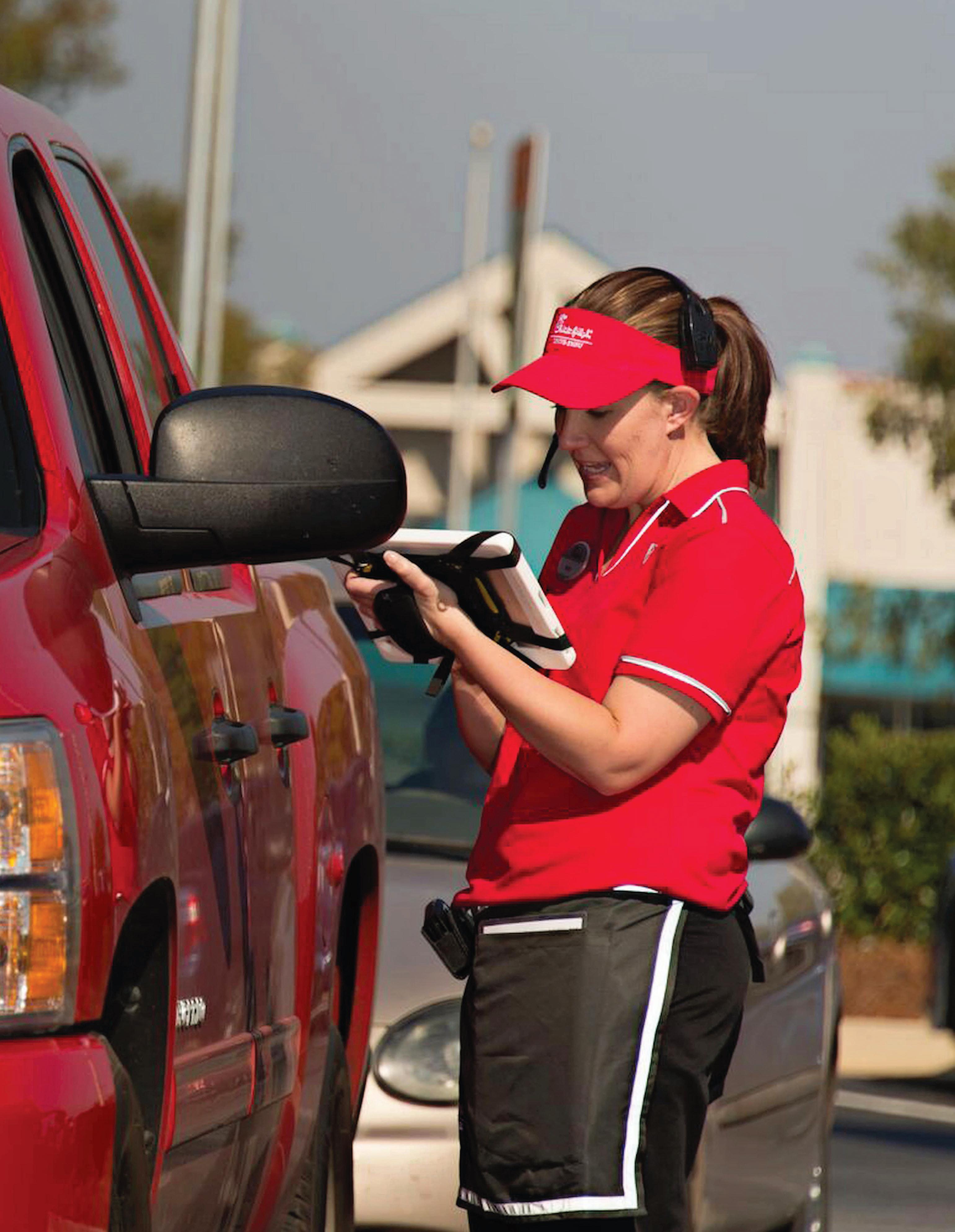
a feature the Wendy’s luminary coined the “Pick-Up Window.” It was so revolutionary guests needed instructions on how to talk through the speaker to place an order.
In some ways, the COVID-19 era feels the paradox of this 52-year-old page in fast-food history. Consumers today, according to the survey portion of the 2022 QSR® Drive-Thru Report, are more satisfied with their drive-thru experience than at the peak of the pandemic. It’s why brands, from Wendy’s to Chipotle to Applebee’s, haven’t dialed back in light of cafes reopening across America. If anything, the COVID stabilizer has become the industry’s most innovative arena. And customer behavior was hardly disrupted the way it was five-plus decades ago. Upgrades such as better signage, sanitation, and, of course, technology, were ticks guests had been waiting for.
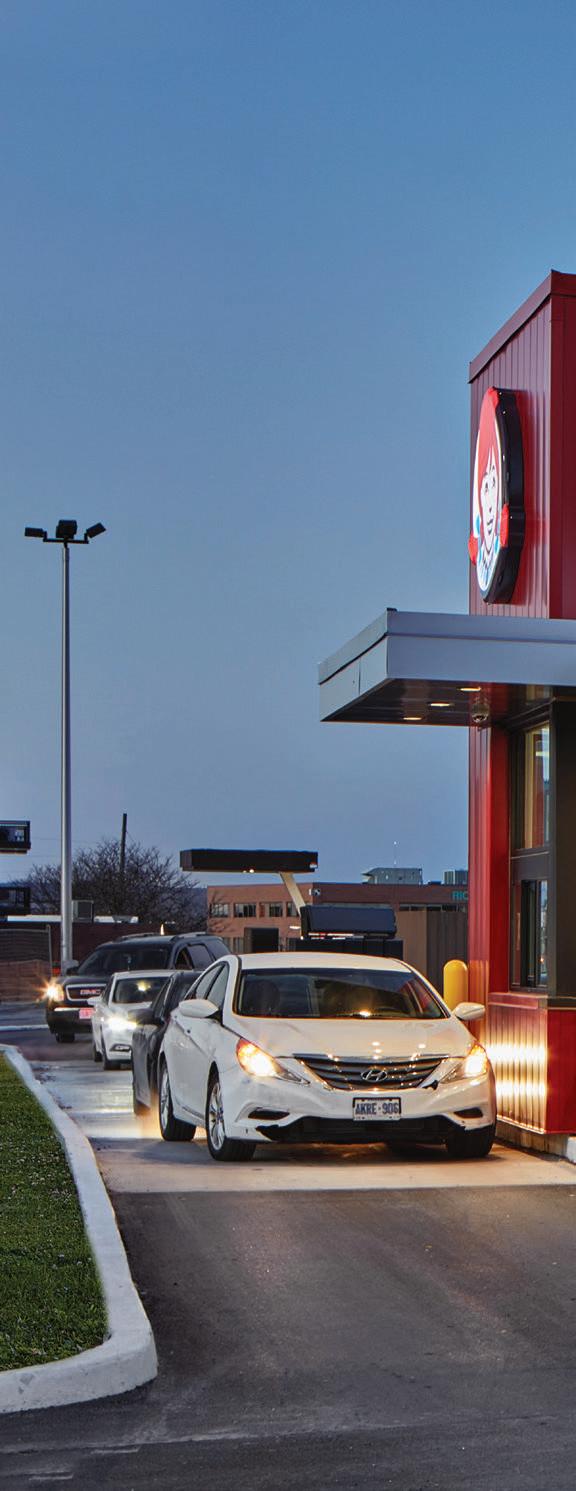
Deepak Ajmani, Wendy’s U.S. chief operations officer, has seen this clearly in recent data. The burger chain adopts an “always on” approach highlighted by its Voice of Customer satisfaction survey, as well as employee and social feedback. Of late, the same line revealed by the QSR® Drive-Thru Report continues to flash. “Insights from the survey responses have revealed an upward trend in satisfaction, indicating that customers are more likely to return to our restaurants,” he says.
This year’s QSR® Drive-Thru Report surveyed more than 1,000 consumers who had visited at least one drive-thru in the previous 30 days. What’s also visible is this rising sentiment owes a good deal to technology.
Perhaps the best way to illustrate it is to go back in time again. The first drive-thru sprung up in 1947 on Route 66 in Springfield, Missouri. The late Red Chaney’s Red’s Giant Hamburg claims the title, although loose-meat sandwich chain Maid-Rite says the same (a year later in 1948) The original In-N-Out Burger—1948 in Los Angeles—is likely the longest-running given Red’s closed in 1984, while Jack in the Box, come 1951, boasts the definition of the first drive-thru-focused chain to open as such, which it did at a time when car culture lit up the landscape.

But semantics aside, the concept was straightforward at creation—provide a counter to the carhop service consumers were familiar with. And it was billed as more convenient for guests and restaurants alike. Guests responded.
So it bears asking what are diners giving restaurants credit for at the drive-thru today, and why is that shooting satisfaction higher? When asked what the top two reasons they choose to order using the drive-thru were, per this year’s study, guests picked “Convenience” and “Speed of Service.” Similar to last year’s edition, it’s become crystal those factors aren’t tied at the hip any longer. In fact, one is holding fort while the other ebbs. Seventy-eight percent of customers picked convenience as their No. 1 drive-thru draw. That figure was 79 percent last year and 75 percent in 2020. Speed of service, meanwhile, clocked in at 42 percent, a full 9 percentage points down, year-over-year (it was
45 percent in 2020) For vital factors driving future drivethru visits—what would inspire a repeat trip—more than half (58 percent ) indicated order accuracy was most important. It was more than twice the second metric, speed of service, at 23 percent.
A menuboard placed ahead of the ordering speaker (18 percent ), order confirmation screens (18 percent ), and the ability to pay with mobile phone or app (11 percent ) rounded out the top 5.
This isn’t to say speed of service at the drive-thru has become obsolete through the COVID window. Customers in the survey said they’d be willing to spend 13 minutes when ordering through a drive-thru (same as last year and a minute higher than 2020). They noted they typically wait 10 minutes and think 8 is ideal.
Respondents considered it reasonable and fair to spend just under 6 minutes prior to ordering; 4.95 minutes between placing order and picking up; 4.72 parked in a separate waiting area at pickup when order was not ready; and 3.38 placing their order.
Speed now is simply a more involved transaction that restaurants can influence from fresh angles.
Despite reopening dining rooms, Ajmani says drive-thru has remained Wendy’s customers’ preferred way of interacting with the brand, and it’s due to
In 1970, Dave Thomas introduced what’s generally labeled the first modern drive-thru,WENDY’S OMNICHANNEL EFFORTS ARE TAKING HOLD AS CAPACITY IN THE DRIVE-THRU REMAINS HIGH.
the fact it addresses three critical elements of the quick-service experience: accuracy, convenience, and speed (as the survey data reflects).
In the past year, Wendy’s took a four-pronged approach to elevating these bars. It expanded convenience ordering options, including through the Wendy’s app, kiosks, and pickup spots and grab-and-go shelves. “These options allow customers to interact with us using the platform of their choice,” he says.

Alongside, Wendy’s opened dining rooms for guests who prefer it, and continues to encourage customers to “go digital” by using mobile carryout via Wendy’s app. Consumers order ahead and schedule a pickup time. When they arrive, they park in dedicated mobile pickup spots, come inside, grab their order, and leave without getting in the drive-thru line.
Lastly, Wendy’s is testing new processes at the drive-thru itself, like separate windows and pickup points for delivery drivers. The latter shifted some of Wendy’s largest orders out of the pickup window lane.
But this is where the puck has been sent forward for restaurants. “Omnichannel” was a term on the minds of every operator when COVID hit. Once drive-thru capacity stuffed, restaurants rushed to open channels of trade to meet guests where they were.
The idea today that a restaurant has a mobile app or offers website ordering is far from a differentiator. If guests can’t access the brand through the means they want, they head elsewhere. You could even argue the experience must mirror ecommerce habits in general. Friction in the ordering process has become the throughput divider of a changing generation.
How does this affect drive-thru? As we’ll explore, it’s a puzzle of integration and connectivity. Frequency is here to stay, and so are the newfound ways restaurant customers want to order. COVID essentially put a drive-thru screen in the hands of nearly every consumer in America. It’s a reality that both raises the stakes and opens the potential.
Wendy’s, for one, is exploring what it says is an industry first, where customers can use voice AI tech to place orders with Coca-Cola Freestyle machines via speech. Their choice is then dispensed in the dining room while crewmembers focus on preparing the rest of their order.
The brand also rolled the availability of hand-held pointof-sale devices systemwide. Like Chick-fil-A and In-N-Out, employees have the ability to roam the drive-thru lane and take orders directly at customers’ cars during peak periods.
In the back of the house, at many locations, Wendy’s
implemented new solutions like Pickup Window Timer
Was your drive-thru order filled correctly and completely(including special request)?
Leaderboards, which rank the restaurants within a district or area on their service time achievements; and optimized bagging procedures where new kitchen video screens offer a clear and reflective breakdown of drive-thru, mobile, and register orders to help employees accurately fulfill requests.
And it’s coming to life from the ground up. Wendy’s unveiled a new traditional build in mid-August that’s going to be its future-forward design standard, called Global Next Gen. There’s a dedicated drive-thru window to help delivery partners pick up orders and an optimized kitchen layout orientation designed to boost efficiency through touchpoints. Dedicated mobile order and delivery parking, and mobile order pickup shelving, finish the model.
“We still focus on car counts and speed of service, but accuracy and taste of food as well as overall customer satisfaction and likelihood to return are also crucial indicators,” Ajmani says.
Chick-fil-A’s performance in the QSR® Drive-Thru Report has become a yearly practice of juxtaposition, and one that bespeaks broader trends. The brand lagged the field in average service time at 325.47 seconds, according to Intouch Insight’s Annual Drive-Thru Study, which serves as the data portion of this year’s report, based on store audits (see below). Taco Bell paced the pack at 221.99 seconds. Both have become familiar results. But calling Chick-fil-A the country’s “slowest” drive-thru falls well short on context, as customer sentiment backs. The chain was given a 93 percent for speed of service satisfaction, per the survey, which trailed only Arby’s (96 percent) So if it is, indeed, “slow,” guests don’t seem to agree.
It boils down to a few realities. The first is a stark, unde-
The 2022 version of Intouch Insight’s Annual Drive-Thru Study included 1,537 completed shops from June until end of July across 10 Brands: Arby’s—174 shops (11 percent); Burger King—168 shops (11 percent); Carl’s Jr.—87 shops (6 percent); Chick-fil-A—174 shops (11 percent); Dunkin’—170 shops (11 percent); Hardee’s—89 shops (6 percent); KFC—167 shops (11 percent); McDonald’s—165 (11 percent); Taco Bell 173 shops (11 percent); Wendy’s—170 shops (11 percent). Nine percent of shops were breakfast (5 a.m.–10:29 a.m.); 49 percent of shops were lunch (10:30 a.m.–1:30 p.m.); 12 percent
niable one. As you go down through Intouch Insight’s dive into how many vehicles were in line at drive-thrus, the numbers start to flip. Chick-fil-A begins at the bottom—only 11 percent of the time a driver pulled up were there no cars ahead—and rockets into its own stratosphere at the fivecar mark. There, shoppers saw five vehicles lined up nearly 11 percent of the time. The closest brand was McDonald’s and Burger King at 4 percent.
The most telling stat, however, is the 10-plus cars metric. There, Intouch Insight data discovered lines of that length and longer 16 percent of the time at Chick-fil-A. McDonald’s followed at 2 percent, while Arby’s and Wendy’s each notched 1 percent. Everybody else was at zero.
The average cars in line went as follows: Chick-fil-A, 5.45; McDonald’s, 3.13; Wendy’s, 2.67; Arby’s, 2.28; Burger King, 2.19; Taco Bell, 2.17; Dunkin’, 2.11; KFC, 1.8; Hardee’s, 1.64; and Carl’s Jr. 1.63.
The notion is clear-cut: Chick-fil-A’s drive-thrus were “slower” because they were busier. There were more cars for shoppers to get through. And this goes far beyond anecdotes. According to filings, of the chain’s 1,836 U.S. freestanding restaurants outside of malls last year (those open and operated for at least a full calendar year, from a total of 2,023), average annual sales volumes were $8.142 million, with 849 of those, or 46 percent, producing figures at or above. One operator pushed $17.16 million.
For perspective, if you put Outback and Cracker Barrel together, you’d be at $7.92 million.
Matt Abercrombie, Chick-fil-A’s senior director of service
of shops were late afternoon (1:31 p.m.–4 p.m.); 29 percent of shops were dinner (4:01 p.m.–7 p.m.); and orders consisted of a main item, side, drink, and special request
Intouch Insight’s leadership team has hands-on experience partnering with the top quick-serve restaurant brands to collect and centralize data from multiple customer touch points, giving them actionable, real-time insights in an advanced analytics platform.
Founded in 1992, Intouch is trusted by over 300 of North America’s most-loved brands for their CX, customer survey, mobile forms, mystery shopping, and operational and compliance audit solutions. For more information, visit www.intouchinsight.com.
For the consumer survey portion of the QSR Drive-Thru Report, The FoodserviceResults team, in partnership with QSR magazine conducted a comprehensive, nationally representative survey of
drive-thru consumers in the U.S. using an online survey sample in July 2022. This research included tracking questions and comparative data from the 2021 and 2020 studies, as well as new questions about post-pandemic operations, technology and other key areas of interest. Leveraging insights from numerous industry experts and secondary research, the finalized survey was completed by 1,010 drive-thru consumers during fieldwork. To ensure a relevant respondent base was achieved, all participants were screened to only include those who had at least one drive-thru occasion in the last 30 days. An extensive cross tabulation of the respondent sample data was conducted in order to identify major trends, demographic/behavioral themes and other nuances in the data. Following analysis of all data, this report was developed to communicate key findings and important data from the study.
Intouch Insight is a CX solutions company, specializing in helping multi-location businesses achieve operational excellence so they can exceed customer expectations, strengthen brand reputation and improve financial performance.


Don't send incorrect





Don't send any more incorrect







Don't send any more incorrect orders.

Don't
Harnessing the power of AI technology and the precision of a scale, Acrelec’s Double-Check© ensures every order is accurate before it goes out the door. Down to the ounce, customers receive exactly what they order.
Harnessing the power of AI technology and the precision of a scale, Acrelec’s Double-Check© ensures every order is accurate before it goes out the door. Down to the ounce, customers receive exactly what they order.
Harnessing the power of AI technology and the precision of a scale, Acrelec’s Double-Check© ensures every order is accurate before it goes out the door. Down to the ounce, customers receive exactly what they order.
Harnessing the power of AI technology and the precision of a scale, Acrelec’s Double-Check© ensures every order is accurate before it goes out the door. Down to the ounce, customers receive exactly what they order.





LEARN MORE AT ACRELEC.CO/DOUBLE CHECK
LEARN MORE AT ACRELEC.CO/DOUBLE CHECK
LEARN MORE AT ACRELEC.CO/DOUBLE CHECK
LEARN MORE AT ACRELEC.CO/DOUBLE CHECK






and hospitality, says the brand has approached drive-thru consistently through COVID—“This idea that we know in the drive-thru the guest wants speed and accuracy, but they don’t want to feel rushed,” he says.

Chick-fil-A was one of the early brands to shutter dining rooms back in March 2020. Its focus went right to bringing hospitality outside. Face-to-face ordering is a model Chick-fil-A has deployed for years, and one that’s started to proliferate industry-wide, as Wendy’s hinted.
“We believe that looking eye-to-eye with the customer
allows for a connection that happens at the beginning of the drive-thru,” Abercrombie says.
That’s one part of it—this notion Chick-fil-A can move the line but not in a way where the customer feels less cared for. Think of it like a full-service restaurant conducting table checks instead of seating a guest and disappearing for 30 minutes.
The other element, though, is it’s redefined the static nature of classic drive-thrus. As Abercrombie describes, if you pull into a drive-thru and there’s a car ahead with a

family of five, it’s a far different experience to get your order in than wait until they’re finished so you can pull ahead.
Amid COVID, Chick-fil-A refined the approach by finetuning what’s basically a check-point system where customers interact with employees at multiple points before pickup. It keeps users engaged and also enables Chick-fil-A to adjust based on individual orders, not just the queue. For instance, alerting one car to pull forward to a waiting spot while sending another to the window. You’ll also see this with order takers walking alongside cars as they move up.
In the QSR® Drive-Thru Report survey, roughly a third ( 31 percent) of consumers demonstrated a preference to placing orders with an employee in line. What that suggests is some still view using a speaker/pay window as a quicker option. To put it plainly, not everyone is doing it as effectively as Chick-fil-A yet—there’s more to the model than placing employees outside.

At one Central Florida Chick-fil-A, to share an example of the detail required, the location puts numbers on car windows like tables in a dining room. One employee serves as a traffic controller, like you’d see at an airport (39 percent of respondents in the study said merging in a double drive-
thru lane gave them stress), and funnels cars from multiple lanes in. The window numbers allow employees—all connected via devices—to know whose order pulls up by the car number and to not only react accordingly, but to offer them personalized service.
There are also some Chick-fil-As where employees are outside the drive-thru window and physically bring the food over. “I think that’s another opportunity to connect with the customer, and so that’s what we wanted to do,” Abercrombie says. “We want to know our customers, we want to connect with them, we want to make sure that they’re not only getting great food, accurate order, but that they feel cared for in the process, personally and connected with.”
And it shows up in data, too.
“Although technology and configuration are critical elements to offering a smooth drive-thru experience—nothing trumps the service your employees deliver,” says Laura Livers, senior director of business development at Intouch Insight. “Year after year, the data shows that order accuracy is 15 percent higher when the service is rated as ‘Friendly,’ an increase of 1 percent over last year’s data.”
“And not only does accuracy increase when employ-



Our talented designers can create seasonal Limited Time Offer graphics & videos.

The Howard Company offers bundles of hours to use towards both Design & Digital services.
Our digital team can assist with uploads & scheduling seasonal limited time offers to display on screen at all locations on a single day.
Our team of experts coordinate with franchisees on product pricing & schedule their LTO to display on live date.

If you have already purchased a service bundle & need more hours towards LTO designs, content management or roll outs, The Howard Company also offers +5 hour extensions.
ees take a friendly approach with customers, but the whole experience is accelerated,” Livers adds. “The average total time with friendly service is almost three and a half minutes faster than with unfriendly service.”
These efforts are rooted in hospitality for Chick-fil-A, but they’re also a reaction to what quick-serves throughout the sector addressed in 2021: overflowing capacity. Turning site pads into transaction centers (think curbside spots ) has been one counter.
So have been the lanes themselves. It was a common sight to see makeshift multiple-row setups in 2020. Operators headed to home improvement stores and grabbed a few cones and got to work.
The lasting view, though, is going to take an integrated approach as much as one that simply allows more cars to flow in. Chick-fil-A in June announced it was testing an “express drive-thru lane” in about 60 locations, with further rollout likely. Jonathan Lassiter, a senior integration leader on Chick-fil-A’s service and hospitality team, called it “a gamechanger for our busy customers and our team members.”
Logistically, it’s a partially or fully dedicated lane (depending on the site) that enables customers to order ahead and bypass the other line and go right to pickup. Users choose a location on Chick-fil-A’s app, select “Drive-Thru Express,” and place an order. When they arrive, signage points to the express alley, where they use the app to scan a QR code in the dedicated lane before pulling around to receive their order from a Chick-fil-A employee. In tests, the company said the express lane decreased wait times “significantly.” And “most guests” were choosing to use it again on their visit.
In the QSR® Drive-Thru Report survey, about a third (38 percent ) of consumers found mobile ordering for drivethru very appealing.
Like Wendy’s, Abercrombie says Chick-fil-A’s busy drivethrus didn’t vanish when dine-in mandates did. There have been plenty of stories of the brand’s lines causing traffic jams and prompting meetings. In Pennsylvania’s Newtown Township, for instance, the board of supervisors approved a settlement that granted the construction of a 400-square-foot addition to a Chick-fil-A kitchen and a right turn lane along the main road to address “significant stacking issues.” It also green-lighted a bypass lane to allow customers who received their orders to drive past the pickup window and exit the lot.
Solutions like the numbers on windows and Chick-filA’s broader express lane rollout are operator-inspired to these exact kinds of challenges, Abercrombie says. “And then what ends up happening is the support center, which is what we call our corporate office, we get wind of it, and then have the opportunity to reach out, engage with an operator, and then help bring connections to the technology and other assets that might be helpful to make it work even better,” he says.
Chick-fil-A has also invested in canopies to shield workers from the elements as well as granular details like employee apparel, from cooling options seen in athletics to coats designed for winter. There’s little to zero evidence Chick-filA’s drive-thru business will taper off in the coming months, no matter how the climate resets in the wake of COVID. It’s a point defined throughout the QSR® Drive-Thru Report— customers came to the drive-thru for safety during the

pandemic and they’re staying for the experience. And there’s more to it than convenience. Just look at Chick-fil-A. The experience in the car is as highly regarded as in-store.
When asked if they received “friendly” service at the brand, 88 percent of people in Intouch Insight Annual Drive-Thru Study’s agreed. Only 1.7 percent deemed it “not friendly.’


This is unquestionably a differentiator for Chick-fil-A and not something that’s universal in the industry. “What’s worrisome to see in the study data, is the year-over-year decline in ‘Friendliness’ scores back to 2019,” Livers says. “This decline is easily attributed to all the external factors facing brands over the last few years, but we were hoping to see these scores start to swing back.” However, Abercrombie says, a task ahead will be to spread that good will to other channels. Chickfil-A offers curbside and a dine-in mobile option where a customer orders at the table and has food brought up, without having to queue in line. “We still believe in what we’ll call analog experiences,” he says. “The traditional experiences. We don’t want to walk away from those being great experiences. We want to be able to really, for every channel, every experience that you have with a Chick-fil-A, we want it to be a remarkable one.”
“There’s always opportunity so you can serve more guests,
but can’t do it in a way that we’re going to lose that connection,” Abercrombie adds.
KFC has taken a multifaceted approach as well. Currently, more than 70 percent of the Yum! Brands’ chain’s orders are at the drive-thru—a number that hiked as high as 90 percent during COVID. The brand introduced Quick Pick-Up shelves last November to shorten drive-thru lines and provide an additional outlet. Guests place their order online or via KFC’s app and park in dedicated VIP spots to run in and grab the food. KFC’s NextGen design, which debuted in Q4 2021, features flexible double lanes that adjust based on the store’s demand. So if there’s too much capacity, it




Delphi’s indoor and outdoor digital menu board solutions are designed for QSR and Fast Casual business owners seeking to modernize their restaurant with full control over dynamic menu content via our Insight Engage™ 3.0 cloud-based content management system. The system supports on-screen order confirmation and dynamic pricing capability with integrations to most point-of-sale systems. Engage 3.0 has been designed to be easy to use, while supporting the most sophisticated menu design and programming requirements.
Delphi’s Insight Track™ timing systems provide QSRs with actionable real-time speed of service data in the drive-thru. Our Focus On feature identifies immediate service bottlenecks that need attention to keep the drive thru running at maximum efficiency. Further enhance your system with Score™, our cloud based competition ranking leaderboard that allows multiple stores to compete on a variety of performance metrics.

Delphi delivers a wide variety of indoor and outdoor digital signage solutions, from promotional to video wall displays available in both LCD and LED formats.

Seamlessly integrating with most QSR point-of-sale systems, our Endura® line of order confirmation solutions improve order accuracy, speed-of-service and customer satisfaction, leading to increased revenues and profits. Now available with new two-way video option to enhance communication with your customers.

Delphi’s Visera™ line of Interactive Smart Kiosks serve as ideal digital solutions for QSRs seeking to provide interactive engagement and self-service options for their customers or employees.



Providing clear communications is key to quality customer experiences and productive teamwork in the drive-thru. Delphi offers the Par G5 state-of-the-art wireless headset system available as a key component of our total drive thru technology package. The G5 is fully integrated with Delphi’s Insight Track timing system.

Was the primary menuboard a digital menuboard?
Did the restaurant have an order confirmation board (ocb)?
Was your drive-thru order filled correctly and completely?
Was the primary menubuard a digital menuboard (total)?
opens up a dual order point; if there’s a flush of digital business, it can turn into an express lane like Chick-fil-A’s pilot. That store also boasts a dedicated entry for Quick Pick-Up customers and delivery aggregators, along with dedicated parking and signage to direct guests to collect online orders. Additionally, there’s an integrated Quick-Pick-Up area for online orders with direct access from the kitchen to expedite order fulfillment.
Gagan Sinha, SVP of restaurant technology at Dunkin’ parent Inspire Brands, echoes many of the points made thus far. Namely, as dine-in climbs back, brands are faced with the challenge of keeping up with both in-store and offpremises dining. It’s put the need for a streamlined process at the forefront of the industry’s life-after COVID playbook.
About two-thirds of Dunkin’s 9,200 or so U.S. locations tout a drive-thru. Recent and ongoing enhancements through 2020–2022’s off-premises surge include digital menuboards,
kiosks, and improvements to its mobile app. “Consumers have continued to make dining decisions based on convenience and accessibility, giving us belief that the drive-thru uptick is sustainable. Brands like ours have responded by investing in both digital and real estate innovation, resulting drivethru-only prototypes and added digital channels like new mobile apps and third-party delivery services,” Sinha says.
Thirty-nine percent of respondents in the QSR® DriveThru Report survey preferred digital menus because “they were easier to read.” Only 9 percent “disagreed completely.”
Dunkin’ is also in the early stages of testing AI learning to bolster the experience and ease duties for employees. Sinha says more details are coming in the next couple of years, but for now, there’s a strong push toward the chain’s Next-Generation design that launched in 2018. It features an open layout with various off-premises options, including a traditional drive-thru lane and one for online and third-party
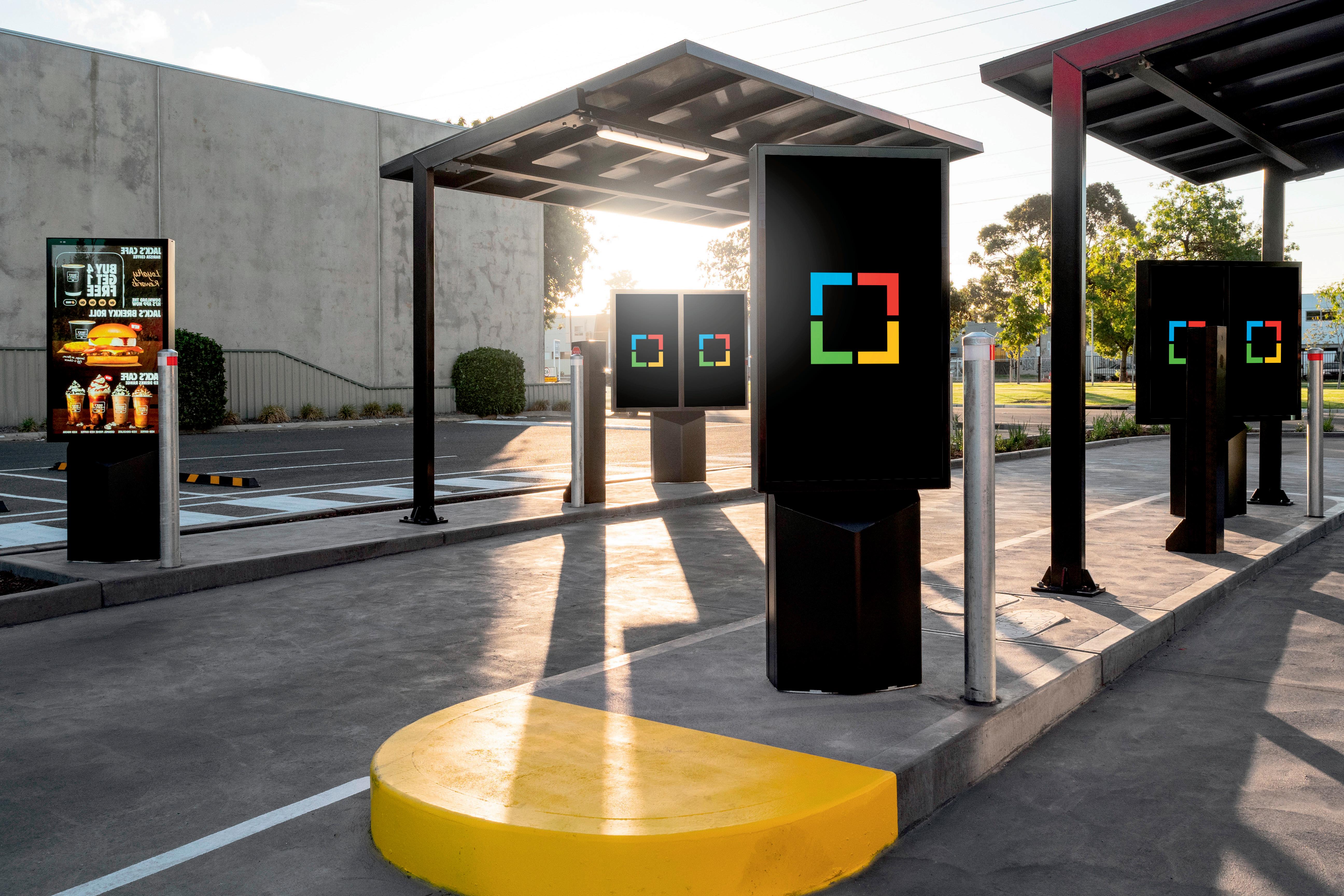

pickups. It uses a more streamlined menu and offers “On-theGo Ordering” as well, which enables guests to place orders through the Dunkin’ mobile app 24 hours in advance. Similar to what you might see with order pickup at Target these days, a guest notifies a store before they come.
For Dunkin’, a familiar aim in this year’s study has also climbed its priority chart. “We are aiming to provide a more personalized and modern experience across all locations, and to accomplish this we are prioritizing order accuracy,” Sinha says. “The implementation of digital order confirmation has proven to be a sound solution as it has allowed our stores to not only increase the accuracy, but also maintain speed.”

As you can see in the data from Intouch Insight on page 52, the run of order confirmation boards has fully kicked in. The Drive-Thru Report consumer section echoes that from the guest level. Order accuracy proved especially vital to Gen X in the survey, with 71 percent getting “angry” when their order was inaccurate. Seventy-three percent said order confirmation screens were “somewhat” or “most important” to their drive-thru visit. A menuboard placed ahead of the ordering speaker ( so there was time to review prior to order ) was also high at 78 percent. Both are up from 74 and 60 percent, respectively, in 2020. What this indicates is twofold—standards have hiked at the drive-thru due to usage; and secondly, as these systems spread and consumers use them regularly, they place them higher in their demand set. Broadly, it speaks to what’s taken shape industrywide— the drive-thru is better equipped to serve customers than pre-virus, and guests realize that.
“Order confirmation boards alone aren’t enough,” Livers says. “OCBs account for a 2 percent increase in order accuracy, but when paired with a verbal confirmation by the employee that the OCB is correct, the study shows an increase of 7.5 percent in order accuracy.”
According to the survey, drive-thru visits post-pandemic (67 percent ) are rated better among consumers than during the peak of the pandemic (61 percent ). Over the last couple of years, Sinha says, Dunkin’ has noticed guests are favoring personalized, modern, faster experiences—“that trend isn’t going away,” he says. And he reiterated the point about order accuracy. “Although speed continues to be an impor-


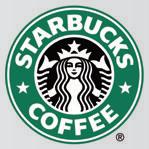


















tant factor for customer satisfaction, order accuracy is also key,” he says. “We will be keeping this top of mind going forward and implementing digital order status boards at our locations was a great step forward. Guests are now able to view and confirm their items before receiving their order, which helps prevent drive-thru errors and delays.”
One “huge” step forward for the brand was its “Dunkin’ Digital’ location in Boston, which opened last September. It’s Dunkin’s first digital-only store that consists of kiosks that handle all orders, eliminating the person-to-person model.
These are the kinds of updates that will stick. Health safety measures, such as protective window guards and touchless food and beverage exchange, proved slightly less important in 2022 than the prior year. Plexiglass and other protective guards at the window were a lead importance metric for just 44 percent of respondents. Two years ago,

it was 62 percent. Touchless payment was 40 percent this year; in 2020, it was 50 percent. The touchless exchange dropped from 56 to 39 percent.
But staples like enough napkins (72 from 71 percent ) and the right condiments (72 from 69 percent ) moved the other direction, pointing to something that’s flashed inside stores as well—guests are less forgiving than they were at COVID peak.
In May, Carl’s Jr. and Hardee’s parent company CKE Restaurants announced a $500 million investment to physically and digitally transform each brand over the next four to six years. More than 500 units across 20 markets would get an update by year’s end. Notably, this project includes new
Was




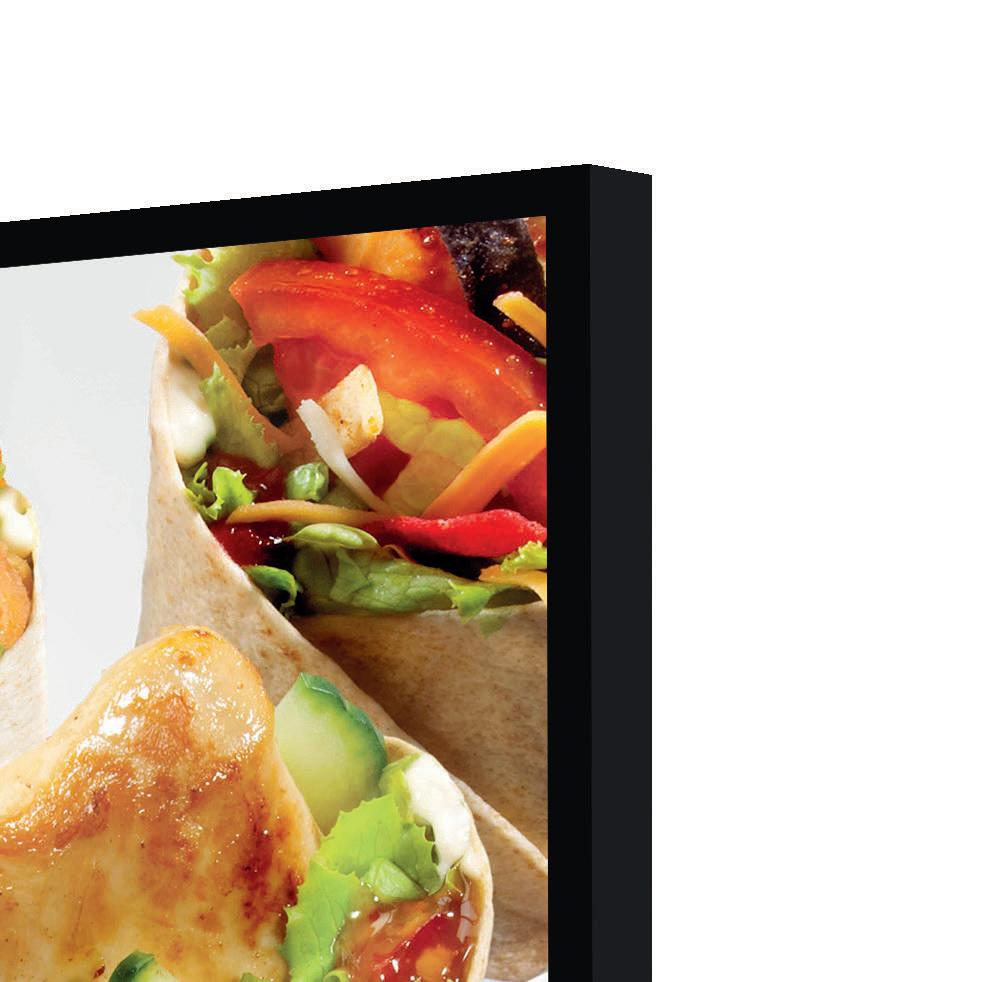

signage and freshly installed interior and exterior digital menuboards. Chad Crawford, CKE’s chief brand officer, says it allows simpler views for consumers, more specificity in daypart, and “certainly elevates that experience to the guest overall.” The process began in 2020 as CKE examined the industry’s horizon. Like every brand in this study, the company is doing its best to anticipate the future while understanding the drive-thru will undoubtedly key a major part of it. CKE is working to manage the menu and create a more compact list of items to choose from, which will make the drive-thru experience faster and more efficient. “But still offer best-in-class service and elevate in the areas they look for in friendliness and accuracy,” he says. Carl’s Jr. and Hardee’s both clocked in above 85 percent in order accuracy in Intouch Insight’s data. And they were No. 2 and No. 3 behind Chick-fil-A in the friendly metric at 82.8 and 76.4 percent, respectively.
CKE’s efforts are clearly in motion. But yet again, a familiar word rises to the top. “Accuracy is one that’s critical if a consumer chooses to come and spend time and interact with you as a brand,” he says. “You want to make sure that you’re satisfying their needs at a higher level of expectations.” Speaking deeper to Crawford’s point about menus, Gen Z was one cohort that appears to full-heartedly concur. Fifty-one percent of respondents in the QSR® Drive-Thru Report survey said they were overwhelmed by large menus. To the query of whether big menus stress them out at the drive-thru, 10 percent of customers—across all demographics—agreed completely. Twenty-one percent agreed; 22 percent were neutral; 27 percent disagreed; and 20 percent disagreed completely.
Forty-three percent of consumers noted they do not prefer drive-thru menus to have fewer options, as it may deter them from ordering their regular picks.

The reason this is happening in restaurants is more about traffic and wait times than consumer demand. It makes guest feedback and listening that much more critical, Crawford says. CKE is another brand testing AI to add efficiency. Voice ordering is in a test-and-learn phase for the brand, but an ever-present reality industrywide.
In the QSR® Drive-Thru Report, it’s obvious the concept has potential. It isn’t quite there yet, however. Interest in having a personal experience when ordering food from a drive-thru was apparent in the study, as more than two-fifths (45 percent ) said they dislike hearing an automated voice when ordering.

At the least, voice and similar automation is simply not in enough locations and deployed broadly enough for customers to know whether they need it or not, or prefer it. You could make the same claim of OCBs a few years back. AI could follow a similar path as adoption spreads and the experience matches the buzz.
When asked what type of drive-thru and ordering options they’d like to see more of in the future, 38 percent picked “tap-to-pay” technology,” up year-over-year from 33 percent. It was 49 percent for Gen Z. Unlike AI, tap-to-pay has become an increasingly familiar process for today’s consumer in many verticals. And so, guests want it after they’ve tried it, and that’s extending to the drive-thru.
Next up was automated tech that detects car arrival for pickup order (37 percent ); pre-paid pickup experience (34 percent); extended payment card reader (34 percent); mobile ordering options (33 percent ); mobile payment options (32 percent ); carhops (30 percent ); an ordering systems that remembers a guest and their preferences (27 percent); touchless experience (24 percent); an ordering system that remembers somebody’s last order (23 percent); more extensive digital signage (18 percent ); and, lastly, AI that helps make ordering decisions (11 percent). Overall, Crawford believes customers still want what they’ve always wanted from the drive-thru—dependability and hospitality in a fast and efficient manner. “What I would share is that I believe that consumers in general have elevated their expectations,” he says. “... The key element of that experience has not changed, but I do think that the last few years have shown and provided consumers more choice and more ways to interact with brands.” q


Danny Klein is Food News Media’s editorial director. Contact him at danny@ QSRmagazine.com

The best in QSR need the best in digital menu boards







Ready Access is your go-to source for Drive-Thru/ Walk Up service windows and air curtains. A trusted market leader for over 40 years, specified by the largest restaurant chains worldwide.



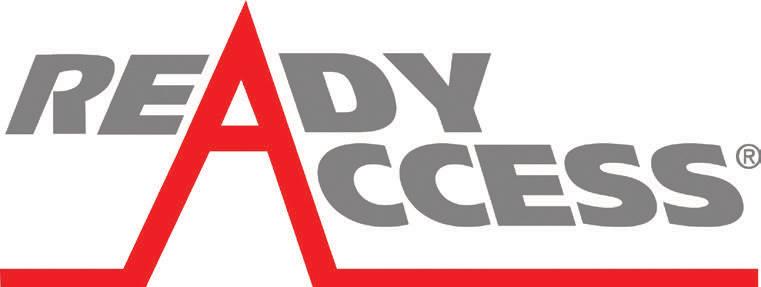




The perfect balance of durability, value, and function! All windows feature self-closing operation to meet health code.
Please call or browse our website to find the best configuration for your restaurant, including designs for energy efficiency, hurricane impact, California Retail Food Code, and security. 800-621-5045 | www.ready-access.com

With more than 65 years of design and development experience, The Howard Company focuses on serving its business partners with high-quality drive-thru menu systems and supporting drive-thru lane products. We are the master of the drive-thru lane with branded products that are guest-centric and guaranteed to bring the best ROI. From custom directional signage at the lane entry to clearance bars, canopies, digital or static presell boards, and main menuboards including our space-saving All-In-One system (menuboard, canopy, and order-confirmation display), communications systems plus coordinated installation of all product lines, you can look to us to be your one source for all your drive-thru needs. We are continually exploring new innovations to bring 21st century technology to the guest experience for all our partners. Make the Howard Company your one call for all your custom drive-thru lane design and development needs.
www.howardcompany.com/Products/DriveThruSolutions.htm



Innovators of best-in-class consumer engagement and business optimization solutions, Delphi Display Systems has been a technology leader in the restaurant industry for 20+ years. We have solutions installed in over 40,000 locations in more than 75 countries around the world. Our offerings include indoor and outdoor digital menu boards, order confirmation displays, drive-thru timing systems, cloud-based content management systems and realtime performance ranking leaderboards. For more information on the company, visit DelphiDisplay.com or call 714-825-3400

Combine the power of video and AI to measure the speed of service at the drive-thru, curbside, and dine-ins. Uncover hidden bottlenecks at every customer touchpoint, revamp restaurant design based on customer behavior data, and consistently deliver fast, personalized service. Partner with i3 and Interface today to delight customers, increase sales, and maximize productivity. Schedule a free consultation at i3international-interface.com to discover how your brand can get on the fast lane.”

ACRELEC has provided innovative hardware and software solutions to restaurant and retail brands throughout the world for nearly two decades. We are focused on achieving the highest level of customer satisfaction by delivering fully customizable technologies that are proven to increase revenue, improve operations, optimize staff efficiency and drive better aconsumer engagement.







We are expert integrators who put our customers first and invest in longterm partnerships. Our end-to-end, one-stop resource approach means that we are there to assist customers with every phase of their business transformation; from design to manufacturing to installation to on-going service. This approach helps save our customers time and money by working with just ACRELEC vs. multiple suppliers. Learn more at acrelec.com















WITH SUMMER TRAVEL KICKING INTO FULL GEAR, many quick-service restaurants are feeling the strain on their labor resources more than ever before. Prior to the summer, some restaurants had already started reducing schedules and operating exclusively through drive-thru or pick-up services.
However, two years of pent up demand for traveling is now sending Americans across the country to catch up on their previously canceled plans. According to a survey by TripIt, from Concur, 73 percent of Americans plan to travel this summer, a 50 percent year-over-year increase. At the same time, the restaurant industry is still dealing with a historic lack of labor. This equals long lines, reduced menus, limited payment options, decreased customer satisfaction, and, ultimately, less revenue.
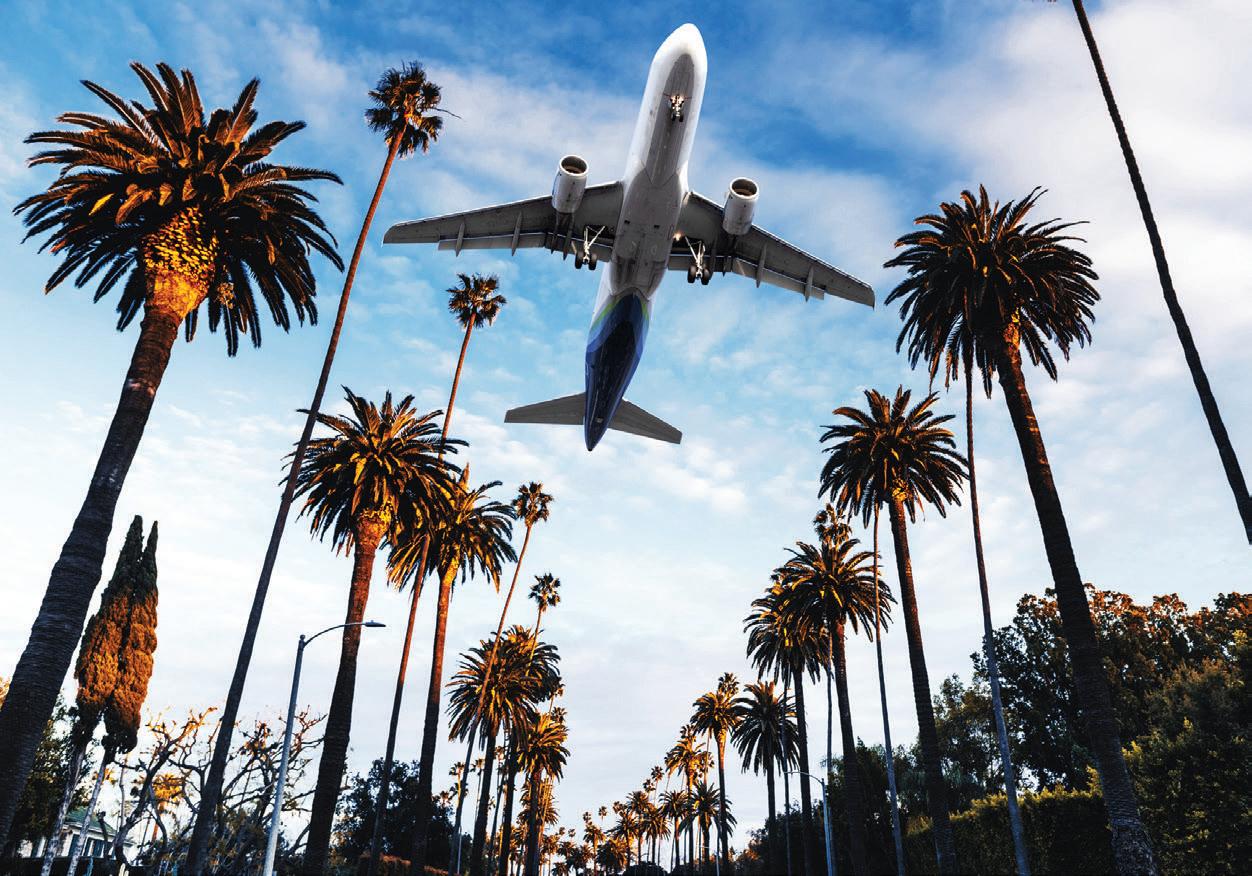
“This summer is going to be a real test for the restaurant industry,” says Lenny Evanseck, senior vice president of National Retail Business Development at Loomis. “Restaurants located in tourist destinations and around high-traffic travel locations like airports and hotels are going to be busier than ever. Leadership will need to manage the time of every operational task all while balancing employee retention and recruiting efforts.”
There are two main ways quick serves can minimize the impact summer travel and the labor shortage have on business: recruitment and retention efforts, as well as investing in automation. “There is a hugely competitive labor market right now,” says Evansek. “We are noticing that a lot of the same summer talent pool has opted for ‘gig’ jobs like driving for rideshare or third-party delivery companies. Also a strain on filling seasonal positions, the number of employed teenagers is at a level not seen since 1991 despite an increase of eligible employees in this demographic.”
Restaurants have to find a way to compete with the flexibility and higher pay often offered by the so-called gig economy. Beyond increased wages, restaurant operators looking for a competitive edge must deploy additional recruitment tactics such as support
for childcare, tuition reimbursement, healthcare for part-time workers, flex scheduling, and other incentives.
“While these tactics help, restaurants are still feeling a strain,” says Evansek. “This has led restaurant owners and operators to look at their overall operations and discover potential low-value tasks that can be automated.”
Through investing in automation, employees and managers can focus on guests and customer service while reducing time spent on back-store operations like cash handling, recruiting, onboarding, and scheduling. And when it comes to cash handling, Loomis’s Titan smart safe ecosystem reduces the time it takes employees and managers to perform mid-day drops and prepare deposits.
It also eliminates the need for managers to make trips to the bank, since cash is deposited into the safe, where it stays until Loomis’s armored car service picks it up. Best of all, even though cash is still physically on-premises within the safe, Loomis’s banking partners provide restaurants provisional credit for that cash waiting to be deposited. RET
To learn more, visit www.loomis.us/safepoint .
Seasonal travel is heating back up. Here are some ways to be ready for a bigger in-person presence.
›
›
›
›
› Enterprise-wide reporting

› Receive daily provisional credit


› Eliminate bank trips


› Keep funds safe


On October 1, 2010, the Midland Reporter-Telegram shared an innocuous 110-word news brief about the debut of a McAlister’s Deli location on Wadley Avenue in Midland, a West Texas town best known for oil and hosting the childhood home of former U.S. President George W. Bush.
The copy introduced the Midland restaurant as a “new model” for the Mississippi-based McAlister’s franchise, featuring a smaller footprint, patio dining, and WiFi, before tucking in one nondescript sentence unknowingly forecasting the future of fast-casual dining.
“The new location also includes a call-ahead window where customers who place call-in orders can pick up their food,” the story read.
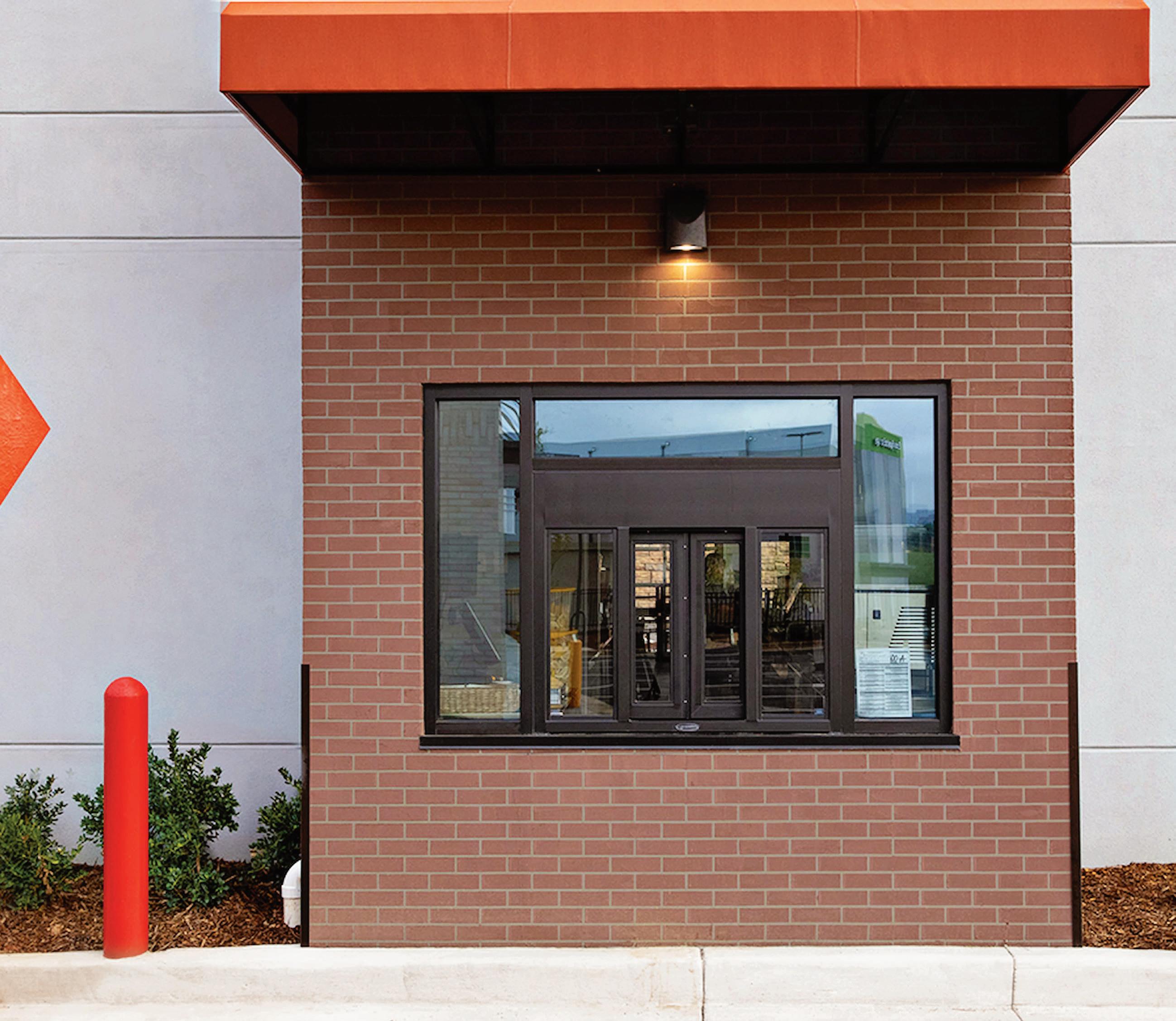
The rise of the pickup window—and how it’s emboldened and empowered fast casuals.
Months later, McAlister’s franchisee Richard Osborn spoke about the benefits of having the “call-ahead pick-up window” at the Midland restaurant. Osborn said the window—essentially a drive-thru lane without a speaker system and designed explicitly to accommodate carryout orders—was accounting for 15 percent of the store’s sales and was servicing 75–85 cars during a busy hour, easing congestion in the dining room and heightening convenience for customers.
It was, Osborn concluded, an unquestioned success, so much so he promised any future McAlister’s units built by his Southwest Deli Group would include a pickup window.
After a dozen years, a global health pandemic, and a technological revolution that sent digital orders at quick-service and fast-casual establishments soaring—thereby replacing the aforementioned phone-in order with a mobile order—one in four McAlister’s Deli locations host a pickup window today. Shelley Harris, senior vice president of operations for McAlister’s parent company Focus Brands, calls the pickup window, “a critical feature” in all new restaurant construction.
“The pickup window is a natural extension of how consumers’ expectations, preferences, and definition of service has evolved,” Harris says, adding that guests’ hunger for convenience expedited the implementation of pickup windows at McAlister’s and its fast-casual peers in the Focus portfolio, which includes Schlotzsky’s, Moe’s Southwest Grill, and Jamba. “The pickup window experience allows guests to engage with our restaurants in a way that can help simplify and streamline their experience.”
While fast casuals once largely shunned drive-thrus, a bold line distinguishing their more polished, sophisticated positioning from traditional fast-food players like McDonald’s or Burger King, the pickup window has emerged a mighty tool in recent years.
Investing heavily in digital ordering technology and seeking to address consumers’ constant hunt for convenience, if not safety in the COVID-19 era, fast casuals from coast to coast have
embraced the pickup window (or, alternatively, the pickup lane) to deliver speedy, safe service for the contemporary consumer. In the process, fast casuals have been able to challenge—if not top—the convenience and ease many drive-thru-powered quick-serves have long championed to consumers.
QSR talked with five fast-casual brands about integrating pickup windows into their store design, what the windows provide, and why they are here to stay.
To increase access and convenience for guests while also supporting the brand’s rising digital business, it began testing its so-called “Chipotlane” in early 2018, a drive-thru pickup lane designed to accommodate mobile orders from guests wishing to stay in their cars rather than entering the restaurant and plucking their order off the store’s dining room pickup shelves.

A quick success at Chipotle’s Ohio test site, Chipotlanes are now present at more than 400 Chipotle restaurants and quite intentionally not called drive-thrus—a distinction Chipotle chief development officer Tabassum Zalotrawala considers important as some jurisdictions prohibit drive-thrus.
Chipotlanes enhance access, ease, and satisfaction for guests and, as a result, have generated strong results for the brand. In fact, new restaurants featuring a Chipotlane open with about 15 percent higher sales compared to their non-Chipotlane peers launched during the same period, Zalotrawala reports. Yet more, Chipotlane orders represent the brand’s highestmargin transactions.
After finding success with the pickup window in suburban areas, Chipotle reenvisioned the Chipotlane for dense urban areas with high foot traffic and conceptualized a walk-up window where vehicular lanes were not feasible. The brand began testing its first walk-up window near Chicago’s Wrigley Field in late 2019 and now has nearly 20 in operation.
“Chipotlanes are a key growth strategy for the brand and we are building a real estate pipeline that will accelerate new unit growth in the range of 8–10 percent per year, with greater than 80 percent of new restaurants having a Chipotlane,” Zalotrawala says.

This includes the new Chipotlane Digital Kitchen in Cuyahoga Falls, Ohio, a digital-only prototype that serves guests exclusively through a Chipotlane and a walk-up window.
Zalotrawala refers to Chipotlanes as “the digital drive-thru of the future,” a pickup lane eschewing the traditional
Providing a more efficient, discrete, and modern experience
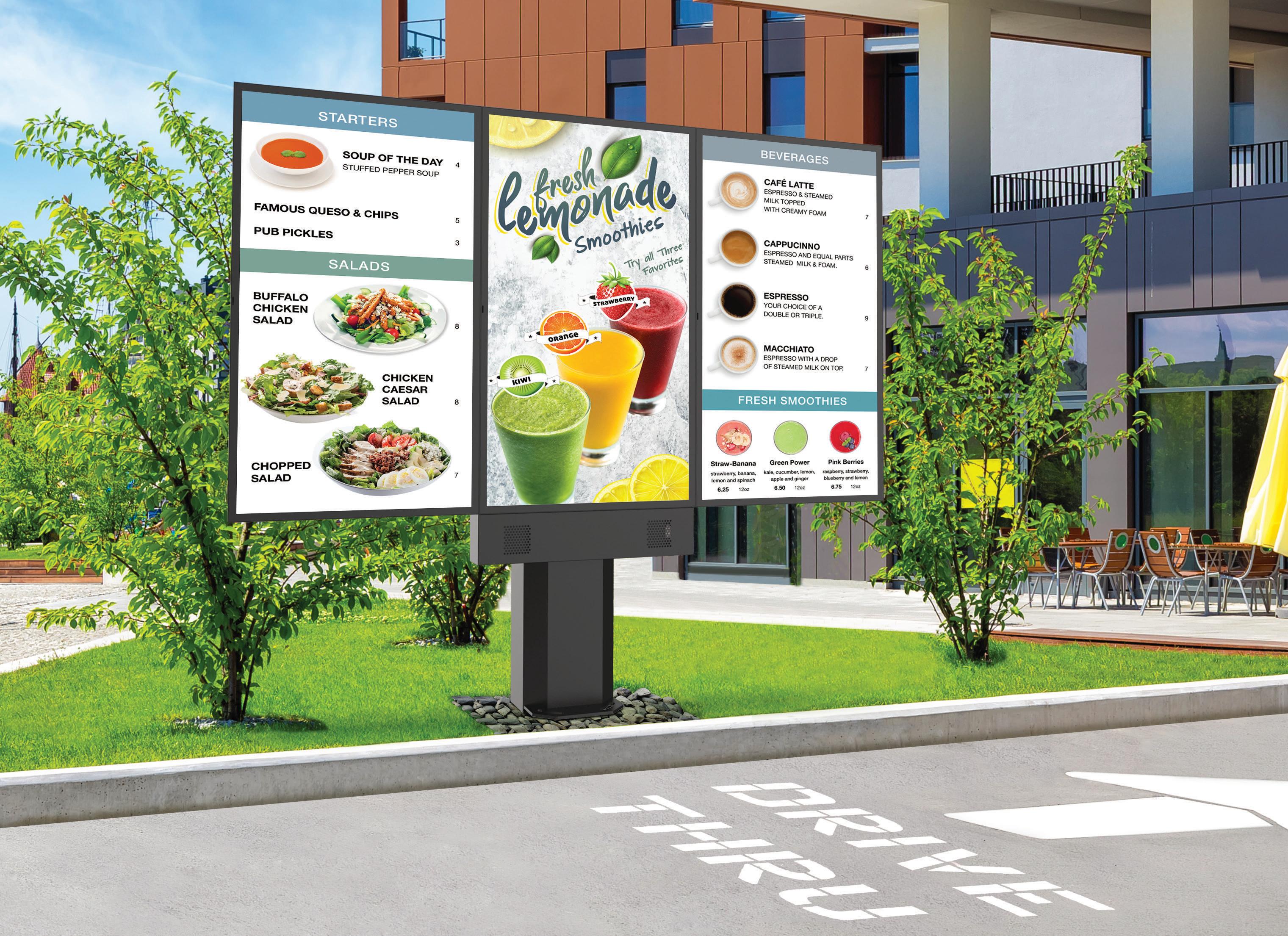



speaker box, menuboard, excessive signage, and stack of cars to empower a more efficient, discrete, and modern experience. She says the total Chipotlane transaction takes less than 30 seconds.
And Chipotle will continue investigating potential improvements to make things even better for guests, Zalotrawala promises. To reduce friction inside its restaurants and provide a seamless experience with front-of-the-house operations, for instance, Chipotle added digital kitchens, or second make lines, dedicated solely to fulfilling digital orders.
“Chipotle is focused on constant innovation to expand access and deliver exceptional in-restaurant and digital experiences,” Zalotrawala says.
Pancheros debuted its first pickup window last October in Moline, Illinois, a 40,000-resident city on the Illinois-Iowa border. The pickup window is devoted to fulfilling mobile orders for customers

can manage both digital and in-house orders. Pancheros vice president of operations Bill Adams says each store deploys staff to serve either mobile or on-site orders during peak periods, which creates an efficient environment for the restaurant and its guests.
When building future stores, Adams says Pancheros will continue to add mobile pickup windows whenever possible to address guests’ desire for flexibility when ordering.
“The design and layout of the restaurant will be a determining factor if this addition is possible, but we understand the need for convenience is there and want to find a solution to provide that to our guests whenever possible,” he says.
Quite strategically, Noodles & Company installed its first two Quick Pickup Windows in 2018 in Wisconsin, one of Noodles’ largest markets, to test the concept with guests already familiar with the brand. Once guests order on the Noodles app or website, they then receive an estimated ready time for order pickup at the drive-thru window.
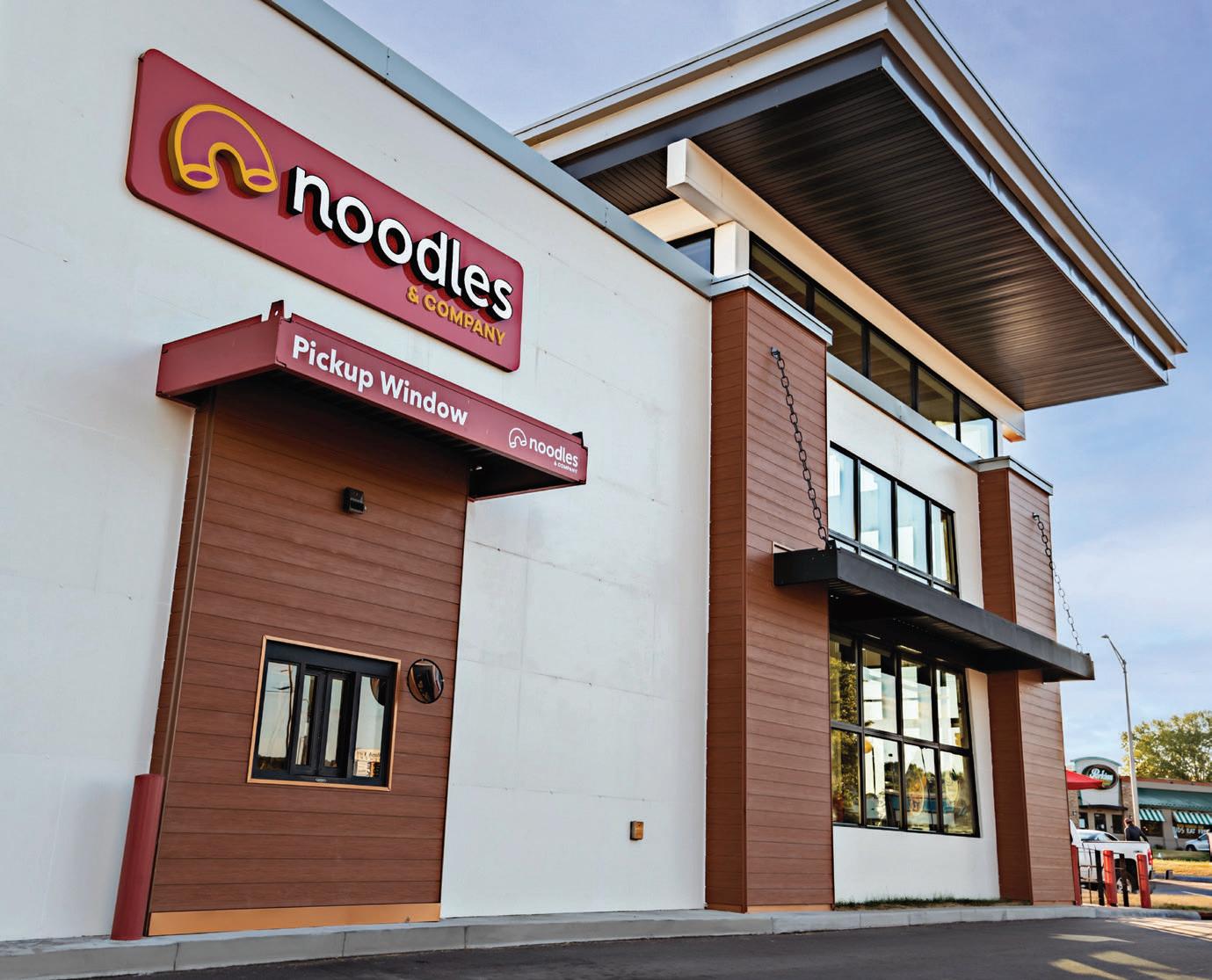
When restaurants had to shut their doors during the COVID19 pandemic, Noodles chief financial officer Carl Lukach says the value of pickup windows shined. The windows answered guests’ wishes for a safe experience and became especially popular with two of Noodles’ core demographics: families and guests with young children.
“The success of the Quick Pickup Windows during the pandemic influenced Noodles to implement them in new locations,” Lukach says.
who select “drivethru pickup” as their order mode on the Pancheros app. The 72-unit chain has since opened a second Pancheros with a pickup window in Bismarck, North Dakota.
Pancheros leveraged its robust loyalty program to notify local customers of the pickup window option, specifically using emails and push notifications. North Dakota-based franchisee Steve Majkrzak calls the pickup window at his Bismarck restaurant an absolute hit, especially during the blustery North Dakota winters.
“With the ease of not having to leave your car in below-zero temperatures, getting the same comforting burrito is a no brainer,” Majkrzak says.
Similar to Chipotle, the Moline and Bismarck Pancheros locations feature a second make line to ensure operations








After debuting Quick Pickup Windows in Monona and Madison, Wisconsin, 25 additional Noodles restaurants have since added the feature. As the 456-unit company considers new restaurant locations and openings, the ability to incorporate a pickup window looms large in decision-making. The windows combined with Noodles’ digital strength, Lukach says, are vital to meet the needs of today’s fast-casual environment and capitalize on long-term guest trends.
“We plan on prioritizing Quick Pickup Windows at new restaurants moving forward as it strengthens our off-premises capabilities and provides our guests with the utmost convenience,” Lukach says.
Focus Brands continues to evolve its prototypes and service channels with an eye on creating a simple, efficient guest experience, which includes adding pickup windows to its restaurants and investing heavily in consumer-facing digital technology to capture orders. There is, after all, a symbiotic relationship between the two, Harris notes.
“We have seen that with the addition of pickup windows comes the increase of mobile orders,” she says.
While McAlister’s was the first Focus-owned concept to integrate a pickup window, other fast casuals under the company banner have followed suit, including Schlotzsky’s, which introduced its Design 1000 prototype earlier this year. The Design 1000 features a double drive-thru in which one lane is dedicated to traditional drive-thru orders while a second lane fulfills mobile orders and delivery pickup.
“We have seen that by increasing accessibility and convenience, positive business results can follow,” Harris says. Through the Schlotzsky’s prototype, Focus will study consumer interaction with the double drive-thru option. Thereafter, the company can parlay those insights into sharpening the offering before employing it elsewhere. It’s a test-and-refine process Focus routinely employs.
McAlister’s, for example, recently added a button to its app allowing mobile order customers to alert restaurant staff they have arrived. The guest then receives a message directing them to pull into the pickup lane.
“That enables the restaurant team to provide an even more customized experience with each guest,” Harris says. “The restaurant team can quickly find their order, greet them by name, and send them on their way.”
For as much attention as simplifying the guest experience receives, Focus Brands also aims to simplify operations for its franchisees. At Moe’s, for instance, a traditional drive-thru has the potential to complicate operations given the menu’s vast customization possibilities. A pickup window for mobile orders, however, solves that potential pain point.
“Our guests expect to have the option to choose exactly what, when, and where they want to eat, so it is our job to make that process as easy as possible to stay top of mind,” Harris says.
With digital orders soaring in the post-pandemic world, Harris foresees brands needing to increasingly streamline guest access to stay competitive, which is why Focus continues investing in technology and its physical environments.
“The concept of pickup windows is here to stay and will only become more important as more and more guests see the value of the order-ahead service model,” Harris says. “Investing in digital and technology while also building and innovating our prototypes gives the savvy consumer more efficient ways to engage with our brands, which we hope keeps them coming back for more.”
In April 2019, CAVA opened its first “digital drive-thru” in Charlotte. A year later, the COVID-19 pandemic accelerated the brand’s investment in and commitment to developing next-generation stores catering to guests’ evolving experiences, which includes offering a pickup window. The 200-unit chain now has 14 digital drive-thru locations in operation.

“And more than 35 percent of our future development pipeline includes digital pickup lanes,” CAVA co-founder and CEO Brett Schulman says.
Like others, CAVA’s pickup-by-car windows are designed exclusively for digital orders placed on the CAVA app or website, and Schulman says the windows put power into the guests’ hands.
“We make it as convenient as possible for our guests to get their CAVA, however and whenever they choose,” says Schulman, adding that his company’s digital drive-thrus carefully and intentionally straddle the traditional drive-thru line by offering familiarity with a modern, digitally enhanced twist.
“It’s absolutely a drive-thru experience,” he says. “However, it’s not an ordering line; it’s a pickup lane for digital orders. The biggest difference is speed of service, without the loss of our warm hospitality. Guests drive through, pick up their order, and carry on.” q
Daniel P. Smith is a regular contributor to Food News Media and is based in Chicago.
MENDOCINO FARMS, a 46-unit sandwich brand based in California, has seen increasingly strong sales over the past couple of years.
This sales growth has led to expansion for the brand, which plans to open 10-13 more stores in 2022. But expansion brings new challenges, says Brian Pearson, chief technology officer at Mendocino Farms. One of those challenges has been managing an ever-expanding network of store units and the associated pieces of equipment.

“As our volumes have increased, we’ve definitely seen opportunity in some of the original equipment we’ve purchased,” Pearson says. “Obviously, the volume is a good thing, but we need to make sure we add resilience to some of the processes and equipment to handle it. Being able to mine for that data is absolutely crucial.”
It’s why Pearson and the team at Mendocino Farms reached out to Ecotrak, an enterprise software startup founded by former restaurant operators and executives. Ecotrak creates seamless repairs and maintenance requests to a network of reliable vendors if and when equipment needs attention.
For example, if an oven malfunctions, the store manager creates a service request in a matter of seconds from a mobile app. That request initiates a brief troubleshooting process to make sure the issue needs professional attention. If and when it does, a technician is called to perform service and the system automatically creates an invoice.
But what Pearson and his team especially love about Ecotrak is the platform’s ability to help leverage analytics and guide datadriven decisions. These insights are part of Ecotrak’s lifecycle management system, wherein each piece of equipment is input into the platform and the software aggregates information like whether or not the equipment is still under warranty, or the maintenance it has received in the past.
“Prior to using Ecotrak, we were ‘guestimating’ the age of our equipment, using our gut instead of analytics,” says Gene Davis, senior director of facilities at Mendocino Farms. “Now we’re able to look at the age and the value of the equipment and that helps
us figure out if it should be repaired or replaced. It also helps in another way, where instead of having to repeatedly repair a piece of equipment for the same reason over and over, maybe you say, ‘Hey, look at what Ecotrak is telling us. This might not be the right piece of equipment for us.’”
Ecotrak has made Mendocino Farms more efficient at what it does best—serve great sandwiches to its loyal customers while expanding its footprint further and further—but it’s also made team members’ lives a whole lot easier, Pearson says.
“That’s such a huge part of this—there’s a quantitative ROI, and we believe this has already paid for itself in the six months or so since we implemented it,” Pearson says. “But there’s also a qualitative ROI—we’ve improved the quality of life of our employees, as well as ourselves. Ecotrak has given us a wealth of data and created invaluable change and helped scale our model for growth— it’s hard to put a price tag on that.” RET
For more on Ecotrak, visit ecotrak.com.
“Prior to using Ecotrak, we were ‘guestimating’ the age of our equipment, using our gut instead of analytics.”

100% recyclable branded take-out packaging for easy mobile pickup, catering, and drive-thru orders.
























 BY KARA PHELPS
BY KARA PHELPS


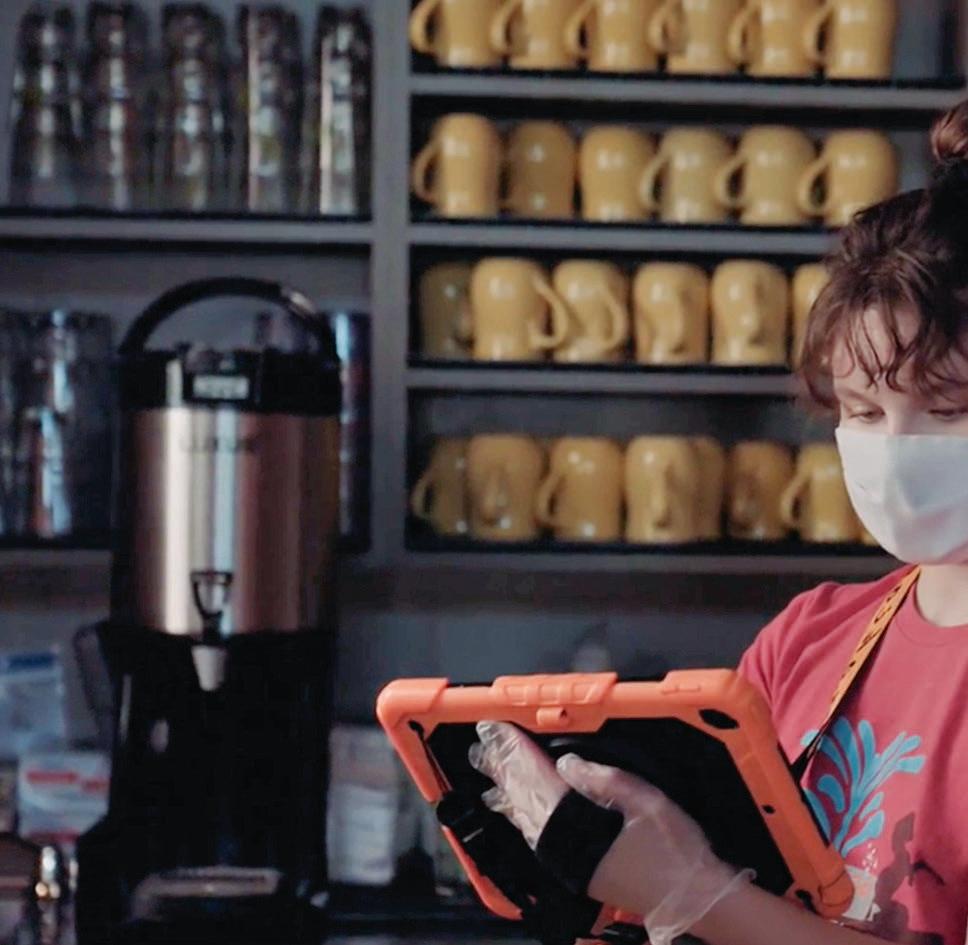
Food safety is not exactly a forgiving business. Even the smallest slipup on a bad day can quickly snowball into a nightmare scenario. According to the National Institute of Health, a single 250-person outbreak of foodborne illness can cost a quick-service restaurant up to $2.1 million.
The most common causes of foodborne illnesses in the U.S. haven’t changed, when looking at recent outbreaks in commercial foodservice operations. “I always go back to the standard issues that we have seen for several years related to food safety—ensuring employee health and hygiene standards are followed, taking end-point cooking temperatures and maintaining time standards, safely storing food and chemicals, and eliminating cross-contamination,” says Kevin R. Roberts, Ph.D., food safety expert at FoodHandler “Although the circumstances seem to change, these are always the biggest barriers with which we must contend.”
Handwashing is one of the easiest preventative behaviors, yet it’s also one of the easiest to overlook. “We work in the handwashing technology space, so we see the real data from the restaurants we work with,” says Sean Podvent, founder, CEO, and head of product at Hand IQ “According to the CDC, handwashing compliance is as low as 30 percent in restaurants. We’ve seen that at multiple restaurants; however, we tend to see most operations in the 50 percent range while we’re collecting baseline data with our technology. If you’re an operator who thinks staff are following your handwashing guidelines, there’s a good chance it’s not actually happening. Just because you can’t see how dirty someone’s hands are, doesn’t mean they aren’t.”
This isn’t a recent development,
either. “Many of the common mistakes operators make are not new,” says T.J. McReynolds, customer success manager at SafetyCulture “In fact, they’re mistakes that happen as a result of poor processes, human errors, and a lack of training.”
Thorough, consistent training across the entire staff builds a strong food safety culture. This can make an outsized impact,
minimizing risky behavior and reinforcing good habits. “The benefit comes when managers implement procedures, training, and monitoring for their biggest food safety risks: handwashing, bare hand contact with ready-to-eat foods, cross-contamination, cleaning and sanitizing, hot and cold holding, date marking, cooling, cooking, and reheating,” says Chris Boyles, vice president of food safety at Steritech
When it comes to multi-unit operations, well-defined and documented standards and procedures are especially important. They help lay the foundation for consistent food safety practices across the brand. Leadership should be familiar with these practices while striving to stay ahead of the curve. “Management—all the way up through senior management—should be
“Many of the common mistakes happen as a result of poor processes, human errors, and a lack of training.”SafetyCulture SAFETYCULTURE

fluent in the vocabulary, processes, and risks of food safety so they can direct resources, drive improvement, and hold people accountable, just as they do for the rest of the business,” Boyles says.
Positive reinforcement goes a long way. All levels of management can praise positive behaviors when they see them. Some brands are also implementing new approaches to training like gamification— awarding points or similar small perks for learning and executing procedures correctly. “It’s proven that employees remember teaching points more when it’s a fun, more engaging, interactive experience,” says Chip Manuel, Ph.D., food safety science advisor at GOJO.
Food safety is a group effort, but it only takes one person to bring down the entire operation. “One of the biggest challenges with managing food safety is that every single staff member is responsible for food safety, and you are only as strong as your weakest link,” says Bart C. Shuldman, CEO of TransAct Technologies. “It’s easy to forget when you are short-staffed and employee turnover is high, but it doesn’t matter if you are a head chef or a dishwasher; proper procedures must be taught
and practiced by all staff at all times.”
Keeping procedures easy to remember and implement can provide an additional line of defense, especially in these situations with perpetually high turnover. “Restaurants are trying to keep protocols as clear and simple as possible,” says Sandy Posa, CEO of Force of Nature. “The more complicated it is to sanitize and disin-
fect, for example, the higher the risk that it won’t be done to the level it needs to be.”
Certain tasks on operational checklists can even be automated, such as turning on equipment, completing food safety logs, conducting temperature checks, inventory management, and closing procedures. “If some of those tasks can be automated, not only can the lack of labor be addressed, but restaurant operators can also easily verify the tasks are being completed, helping to ensure food safety,” says Jeffrey Kautz, global account manager, cold chain for Emerson .
Intuitive, user-friendly products can also help reduce risk. Many operators are beginning to prefer disposables over reusables—from utensils to condiments to cleaning products.

“Operators are rethinking ways to optimize their labor resources,” says Esperanza Carrion, vice president and general manager of Sani Professional , the food safety division of PDI, Inc. “This includes looking for new products and solutions that are simple, easy-to-use, and require minimal training to implement. More and more, operators are looking for disposable cleaning alternatives to the reusable rag and bucket to better prevent cross-contamination of surfaces.”
More products that help streamline food safety protocols are being brought to market. “Advancements in science allowing for more multi-use products are playing a big role in labor savings,” says Gina Owen, senior RD&E food safety program leader at Ecolab. “Such products allow for fewer steps in completing a task, making training easier.”
Even in the face of obstacles like the labor shortage and high turnover rates, it’s critical that food safety stays top-ofmind for everyone. “Quick-service restaurants are stepping up their commitment to improved, best-in-practice food safety training,” says Poyee L. Tai, executive vice president and chief business development officer for Tronex . “Successful operators recognize that their staff is the connecting piece to ensure a healthy and safe customer experience at every point in the quick-service restaurant experience, from the kitchen to the register.” SC

“Restaurants are trying to keep protocols as clear and simple as possible.”
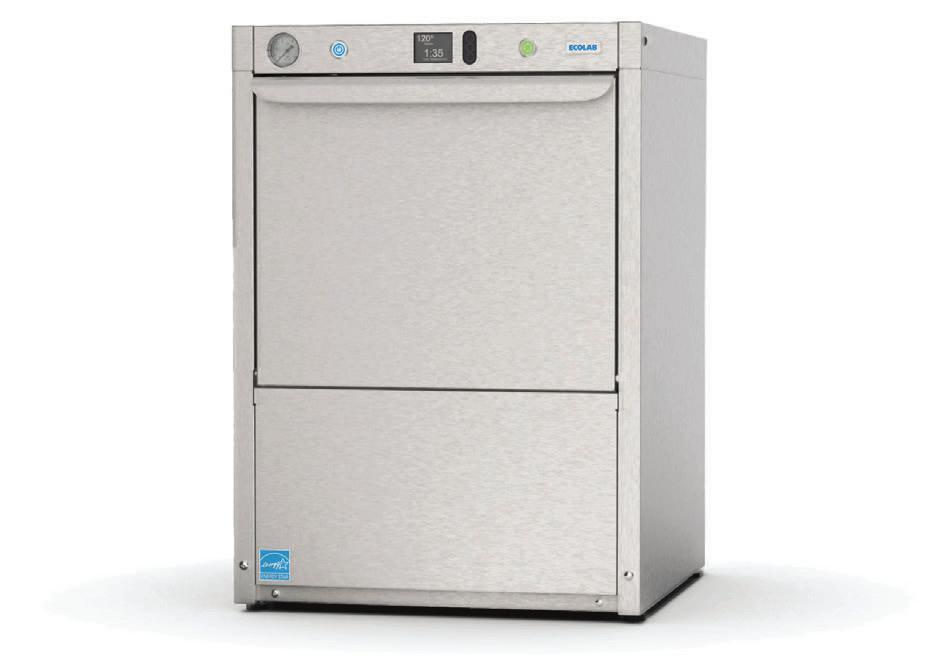


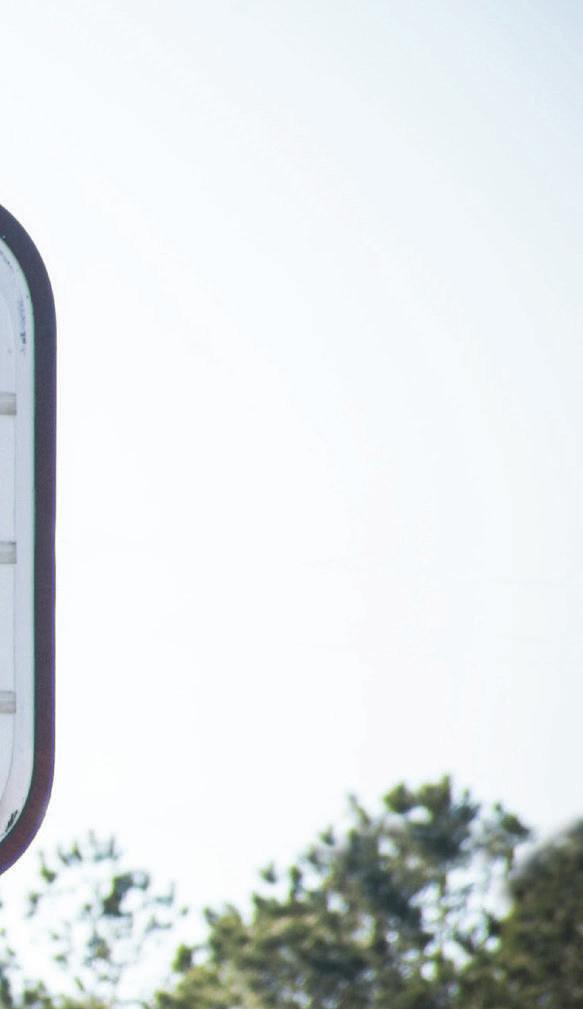
For many restaurant operators, the pandemic has thrown existing gaps in food safety into sharp relief.
“Fewer staff, stricter reporting guidelines, new food safety procedures—it was a lot to take on at once,” says Bart C. Shuldman, CEO of TransAct Technologies “Operators turned to technology to do more with less, abandoning paper charts, instructions, and checklists for digitized task management, HACCP logging, and more.” Automation and other high-tech solutions and equipment have helped multi-unit operators get insights into each location’s performance and compliance.
“There’s a lot of experimenting going on in the industry right now, as operators try to navigate around such a wide range of issues,” says T.J. McReynolds, customer
success manager at SafetyCulture “I think the businesses having the greatest success are those that are curious about the role of new technology and are focusing their time on integrating cost-effective solutions that can help ensure food safety and quality.” Given the ongoing labor shortage, this can free up staff to focus on tasks that benefit from a human touch, like customer
interactions and other complex work.
Automated procedures and monitoring can reduce the time needed to complete food safety checklists by 50 percent or more when compared to traditional pencil-and-paper systems. “Manual recordkeeping is inherently cumbersome, so foodservice directors are thus pressured to create efficient time and labor savings to reduce operating costs and remain profitable,” says Jeffrey Kautz, global account manager, cold chain for Emerson .
If food safety tasks aren’t completed or properly recorded, restaurants may have a tougher time defending themselves in relation to lawsuits or regulatory issues. “The most common mistake we see with our customers before they automate their food safety HACCP plan is falsifying their daily temperature logs throughout the restaurant,” says Jason Mobley, president of ITD Food Safety. “This puts the restaurant not only at risk for failing health inspections but also legally and financially if the consumer were to get sick.”

Introducing automated technology to food safety programs can build a new layer of accountability to better protect the brand. “Having recorded data easily available that can confirm proper food handling procedures can be helpful in cases where there are regulatory or legal situations,” Kautz says.
Sensors and wireless temperature monitoring systems allow operators and employees to track temperatures in real time. For example, units placed on fridge grates or in heating and holding equipment can send an alert to the manager or employees when a deviation from the standard occurs. This can potentially reduce or prevent the spread of foodborne illnesses, and save thousands of dollars of
In today’s environment, operators need food safety solutions that save on labor.
“ We see technology transforming food safety just as we see it impacting all aspects of our daily lives.”
EmersonEMERSON JOHN GIAMMATTEO
Just one of many ways BOHA! digitizes your back-of-house.
Ditch the masking tape, paper, and pencils for a solution operators, franchisees, and BoH staff love. BOHA! automates and simplifies everything from labeling, to temping, compliance and HCAAP reports, checklists, employee training, and more:

• Slash labor costs
• Improve accountability
• Prevent unnecessary food waste
• Enhance Food Safety & Quality
Across ALL locations — from the cloud
www.transact-tech.com/qsr-mag
lost inventory.

“We see technology transforming food safety just as we see it impacting all aspects of our daily lives,” says Kevin R. Roberts, Ph.D., food safety expert at FoodHandler





In fact, technology can be a driving force behind food safety—even to the point of detecting patterns and predicting new issues before they occur. “Technology can make procedures easy to access, easy to update, and available at the point where they are used,” says Chris Boyles, vice president of food safety at Steritech. “Automated food safety measurements are helping move preventive maintenance to predictive maintenance.”

As restaurants accumulate a broad range of different systems to streamline workflows, however, a new challenge emerges. All of these systems have to be able to talk to each other.



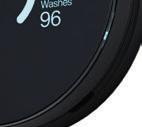


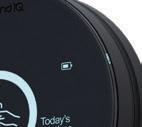
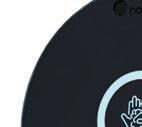





“We’re seeing a lot of technology emerging around sensor fusion in food safety,” says Sean Podvent, founder, CEO, and head of product at Hand IQ. “One piece of data from one sensor or technology provider doesn’t usually provide context around bigger food safety problems or risks. Many of the larger brands are especially keen on using tools like APIs to create a more complete picture of their food safety efforts.”
Not only are automated procedures and monitoring systems changing the food safety game—cleaning products themselves are seeing more innovation. “Restaurant operators are gaining better knowledge of cleaning chemistry and products,” says Douglas Koester, president of Tuway. “It’s important to partner with a brand who evolves their cleaning product line to stay up-to-date with current issues and to match what is needed.”
Manufacturers of cleaning chemistries are developing products that can safely and effectively clean multiple areas—a major change from the norm of requiring multiple products for each specific cleaning and sanitizing operation. “Today, you can find products that can clean and sanitize dining tables and food contact surfaces in the kitchen, as well as disinfect bathrooms, without changing the con-



centration,” says Tom Myers, COO of PURE Bioscience, Inc. “When workers do not have to worry about whether they are using the right product, they can better focus on the task at hand. Having fewer products saves money and time.”





















Traditional cleaning chemicals like bleach and quaternary ammonium compounds are also associated with health risks. The CDC recommends not using these chemicals around people who have asthma or allergies, which accounts for about 30 percent of the population. Meanwhile, seventy-five percent of consumers also say they’re concerned about the safety of disinfectants used in foodservice environments.
“People don’t want to be subjected to the health risks from toxic cleaners any more,” says Sandy Posa, CEO of Force of Nature. “The health risks are avoidable, though, with new disinfecting technologies that use hypochlorous acid (HOCI) as the active ingredient. HOCI has no toxic fumes or residues to rinse, so it’s much easier for staff to sanitize and disinfect surfaces.”


New innovations are building momentum as operators look ensure food safety in shifting conditions.



“Changes in consumer behavior patterns, the use of technology, widespread staff shortages, and growing cost pressures have all contributed to a foodservice landscape that looks dramatically different than it did prior to the pandemic,” says Esperanza Carrion, vice president and general manager of Sani Professional , the food safety division of PDI, Inc. “Operators find themselves at the core of trying to solve these challenges, while also providing a safe dining experience for their team and guests.” SC

“Restaurant operators are gaining better knowledge of cleaning chemistry and products.”SafetyCulture Hand IQ
The FDA has been clear there is no evidence that food can transmit COVID-19. Even so, the pandemic has pushed public health concerns front and center. It’s also fundamentally changed what customers—and employees—expect to see in terms of general food safety and sanitization.
“COVID-19 has made people much more germ-aware in general, so they’re attuned to what’s being sanitized and how,” says Sandy Posa, CEO of Force of Nature. “Operators can make customers trust that they’re adhering to the strictest possible food safety standards by communicating with them. This is a total switch since
before the pandemic.”
Before the pandemic, many brands chose to clean and sanitize out of the view of customers. The idea was that if customers saw sanitization happening, they might assume the worst. But the world is different now.
A recent study from Emerson found that five out of 10 consumers said they’d be less likely to shop from stores that aren’t using the latest technologies available to keep food safe. “COVID-19 has heightened the need for cleanliness in restaurants,” says Jeffrey Kautz, global account manager, cold chain for Emerson. “As a result, consumers want more visibility into how

their food is being handled, so food safety certainly has more emphasis following the pandemic.”
“Consumers do not distinguish between food safety and COVID-19 safety,” says Chris Boyles, vice president of food safety at Steritech “In today’s world, highly visible sanitation practices are obligatory. Customers are watching for cleaning and sanitizing, careful handling of food and utensils, and no signs that employees are working while ill. They are more observant and perhaps less tolerant.”
Of course, customers have always expected a certain baseline of food safety— but the pandemic arguably raised the bar. As consumers grow more knowledgeable about front-of-house and back-of-house practices, it’s becoming more and more important for restaurants to strongly convey that their locations are safe places for guests to eat.
“It’s no secret that the pandemic created a more informed and cautious consumer regarding food safety,” says Bart C. Shuldman, CEO of TransAct Technologies. “Customers are hyper-aware of what practices must be followed and question everything. It’s crucial for operators to be understanding as well as proactive and transparent about communicating their processes that ensure food is safe for patrons.”
“Customers are hyper-aware of what practices must be followed and question everything.”Gojo Industries GOJO INDUSTRIES KP PHOTOGRAPHER

Customers’ high expectations transfer to all areas of the restaurant they visit, including the restrooms. “Cleanliness is critical in the customer’s decision process in what business they decide to patronize,” says Douglas Koester, president of Tuway “A clean, fresh-smelling bathroom is always a determining factor. Floors and surfaces that are clean and free from debris reassure customers that if the front of the store is clean, the same must be true for the back of the store.”
Consistent cleanliness benefits overall safety, and it also improves optics. Operators can drive home the safety message with visible signage, hand sanitizer stations, and other types of markers.
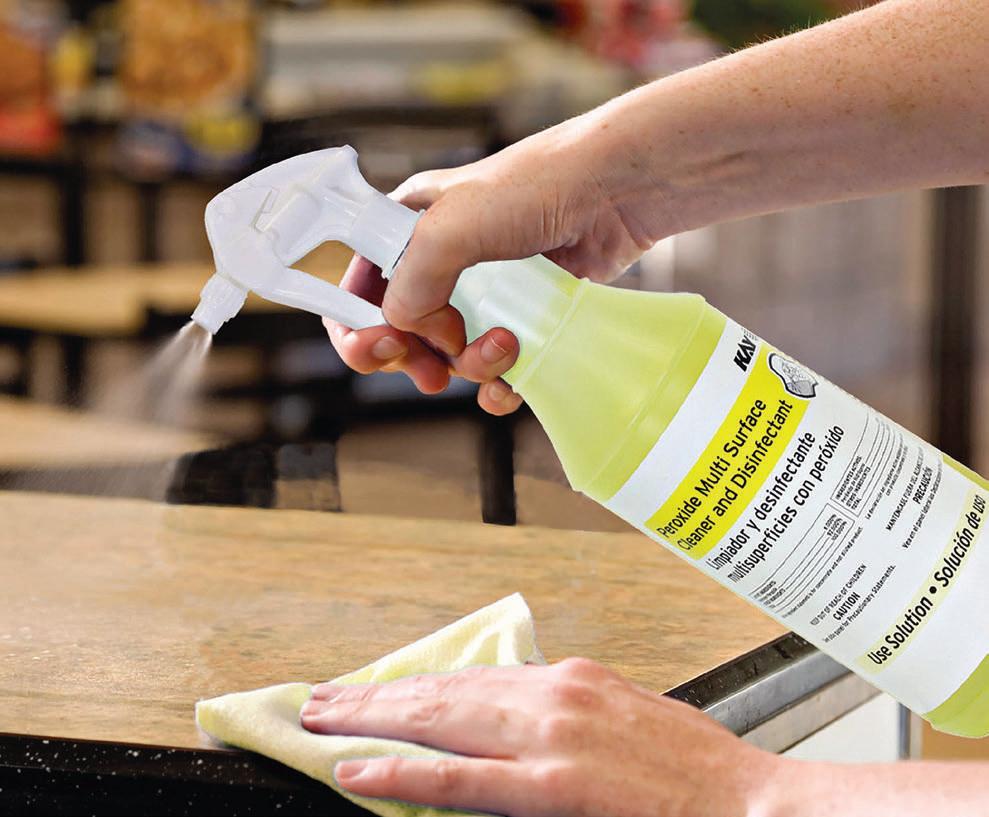
“Ensuring that the restaurant is clean when a customer enters is the most obvious sign that the restaurant cares about their customer needs,” says Gina Owen, senior RD&E food safety program leader at Ecolab “Signage and advertising is also a good way to communicate what the brand is doing to maintain
a clean and safe operation. When this is supported with good hand hygiene practices for employees and making hand sanitizer available for consumers, the message of safety is further reinforced.”
“The most successful quick-service restaurants recognize that customers want safety reassurance every step of the way,” says Poyee L. Tai, executive vice president

and chief business development officer for Tronex “As a result, restaurant operators are doubling down on the proper selection and implementation of personal protective equipment. Operators are embracing every opportunity to convey that they employ best-in-class safety measures and a well-trained staff. It’s no longer enough to promote tasty food and quick service; safety is part of a winning communication strategy, too.”
In many ways, it comes down to practicing what restaurant brands have preached for years on food safety. “Make sure your employees are demonstrating through their actions that they are still mindful of hand hygiene and sanitizing,” Kevin R. Roberts, Ph.D., food safety expert at FoodHandler. “Think about switching from the clear gloves to a colored glove— such as a blue, black, or pink glove—which will stand out to customers and illustrate that you are doing your part as a business to protect the guests. Customers are watching now more than they have ever done in the past.”
These days, food safety creates value, and every touchpoint provides an opportunity to reinforce that value with customers. “Operators should remember that it’s non-verbal communication that often matters most,” says T.J. McReynolds, customer success manager at SafetyCulture “It’s the old saying: ‘Show me; don’t tell me.’ Symbols of trust are everywhere and often sit in plain sight, subliminally influencing consumer perception. How often are tables and surfaces being cleaned? Are sanitizers and masks visible? Is the physi-
“It’s the old saying: ‘Show me; don’t tell me.’”Ecolab Tronex SafetyCulture

cal environment tidy and free of hazards? These symbols make a difference.”
Keeping hand sanitizer in customer areas is one of those markers that’s become an expectation. More than two years after an enormous spike in demand due to the latest understanding of COVID at the time, customers still prefer to see hand sanitizer available. “Consumers expect hand sanitizer to be offered in public places, and they expect to see trusted brand names after having many bad experiences with runny, smelly, or sticky hand sanitizer during the early days of the pandemic,” says Chip Manuel, Ph.D., food safety science advisor at GOJO
As COVID risk still continues to fluctuate among different communities and populations, pandemic-related safety measures can also be folded into communication efforts. “Operators can make their community aware that they are following the expected protocols per the CDC and ensuring that the staff and food providers are in a healthy condition that does not put them at risk for sickness,” says Jason Mobley, president of ITD Food Safety.
Not only are customers watching how restaurants clean and sanitize—so are employees themselves. In today’s tight labor market, when experienced restaurant employees are in high demand, poor food safety practices put companies at risk

for turnover. Public health has stayed topof-mind for so many, and employees may simply decide to leave for another brand that takes those concerns more seriously.
“Quick-service restaurants are re-evaluating their employee training and safety protocols not only to keep customers safe, but also to retain and attract workers,” Tai says. “In a post-COVID world, safe work environments can be just as important to employees as competitive salaries and improved benefits packages.”
In some cases, the cleaning products themselves may cause employees to feel unsafe. Chronic exposure to many common cleaning chemistries like bleach, quaternary ammonium compounds, and fragrances has been shown to have detrimental health effects. “One of the biggest mistakes restaurant operators make is using chemicals that risk staff and customers’ health,” Posa says. “Restaurant staff are around cleaning products all day long, every day. Research shows that chronic exposure to cleaning products containing ingredients like bleach, quats and fragrances can be as harmful to lungs
as smoking a pack of cigarettes a day. Another major study showed a 35 percent increase in the risk of COPD in people who used disinfectants weekly and a 45 percent increase for those using them more often.”
Savvy operators are looking for ways to improve working conditions for their employees, including ways to make cleaning procedures safer and easier. “Operators are listening to their employees’ concerns about exposure to chemistries that are irritating,” says Tom Myers, COO of PURE Bioscience, Inc. “They are making routine cleaning, like in the bathroom, a priority; they have established procedures from front of the house to the back of the house that ensure the entire facility is cleaned often. Often, operators are looking for products that can easily be used in multiple areas of the restaurant without added labor for their employees.”
In the wake of the pandemic, consumers expect to see evidence of increased sanitization and diligent food safety practices, even as restaurant employees and managers adapt to make do with less. Employees are also demanding better safety procedures, improved training, and less harsh chemicals. Operators are recognizing the role they play in public health, and how they can help shield staff and guests from the spread of community-acquired infections—by making food safety a priority.
“COVID-19 forced the food industry to rapidly shift to a proactive model focused on preventing food contamination, replacing its prior reactive approach of determining how to respond to outbreaks,” says Esperanza Carrion, vice president and general manager of Sani Professional , the food safety division of PDI, Inc. “Thankfully, there is a mutual understanding that keeping each other safe (and healthy) is a shared responsibility amongst the operators, the staff, and the guests.”
Ultimately, these changing expectations reflect that food safety is everyone’s business. “Managers, operators, and customers all need to be safe, and we all play a critical role in creating a safer world,” Tai says. SC
“ We all play a critical role in creating a safer world.”SANI PROFESSIONAL ISTOCK Sani Professional

At the table, behind the counter, and on the go.



With a full line of solutions that deliver scientifically proven sanitizing and disinfecting at every touchpoint, you can be confident that your business is compliant with COVID-19 protocols and CDC guidelines.

















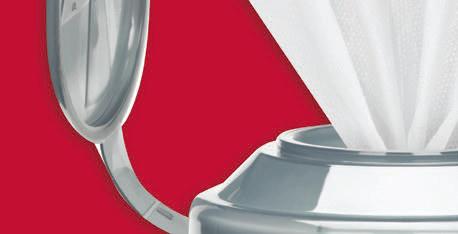





































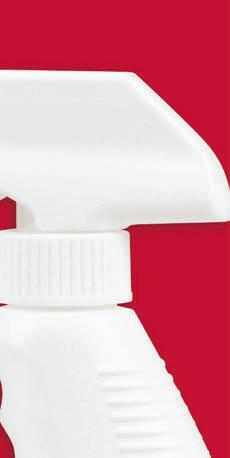





















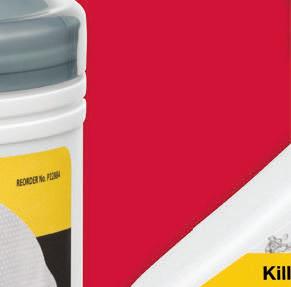












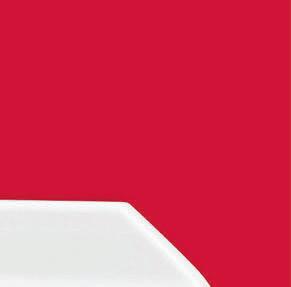
















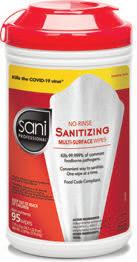




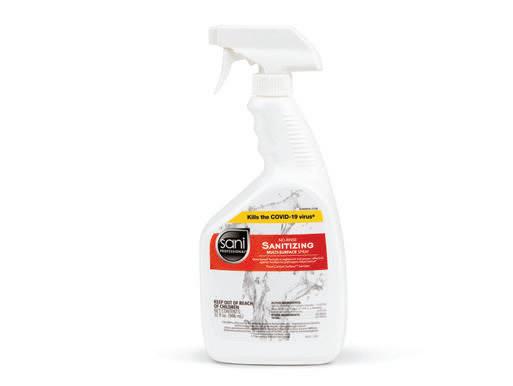
And because we know your crew members have a lot on their plates, our products are simple, convenient, and fast—no mixing, measuring, or mess.









2319 Whitney Avenue, Suite 3B Hamden, CT 06518
Tel: (203) 859-6800
bohasolutions.com
TransAct’s BOHA! platform is revolutionizing the foodservice industry with its integrated software and hardware solutions. BOHA! is a suite of foodservice-specific apps and hardware designed to automate labeling processes, improve food safety, increase operational efficiency, reduce costs, and gain critical insight into daily operations.
33 Reeds Gap Rd. Middlefield, CT 06455 860-349-3473
cooper-atkins.com

Emerson’s Cooper-Atkins™ temperature management products and monitoring solutions help support and protect brand integrity and ensure consistent food quality and safety wherever food is handled, prepared, and stored. Our powerful and versatile products, like the Multi-Function Thermometer, allow staff to control temperaturecritical issues to help maximize food quality and safety.





8300 Capital Dr. Greensboro, NC 27409
800-529-5458
sciencecertified.ecolab.com

Ecolab’s Kay business, located in Greensboro, N.C., specializes in delivering customized programs to meet the unique food safety and sanitation requirements of the quick-service and fastcasual industries. Around the corner or around the globe, wherever our customers serve their guests, we serve them.



2301 Lunt Ave. Elk Grove Village, IL 60007 foodhandler.com
Your operation needs a partner you can trust. That’s where FoodHandler comes in. Founded in 1969, we sell a wide range of high-quality disposable products, setting the highest quality standards in the market by consistently delivering topnotch service and innovative products that ensure food safety at operations around the globe.


7 Grassy Lane Westford, MA 01886
888-985-8099
forceofnaturepro.com

Force of Nature Pro is an EPA-registered hospital-grade disinfectant, sanitizer, and multi-purpose cleaner that contains no harmful chemicals. It kills 99.9 percent of bacteria and viruses, including Norovirus, Salmonella, Staph, Listeria & Pseudomonas Aeruginosa, Influenza, A and Staph. It’s Green Seal Certified for meeting the highest standards in protecting human health.
One GOJO Plaza, Suite 500 Akron, Ohio 44311
800-321-9647
GOJO.com


For more than 30 years, PURELL® products have adhered to high standards of formulation and manufacturing, including innovations for the foodservice industry. PURELL® products provide worryfree, effective germ kill on hands and surfaces, without the need to choose between products that are effective and products people feel great about using.

636 Moulton Ave.
Los Angeles, CA 90031
626-222-1277
handiq.com

Hand IQ makes handwash intervention technology that combines smart sensor data with a restaurant’s handwashing targets to gamify and visualize the role of clean hands in food safety. Managers can view compliance data through the mobile app while staff can view a location’s handwash activity ring on a Nest-like hub.
3905 W. Eau Gallie Blvd., Suite 101 Melbourne, FL 32934
321.676.3194
itdfoodsafety.com

ITD specializes in food safety management with labeling and temperature taking. With deep roots in food service, our founders have personally experienced the daily obstacles that occur while trying to deliver safe food to consumers. ITD has now streamlined food prep and safety management in thousands of locations worldwide.







771 Jamacha Rd., Suite 512
El Cajon, CA 92019
619-596-8600
purebio.com

PURE Bioscience develops and commercializes proprietary antimicrobial products that provide solutions to the health and environmental challenges of pathogen and hygienic control. Our technology platform has potential application in several industries, and our focus is on providing food safety solutions to the food processing and foodservice industry.
2114 Central St., 6th Floor Kansas City, MO 64108
816-787-1343
safetyculture.com

SafetyCulture’s mobile-first operations platform leverages the power of human observation to identify issues and opportunities for businesses to improve every day. More than 65,000 customers use SafetyCulture’s flagship products, iAuditor and EdApp, to perform checks, train staff, report issues, automate tasks, and communicate fluidly.
400 Chestnut Ridge Rd. Woodcliff Lake, NJ 07677 800-999-6423
saniprofessional.com
Sani Professional, the food safety division of PDI, is a global leader in infection prevention. PDI/Sani Professional manufacturers a wide variety of disposable wipes and solutions for cleaning, sanitizing, and disinfecting multi-surfaces and hand sanitizing designed for commercial establishments, delivering a clean experience for employees and guests.
6701 Carmel Rd., Suite 300 Charlotte, NC 28226
866-576-5689
steritech.com
Since 1986, Steritech has provided best-in-class assessments and consulting services to companies to mitigate risks, drive operational consistency, and help multi-location businesses accelerate growth. Through on-site coaching paired with robust data insights and reporting, Steritech helps close performance-impacting gaps, helping businesses deliver their ideal brand experience every time, everywhere.




300 International Drive Mount Olive, NJ 07828
800-833-1181
tronexcompany.com

Tronex is an award-winning, medical-based global enterprise that offers an extensive range of disposable head-to-toe personal protective solutions. Tronex International is built upon a progressive angle and adaptable business model that merges the most advanced products in the market with passionate services and a responsive culture.
3155 W. Big Beaver Rd., Suite 104 Troy, MI 48084 800-537-3750
tuwaymops.com
Established in 1923, Tuway has been an innovator and supplier of cleaning products (mops, cloths, bonnets, and tools) to the foodservice and JAN/ SAN industries.

FEATURED SECTION:


Nick Marsh, who has been Chopt’s CEO for 15 years, says digital cafes emerged at the fast casual because “the definition of convenience continues to evolve, and the bar continues to be higher.”
Through the pandemic, customers got into the habit of ordering ahead and picking up food, “so we wanted to create a physical footprint that matched the convenience of the app. No lines, you walk through or come in, and order at the kiosk; it’s easy, accurate and fast,” he says. Seating at the new digital cafes vary from 10 or 15 seats and up to 45. When Chopt tested its prototype café, Marsh says the brand learned some people still want seats. “That was the aha moment,” he says. “You don’t have to take things away to make the order experience easier.”
It also built a salad bar (an obvious pun) that faces the production kitchen. Many guests find the experience retro and enticing—they can see their salads being prepared while choosing among Chopt’s 60 different salad ingredients and 18 dressings.
Trends have accelerated over the last few years. Customers want meals prepared fast and served in a convenient fashion. Off-premises, drive-thru, delivery, and mobile are spiking, and traditional sit-down dining, at least in quick service, has taken a proverbial backseat.
Hence, two very different fast-casual chains, Chopt Creative Salad, based in New York City, and Café Rio Mexican Grill, housed in Salt Lake City, Utah, have stepped up by introducing digital cafes, which rely on drive-thrus, order ahead, and a smaller footprint.
At Chopt, which operates 84 company-owned retail stores (none franchised ) in 10 states along the East Coast and South, digital, off-premises sales now constitute nearly 50 percent of overall revenue. In July, it introduced the brand’s first contact-free outlet in Arlington, Virginia, and plans on adding five “digital cafes” by the end of 2022.
Most Chopt stores require from 12–15 staffers to operate, but the smaller digital cafes make due with eight to 12, or three-quarters the typical staff, curtailing overall costs and reducing the complexity of hiring in a tight market.
The smaller cafés are also designed to be more sustainable and efficient. Marsh explains “the smaller footprint in the back of the house, and the new HVAC [ heating, ventilation and air-conditioning ] will drive a 30 percent reduction in kilowatt hours versus our average store.”
Despite reduced staffing, Chopt assigns employees who specialize in customer service. They welcome guests and assist them with any questions about ordering or the kiosks. “In the restaurant business, you are constantly focusing on hospitality and how to educate and welcome guests,” Marsh says.
Of the Virginia Chopt location, one Yelp consumer wrote, “The interior is sleek [minimal seating though] with a few kiosks you could use to order. There’s also a whole wall of shelves for online pickup orders and a TV screen to let you know which shelf your order is sitting.”
Marsh says the digital café is “ultimately more personalized when you combine, this physical footprint with the evolution of our app, and the loyalty program, and ability for customers to get perks and benefits. The whole ecosystem of the app and the store makes for the best experience.”
Café Rio Mexican Grill has 150 locations in 11 states, mostly



Evolution these days isn’t confined to off-premises—it’s happening within the four walls of brands nationwide.














INNOVATION / CONTINUED FROM PAGE 92
out west but also in Maryland and Virginia, and all are company owned. It is slated to add 13 new outlets (with six already opened ) in 2022. To respond to customers, the brand debuted its Digital Café in 2021, which features drive-thru, curbside pickup, digital kiosk, and mobile-app ordering. There are now six of them.
The increase in digital cafés stems from “aligning where the consumer is headed,” CEO Steve Vaughan says. Two-thirds of revenue derives from off-premises dining. Café Rio’s new design highlights an open kitchen, enabling customers to watch meals prepared fresh to order. It removed the traditional cashier so guests check-out digitally, either in-store, at the kiosk or app or online, before they arrive, or at the drive-thru.
To maintain hospitality, the unit assigns a floor ambassador to with ordering and help customers use the kiosks. The units average about 2,000–2,200 square feet, rather than the standard 2,400–2,600. “Some markets don’t justify the full investment,” Vaughan says, noting the digital cafes will allow the brand to open areas it otherwise might not have at a cheaper cost. The newer continue to feature inside dining, but with fewer tables. They require less kitchen space, and don’t need a dine-in line.

COVID accelerated this move toward digital cafes, Vaughan “People being pressed for time has always been the case,” he But after COVID, people started picking up and continue to so. Its third-party delivery sales were 8 percent pre-virus, douto 16 percent, and then tripled and now has returned to about 10 percent. In the future, Vaughan envisions one-third to one-half of new eateries will be digital cafes. “It fits the customer’s lifestyle and helps us from a cost perspective because rents are lower,” he Gen-Xers and millenniapps and kiosks the success of its acceptance. We have long as people are them. If people them.”
achieve several goals at who oversees the which specializes model that allows for reducing staff costs; and whether renting or tables isn’t convenient has intensified,” improve hospitality technology “captures all order, so they can be says.
on mastering sevskills, says, getting accurately rendered every time and using geolocation services to fulfill orders fresh and hot to customers. “We’re seeing fast casuals adapting digital and creaiting a new category, where they offer broader menus and higher quality ingredients, with all the ease of a [quick-service restaurant],” he says. q
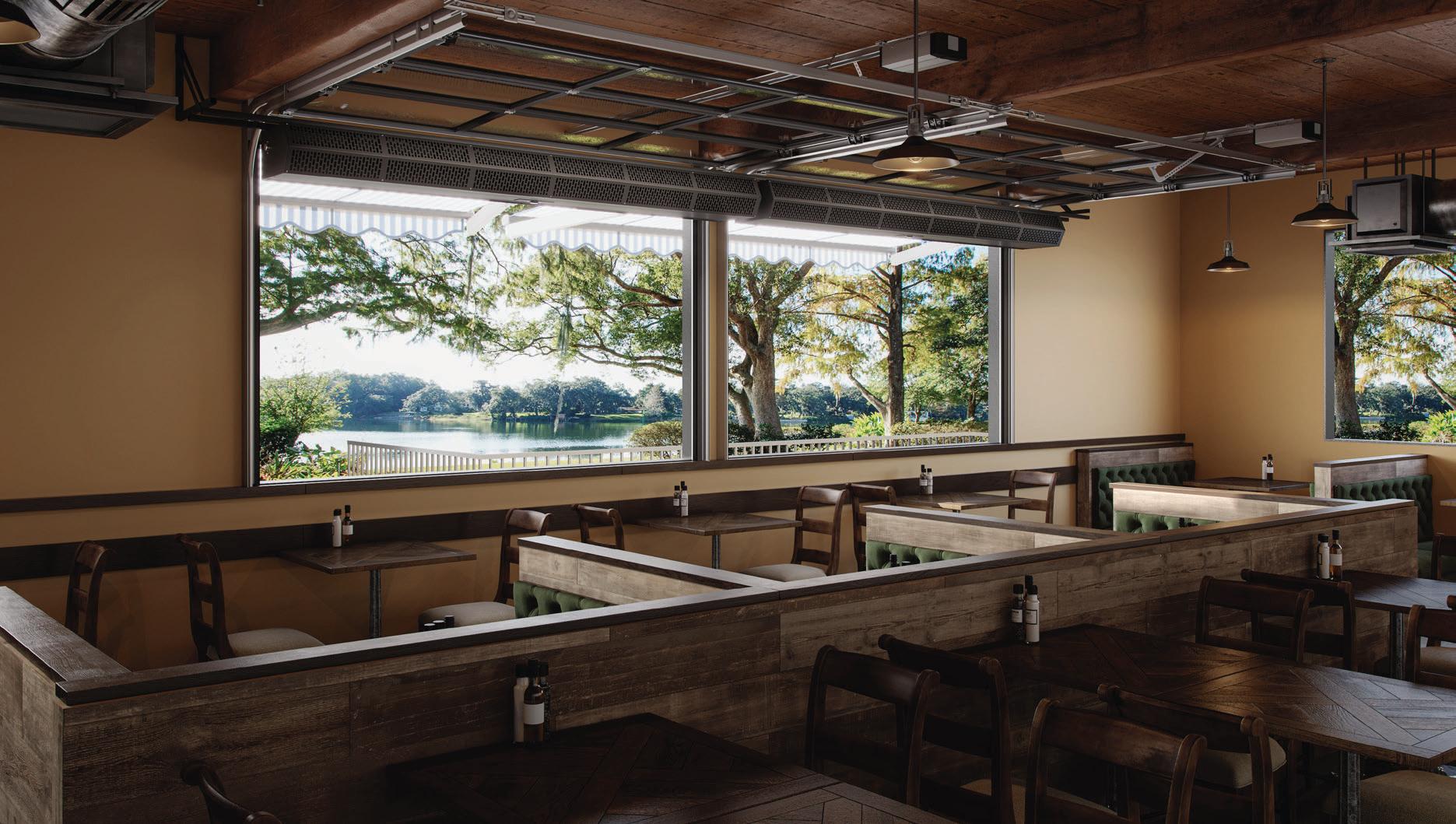

customer decisions. It provides a complete picture of customer needs, attitudes, and behaviors, and how these can be turned into desirable menu decisions. This article looks at each of the components of the Menuboard Optimization Trilogy.
Consumer research plays an important role when it comes to menuboard optimization. Research should be conducted both prior to and following menuboard optimization. Although there are many forms of research available, the following approaches have proven particularly beneficial for menuboard optimization.
Why should you optimize menuboards? Because the menuboard is the single most important communicator in a food service environment. It’s your top selling-tool. Successful menuboard optimization programs generate significant returns on investment. Optimizing menuboards can shave precious seconds off the order process, speeding throughput, increasing the number of transactions, and boosting overall sales. This translates into increased profitability. In fact, menuboard optimization has one of the highest ROI of any option available to foodservice operators.
In order to realize significant results, menuboard optimization involves combining three different skill sets—a trilogy of analytical tools that collectively result in meaningful advancements in menuboard communications.
This approach helps restaurant brands be smarter as they optimize their menuboard layout, design, content, and pricing structure in a way that promotes profitability while encouraging repeat customers. The process helps brands understand the thinking behind

Use pre-design research as a diagnostic tool to help identify how customers are using the menuboards, what issues they have, and what specifically needs improvement. Research can involve ethnographic studies to observe customer behavior and menuboard use. Use customer intercept interviews to ask questions about their menuboard use, and to explore their likes and dislikes. Yet another approach is online research, where feedback can quickly and cost-effectively be collected from many consumers to quantify and prioritize key findings and insights.
This approach is used later to test and validate the effectiveness of the new optimization strategies, before new menuboard designs are developed and put into test stores. Focus groups can be used to gather qualitative research on consumer reactions and use of the new menuboard strategies. Quantitative consumer research is an effective way to reach hundreds of consumers and compare the performance of the optimized menuboards to the current menuboards. This quantitative research can also evaluate purchase intent as well as gather data on consumer attitudes and preferences. It’s important to note that all this strategy validation research can be conducted using color renderings of the menuboards. This allows for quickly identifying the best strategies before the creation of final menuboard designs, and before the costs associated with production and distribution to stores.








This part of the Trilogy focuses on analyzing sales data to identify ways to optimize the menuboard layout, product placement, space allocation, menu mix, and food and beverage attach opportunities.

All brands track sales but it is astonishing how few use this data to help them create an optimized menuboard. Understanding where your sales are coming from can help you learn how and where to position items on your menuboard. Where you place products on your menuboard should be driven by an analysis of sales and profits. Some of your menu items are better sellers than others and some contribute more to your bottom line. These should be more prominent on your menuboard. Analyzing sales also helps identify which poor selling items should be eliminated altogether to free up precious menuboard real estate for high priority items.
Beyond basic sales and profit data there’s a treasure trove of data that’s often overlooked. Sophisticated analytical skills and algorithms can be used to develop and test many different product and pricing strategies to determine which are best for improving business performance. Brands can realize increased margins across menu items, without negatively impacting customer traffic. Programs can be created and tailored specifically to the needs of the brand, geographic segment, outlet, transaction type, and customer. Here are a few of these tools.



This allows for the creation of sophisticated pricing strategies which are modified over time as internal and external environments change. Utilizing a technique that is more predictive than traditional consumer research, historical sales and consumer purchasing behavior are analyzed and the impact of price changes are studied at the item level, category level and across categories. Past promotional activity is analyzed to calculate impact on sales, profit, and traffic. The end-result is a brand-specific pricing strategy for your optimized menuboards that’s transparent to the customer and allows for higher profit without negatively impacting customer traffic and buying behavior.


Revenue Situation Analysis.

This is a thorough review of restaurant sales drivers and their relationships to one another from the outlet to the enterprise level. Using detailed transactional and customer data provides a foundation for the strategic understanding necessary to develop sound marketing strategy. Confronted with the challenge of growing system and same store sales, marketers need to identify opportunities across multiple revenue-driving levers, such as individual customer frequency, additional menu item attach rate, and promotional and pricing mix.
Menu Performance Analysis.
This follows the revenue situation analysis and involves a comprehensive review of revenue performance of menu items, their related







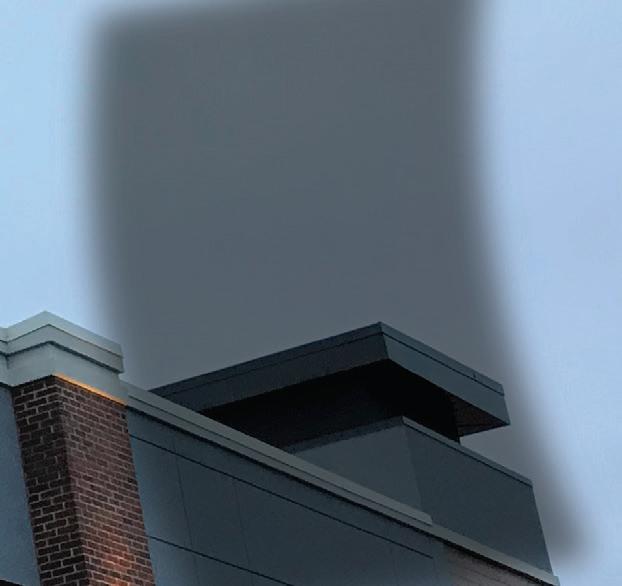




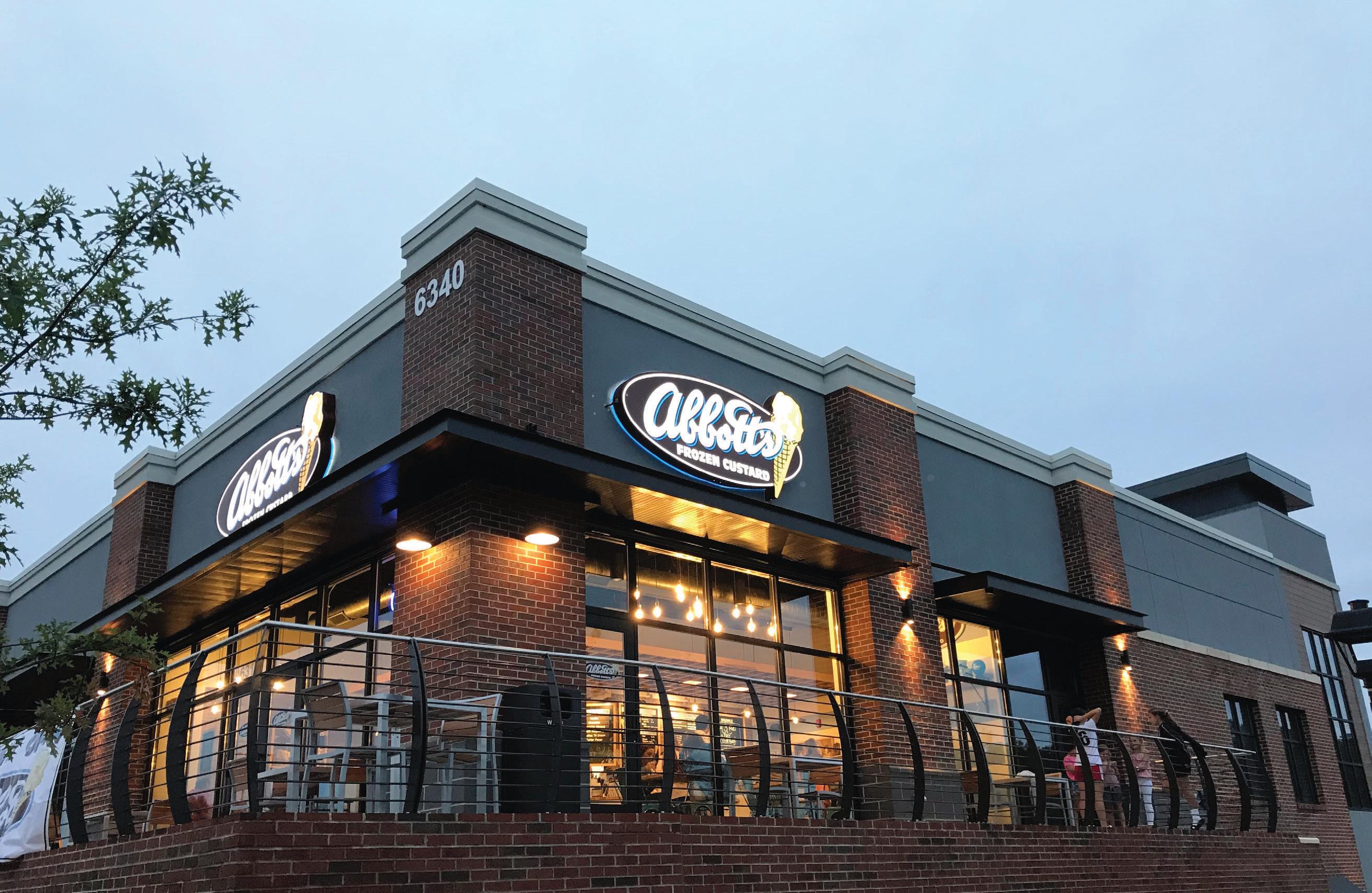
Since













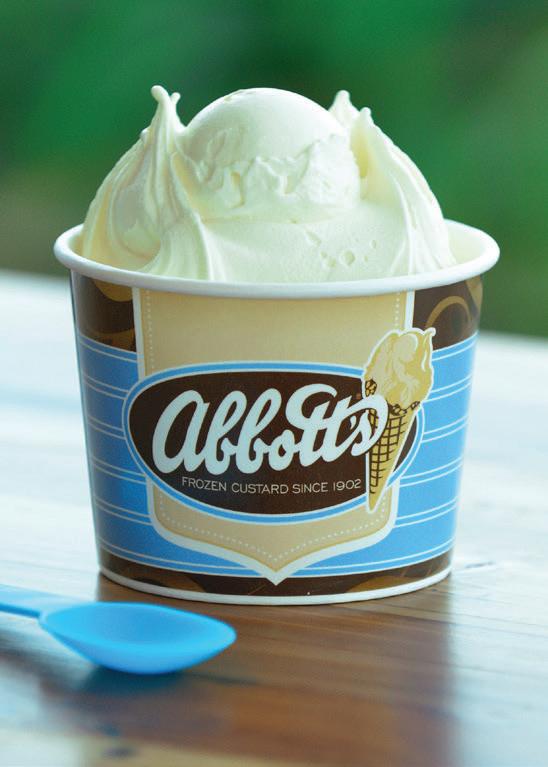







transactions, and relationship with other menu items. This leads to an understanding of the specific food and beverage menu items that have the highest attachment potential. Building sales and merchandising programs featuring those items can provide the highest likelihood of successfully growing sales.



This involves a communications assessment of the current menuboard by an experienced menuboard optimization consultant. The objective is to evaluate how effectively the menuboard’s language, images, colors, branding, typography, layout, navigation, and legibility come together to communicate and support your brand’s menu strategy. It’s critical that strategy drives the design of the menuboard. For example, if the menu strategy states that “we will increase ticket by increasing beverage attach,” does the current menuboard effectively communicate adding a beverage to a food selection?
Research has proven consumers pre-











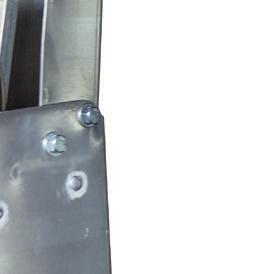









fer to order by images. The strategic use of food and beverage images can increase the sales of featured items. How does your menuboard stack up in this regard?

You should determine if the current menuboard is simple to navigate and order from. How have menu categories been arranged? Are popular items easy to find? What’s the clarity of key messages? Is the order process intuitive? Learning to think like a customer can help you assess your menuboard’s ease-of-navigation.

Customer eye-tracking and behavioral research has determined that menuboards have “hot spots”—specific areas on the menuboard where customers tend to look first and most frequently. These hot spots can be leveraged to have a positive impact on average check, ease-of-ordering and speeding throughput by putting the bestselling and highest margin items in these zones. The communication analysis should determine if the current menuboard is utilizing hot spots to advantage.
The communication analysis identifies what you are currently doing well and want





to retain in your optimized menuboards. It also identifies the problem areas where design and communication techniques fall below best-practice. The analysis results in a “hit-list” of menuboard optimization opportunities.




Using the collective analytical findings of the Menuboard Optimization Trilogy, it’s time to develop your optimized menuboard communications. This typically following a series of sequential activities, as illustrated below:
1. DEVELOP THE MENUBOARD’S STRATEGIC LAYOUT. This is a “blueprint” for how the optimized menuboard will be organized. It expresses in words and schematic diagram form how the content will be organized to achieve the business goals and objectives set forth in the menu strategy. The schematic illustrates the optimized menuboard’s layout, product placement, space allocation and key communications. There may be several variations of the new menuboard layout developed before one is finalized and approved.
2. VISUALIZE THE OPTIMIZED MENUBOARD. Here, the strategic layout is developed into color renderings illustrating what the new menuboard might look like. There’s just enough detail in these renderings (visuals, graphics, copy, branding, colors) to conduct consumer research to quickly assess the validity of the new menuboard strategy.
3. CONDUCT RESEARCH TO VALIDATE THE NEW STRATEGY. This will determine if the new menuboard strategy resonates with customers. Using the color renderings, conduct quantitative customer research to evaluate the new strategy before placing them in stores. Use renderings of the current menuboard as a control. See what works, and wha t needs tweaking. This will help confirm if the new strategy can achieve the desired business objectives. A final word of advice, the most effective menuboard communications are the result of superior analytics and strategic thinking, not clever graphics. q




it from Pennsylvania-based farmers who said the mushroom “cooks and tastes like chicken.” The fast casual is also working on a McRib type of plant-based burger.
“I think innovation is a key pillar of what we do at PLNT Burger,” Mendelsohn says. “So something that excites us and pushes the limits and have fun with it. But also at the root, we like to keep our menu pretty small. So consistent. There is innovation. But we just don’t approve anything on the menu.”
PLNT Burger, founded in Maryland, has grown in the Northeast and Eastern Seaboard. As of August, there were locations in Boston, New York, Pennsylvania, Virginia, and Washington, D.C., in addition to Maryland. The chain moves into densely populated markets comprised of consumers who prefer healthier diets and are climate conscious. But it’s not just in urban areas. In fact, the restaurant in Columbia, Maryland, is more suburban and always seems to be a top performer.
The intention is to take PLNT Burger national, but before that, the brand will continue to grow concentrically in its geographic region. The chain hopes to have 16 locations by the end of this year and 30 by the completion of 2023. All restaurants are company-owned and will be in the foreseeable future. Real estate shouldn’t be a major issue since PLNT Burger began in a 110-square-foot space that challenged the brand to streamline operations and offer an efficient menu, says Goldman.
That initial location was inside a Whole Foods, and PLNT Burger has kept that growth formula. Of the company’s 12 units in mid-August, 10 are based in the grocery store. The two brick-and-mortar restaurants are in New York City. Goldman and Mendelsohn view the Whole Foods strategy as a way to quickly enter an area and build awareness.
A good example of this is PLNT Burger’s grocery location in Boston’s South End neighborhood. The store performed so well the company is opening a streetside shop and another Whole Foods unit in the Greater Boston area. “What’s pretty interesting about the Whole Foods model is that it allows us to open up in these different demographics and really study where the demand is,” Mendelsohn says. q
cessful, they need consider marrying a unique product with a readymade business model. In that vein, George MontaguBrown, a chef and restaurateur, realized he had a winning concept in Nomoo, a Los Angeles-based quick-serve featuring all-vegan versions of fast-food staples. There’s a vegan smash burger, a vegan hot chicken sandwich, and, launching in August, a vegan take on Taco Bell’s famed Cheesy Gordita Crunch. “What I’m really doing is taking the favorites, the best-selling items we all know and love from different fast-food restaurants, and recreating them, while keeping them quite close to the original in terms of flavor and texture,” Montagu-Brown says. So far, the approach has garnered a lot of success, and devoted fans, since the concept opened in L.A. in 2020. Plus, he says, fandom has also stirred interest from potential franchisees. It also helps the plant-based food market is on track to be a $162 billion industry in the next decade, per a 2021 Bloomberg report. But Montagu-Brown says he needed help moving the business toward a space where it could handle growth into franchising.
“I’m more of a chef,” Montagu-Brown explains. “I thought, ‘hey, let’s make the best plant-based concept, let’s change fast food by making all of the flavors that we know and love but vegan without the sacrifice,’ but, I’m not an expert in restaurant growth.” That’s why Montagu-Brown was ready when Nomoo attracted the support of Fransmart, a leading franchise development firm. “We see Nomoo, honestly, as a 1,000-plus-unit concept,” he says. “We want this to be the plant-based quick-service restaurant right next to Chipotle, right next to everywhere else.”

Wyland, Montagu-Brown, and Morfogen all separately acknowledge unique menu items are key to generating excitement in a brand, excitement that can catch the attention of franchisees. However, they also say franchisors can’t forget about key basics: Relatively low startup costs; a consistent, easy-to-prepare product that preferably requires minimal labor to prepare; and an easily scalable business model that has the infrastructure in place to help those franchisees succeed. q
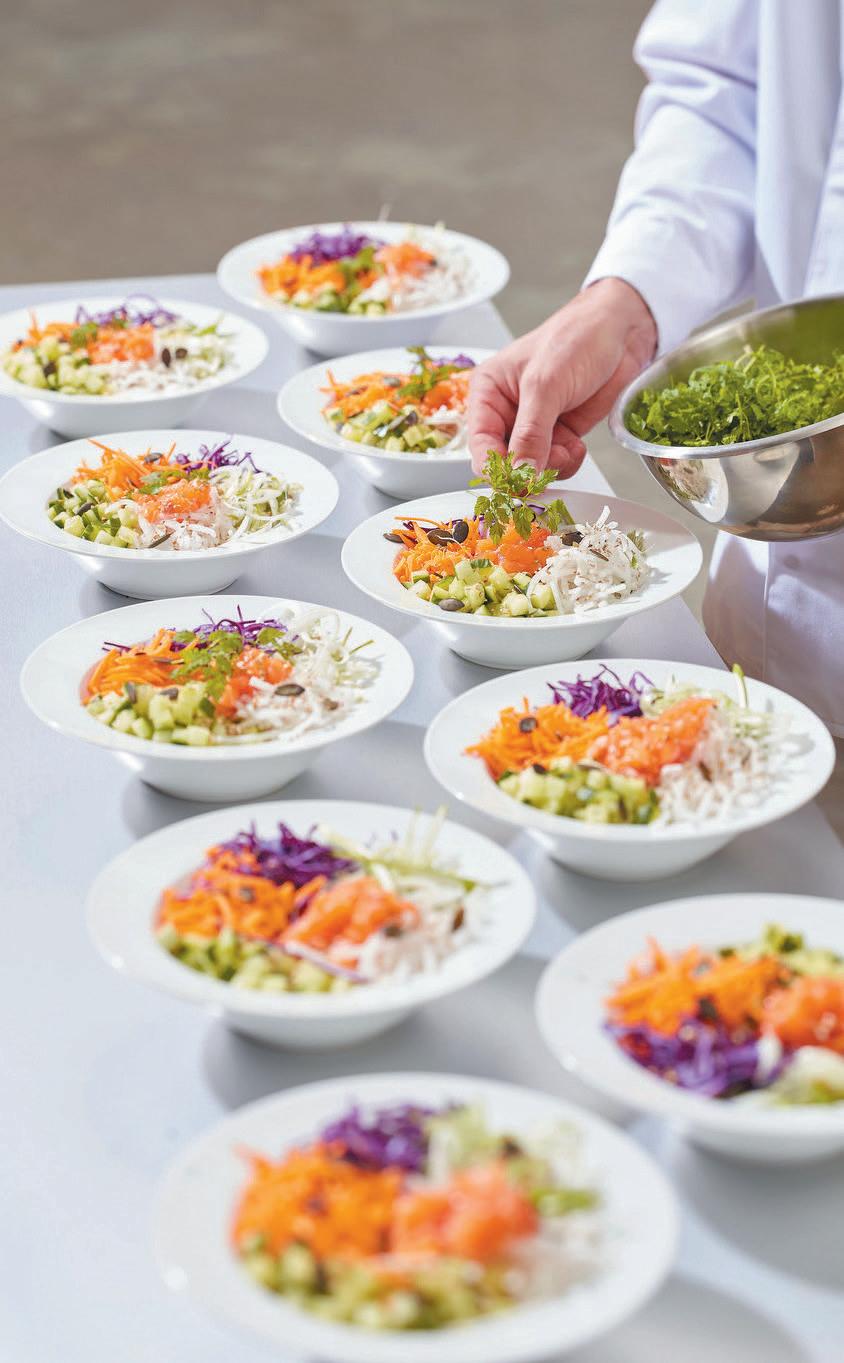
For more information on these companies, visit www.QSRmagazine.com/connect/

Abbott’s Frozen Custard ......................99 304-60-SCOOP | abbottsfranchise.com
Accurate Box .......................................74 973-345-2000 | accuratebox.com
Acrelec ................................................43 acrelec.co/double_check
Barilla .................................................23 barillaFS.com/frozen
Berner .................................................94
800-245-4455 | berner.com
Clark Foodservice ................................71
717-392-7340 | clarknationalaccounts.com
Coates .................................................53
312-374-1365 | CoatesGroup.com
Coca-Cola ..............................................2 800-241-COKE | coca-colacompany.com
Delphi Display Systems .......................51

714-825-3495 | DelphiDisplay.com

DoorDash ...................................... 36, 37 855-554-5779 | get.doordash.com/qsr
DSA Signage .......................................55
866-333-0670 | dsasignage.com
Easy Ice .................................Inside Back 866-327-9423 | easyice.com
EcoTrak .........................................72, 73 888-219-000 | ecotrak.com/qsr
Energy Solutions .................................91
714-787-1098 | caenergywise.com/instant-rebates
Envysion .......................................24, 25 877-258-9441 | envysion.com
GenPak ...............................................29
800-626-6695 | genpak.com
Ghirardelli 8 800-877-9338 | ghirardelli.com
Global Display .....................................57 go.gds.com/midas-aria
HME Hospitality ............................. 20, 21 866-577-6721 | hme.com/nexeo
Intellihot ..............................Inside Front 877-835-1705 | intellihot.com
Jimmy John’s ......................................19 jimmyjohnsfranchising.com
LedgerPay .................................16, Insert 972-573-0995 | ledgerpay.com




Loomis ..........................................62, 63
713-435-6700 opt.2 | loomis.us
LSI Industries ......................................59 800-436-7800 | lsicorp.com/markets/qsr
NAFEM Show .......................................97 thenafemshow.org/register
National Sign Systems ............Back Cover 800-544-6726 | nationalsignsystems.com
NorthAmerican Bancard .....................101 866-481-4604 | NYNAB.com
Panasonic Commercial Foodservice .....49 877-726-2767 opt.2 na.panasonic.com/us/ClearConnect

Peerless ..............................................67 630-375-5100 | peerless-av.com
Quail Digital ........................................95 888-575-1010 | quaildigital.com
Ready Access ......................................45 800-621-5045 | ready-access.com
Red Gold ..............................................17 866-729-7187 Redgoldfoodservice.com/sample-requests
Rellevate ........................................ 12, 13 833-354-0972 | rellevate.com
RF Technologies ........................5, 11, 103 800-598-2370 | rfdrivethru.com

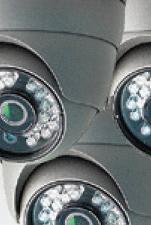









Robot Coupe .....................................102 800-824-1646 | robot-coupe.com


Sani Professional .................................87 saniprofessional.com
SEB Professionals ................................14 wmf-coffeemachines.com | schaererusa.com Wilburcurtis.com



S-Net .................................................103 844-986-1949 | qsr.snetconnect.com
Steak n’ Shake........................................1 Steaknshakefranchise.com
Subway Franchise ..................................7 Subway.com
The Howard Company ..........................47 800-782-6222 | howardcompany.com
Vitamix ...............................................33 800-437-4654 | vitamix.com/ourdifference
Vito Fryfilter .......................................93 847-859-0398 | vitofryfilter.com
Wag N’ Wash .......................................69 734-793-6656 | wagnwashfranchising.com
Wayne Farms ......................................31 800-392-0844 | waynefarms.com/wings
Worcester .........................................100 800-533-5711 | shortening-shuttle.com

SMART CHAIN ................................................75-90
Ecolab ...............................................79 800-529-5458 | ecolab.com
Hand IQ .............................................77 handiq.com
Sani Professional ...............................87 Saniprofessional.com
Transact Technologies .......................81 877-748-4222 | transact-tech.com/qsr-mag
Tronex ...............................................85 800-833-1181 | tronexcompany.com
SPONSORED CONTENT
ChargeNet .........................................35 858-381-0458 | chargenetstations.com
What was your first job? My first job was pumping gas in a full-service gas station at age 15.
What’s your favorite menu item at Chicken Salad Chick? I love our Jalapeño Holly paired with our grape salad.
What’s your favorite cuisine aside from Chicken Salad Chick? I bounce back and forth between Mexican and Italian food.

Who inspires you as a leader? Russ Umphenour built a great company in the Arby’s system, and he helped people grow and develop into leaders, many of whom are CEOs of other companies. He continued that at Focus Brands and with us. Cheryl Bachelder and Patrick Doyle created significant shareholder value while instilling a culture of servant leadership and being forward-thinking. I’m also extremely impressed with the Cathy family and their Chick-fil-A business.

What’s the best piece of advice that other restaurant executives should hear? Be disciplined about growth. There is pressure to grow, but too many times companies fail because they grow too quickly or stretch the boundaries of supply chain and marketing reach.
What are some of your interests outside of work?
I am very lucky to have a great wife, Kristy, and three wonderful kids, Conner (16), Coleman (14) and Abbey (11). Much of my time outside of work is spent around them and their various activities.
How many CEO job descriptions include enriching the lives of others and spreading joy to as many people as they can reach?
That’s our purpose at Chicken Salad Chick, and it’s one I never tire of putting into action.
Chicken Salad Chick was founded in 2008 with a dedication to serving fresh, house-made chicken salad from the heart. We continue the mission today by working with franchise owners and company store teams who share the same values. It was those qualities that carried our company through the challenges of the past several years and brought us to the other side stronger than ever. We rallied together through the pandemic to serve others in our communities with pop-up drive-thrus and food deliveries to frontline workers. As restaurants opened back up, we made sure our pre-portioned Quick Chicks were readily available to grab and go and honed our service times to accommodate more drive-thru and pick-up orders. Since I came onboard in 2015, the Chicken Salad Chick brand has grown from

32 restaurants across six states to over 210 in 17 states. Through it all, our commitment to serving made-from-scratch food with fresh ingredients has remained steadfast. Last year was a testament to the success of our brand and our purpose, as we opened 30 new restaurants and achieved $255 million in systemwide sales.
Looking ahead, we’re gearing up to introduce the Chick brand to new states like Colorado and New Mexico. Our CSC Foundation continues to raise money for local food charities and to help in the fight against cancer, which took Chicken Salad Chick co-founder Kevin Brown’s life in 2015. Thanks to the success of our annual Giving Card program in 2021, we just donated over $105,000 to CURE Childhood Cancer and $315,000 to local food banks in the communities our restaurants serve.
We are proud to offer craveable, scratch-prepared meals served from the heart, and we are on our way to becoming America’s favorite place for chicken salad.





